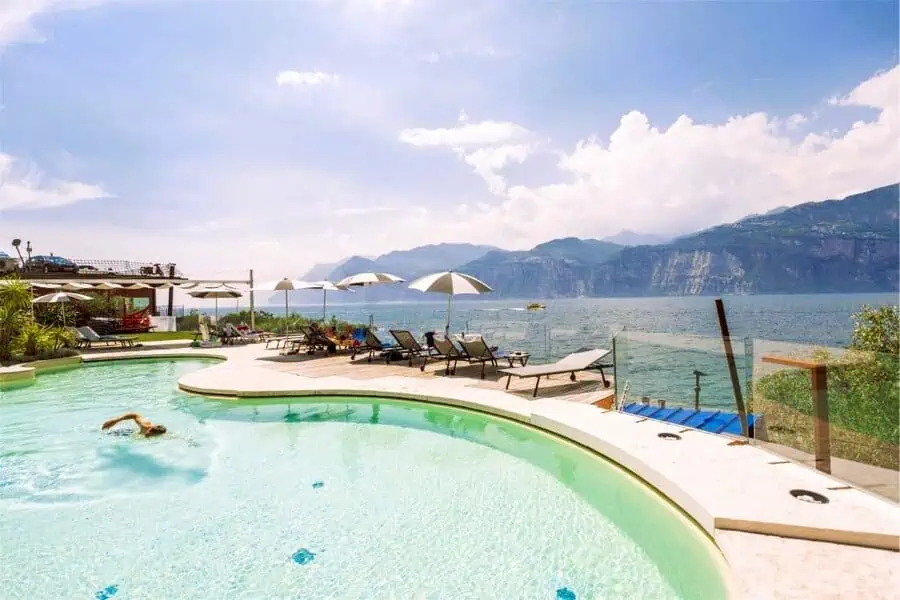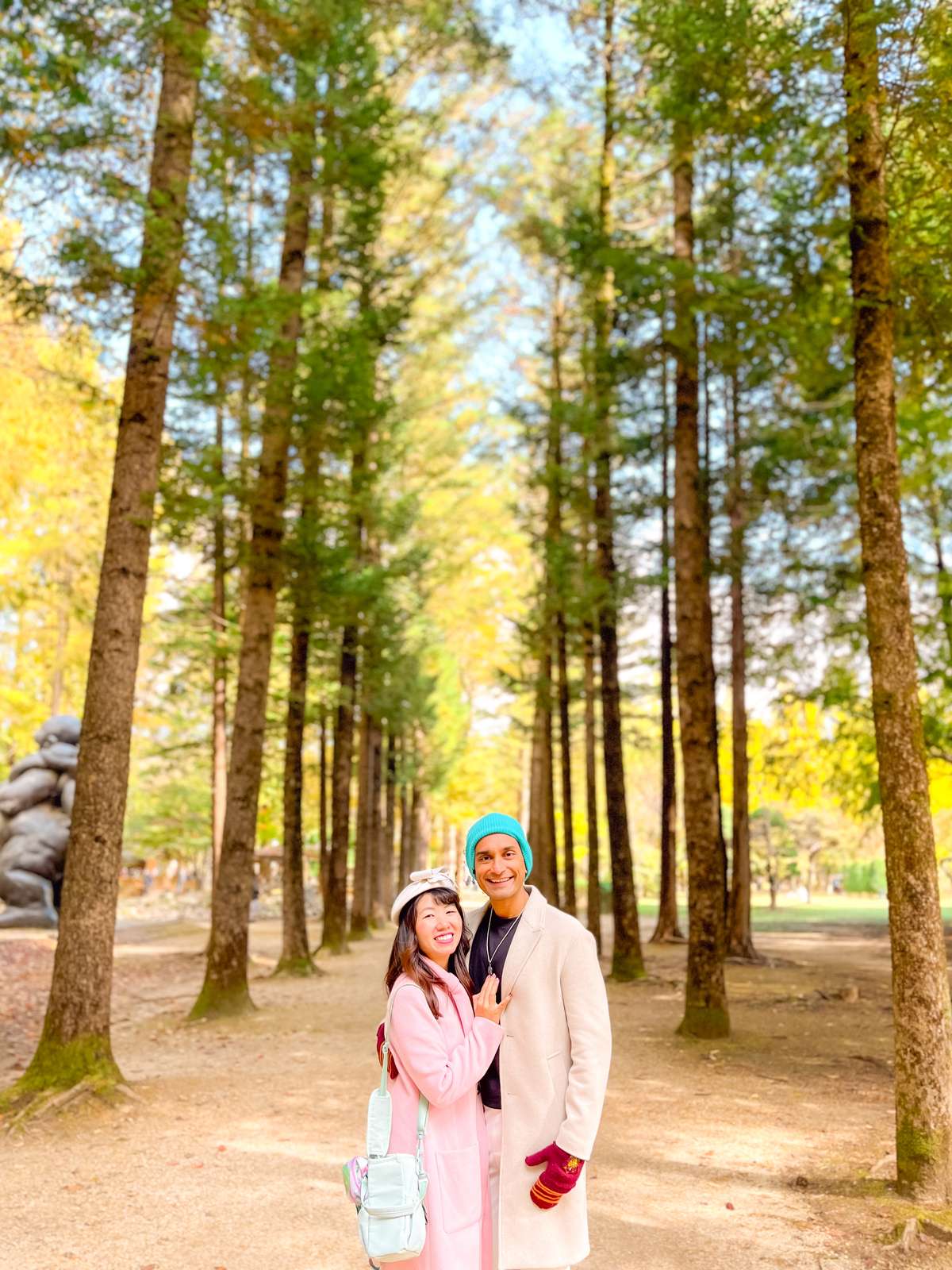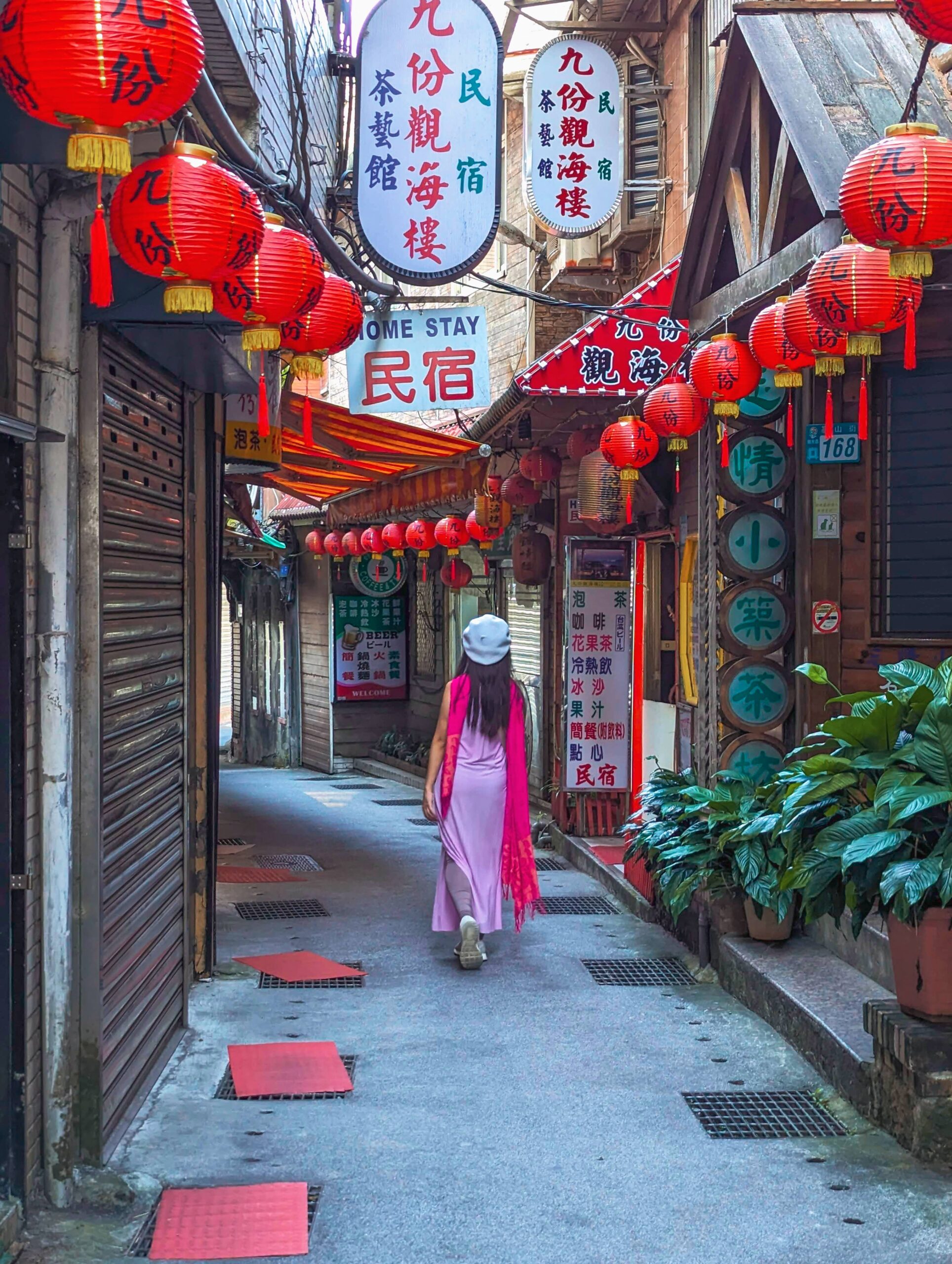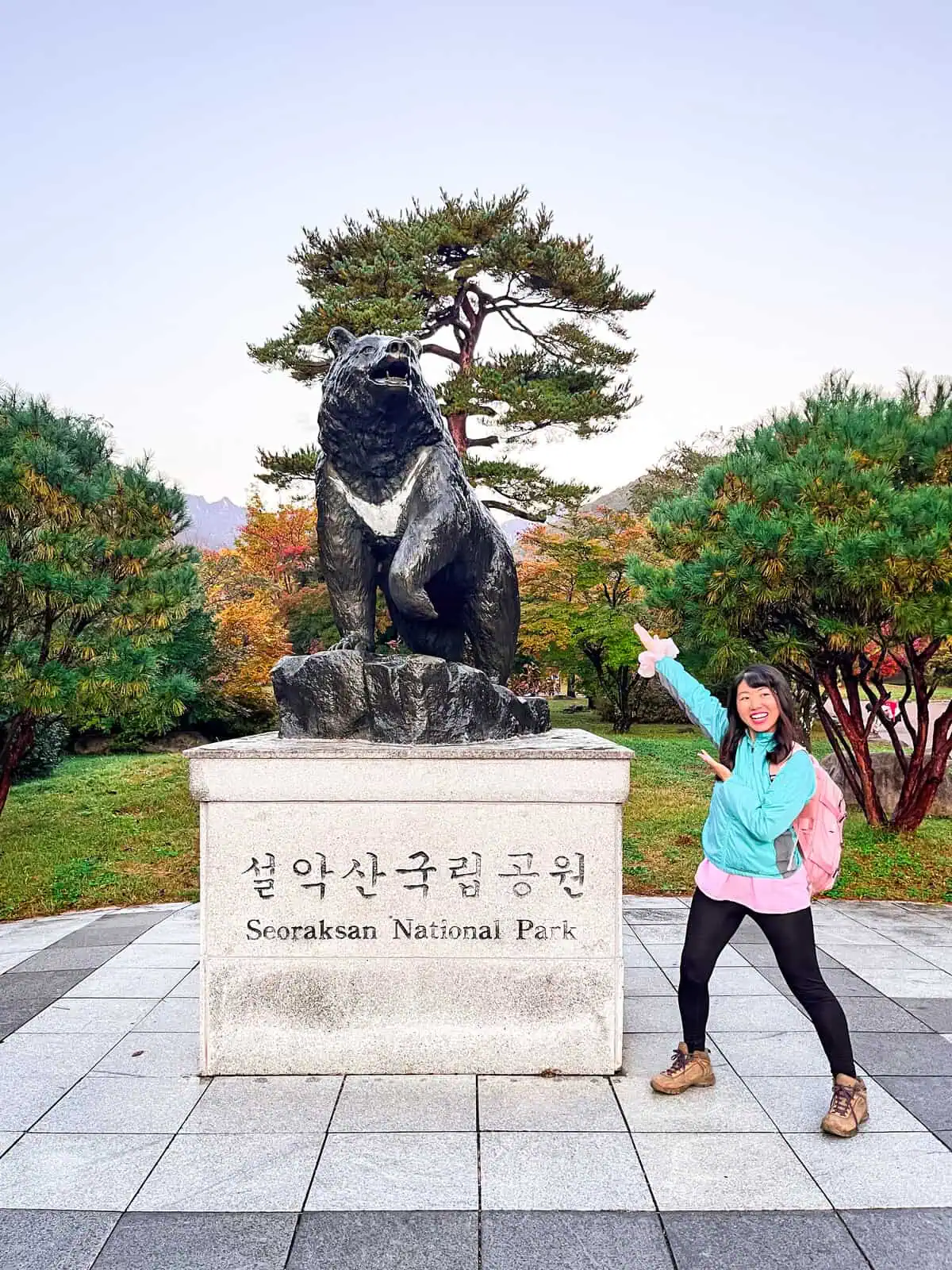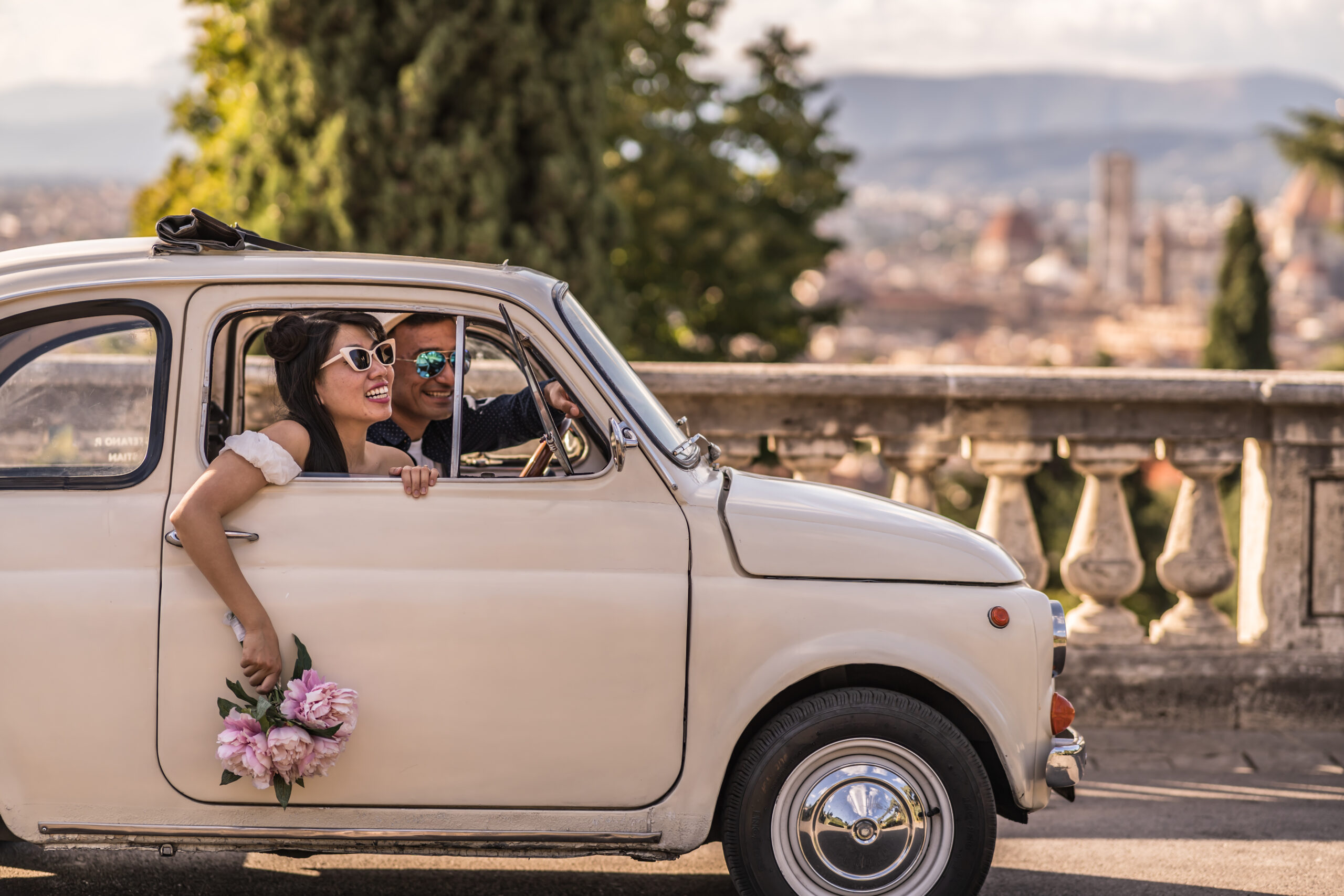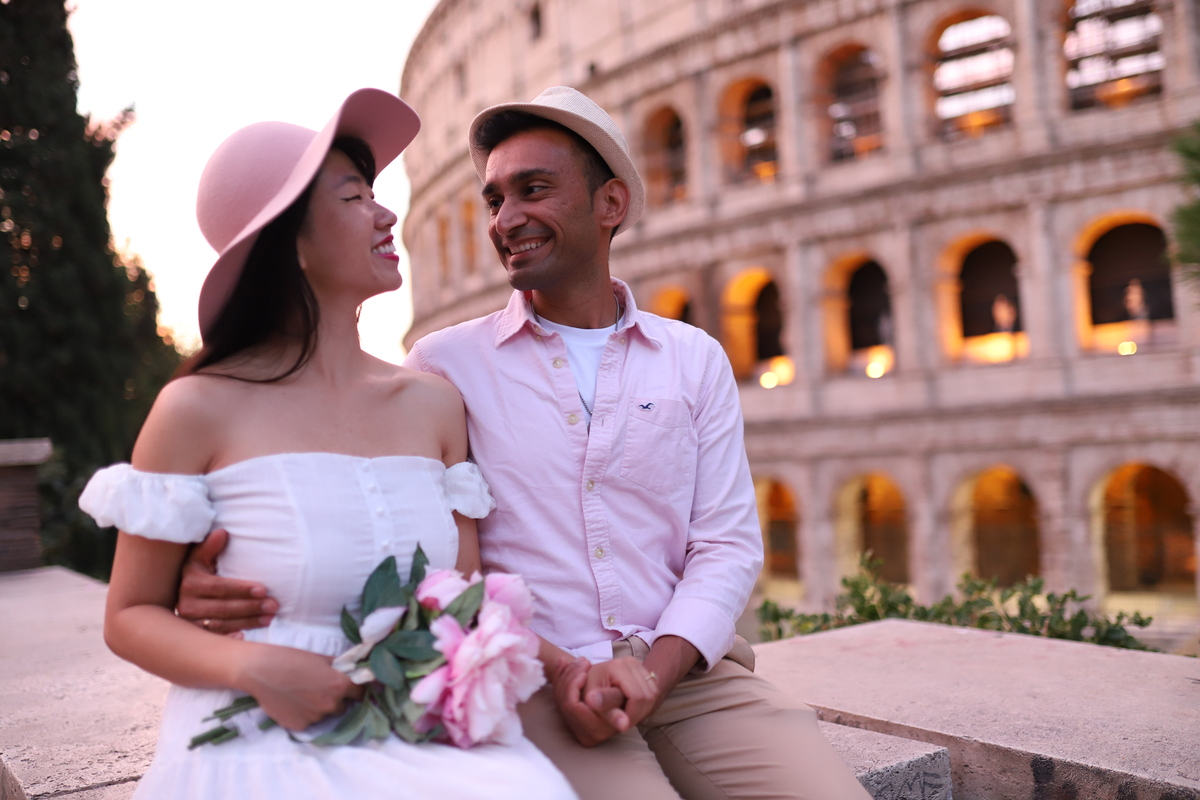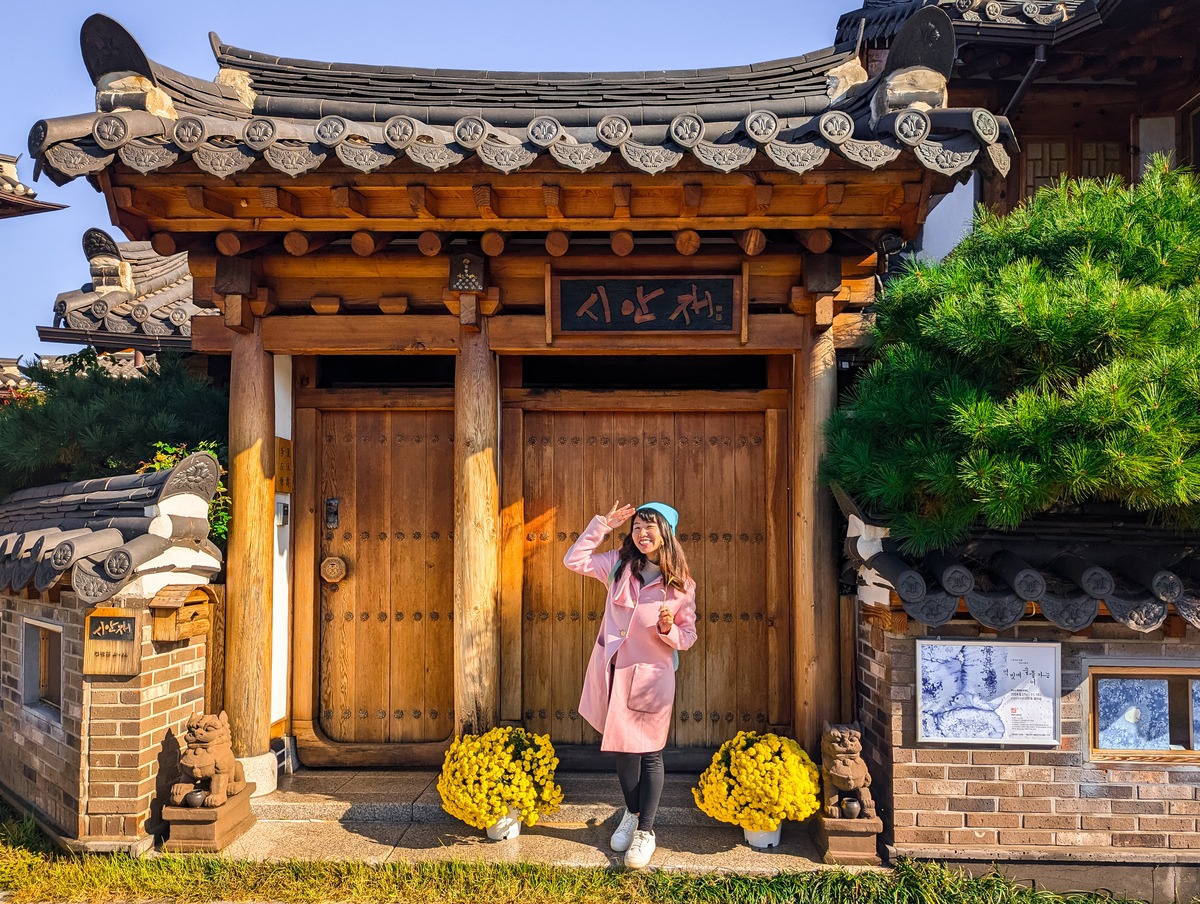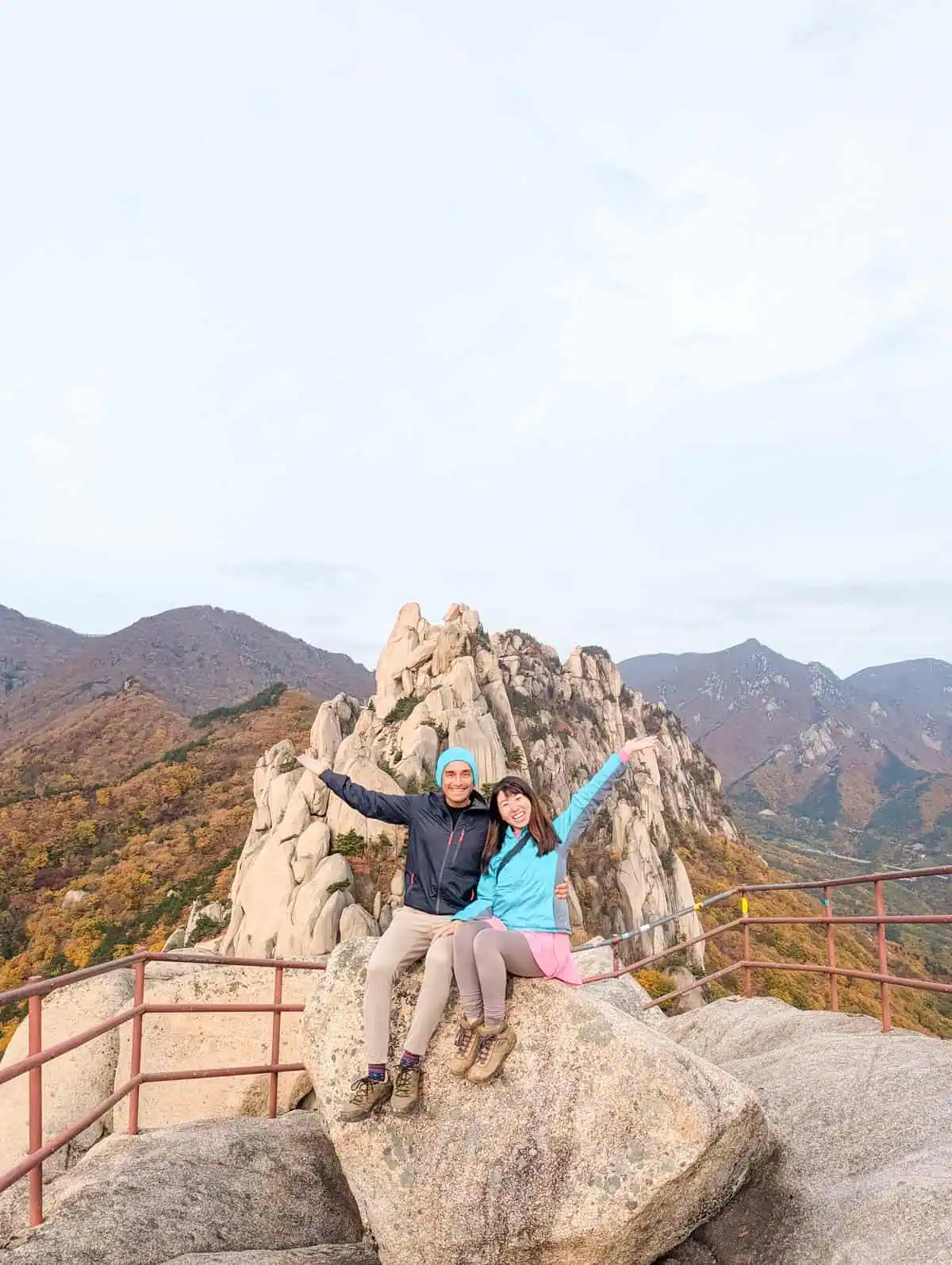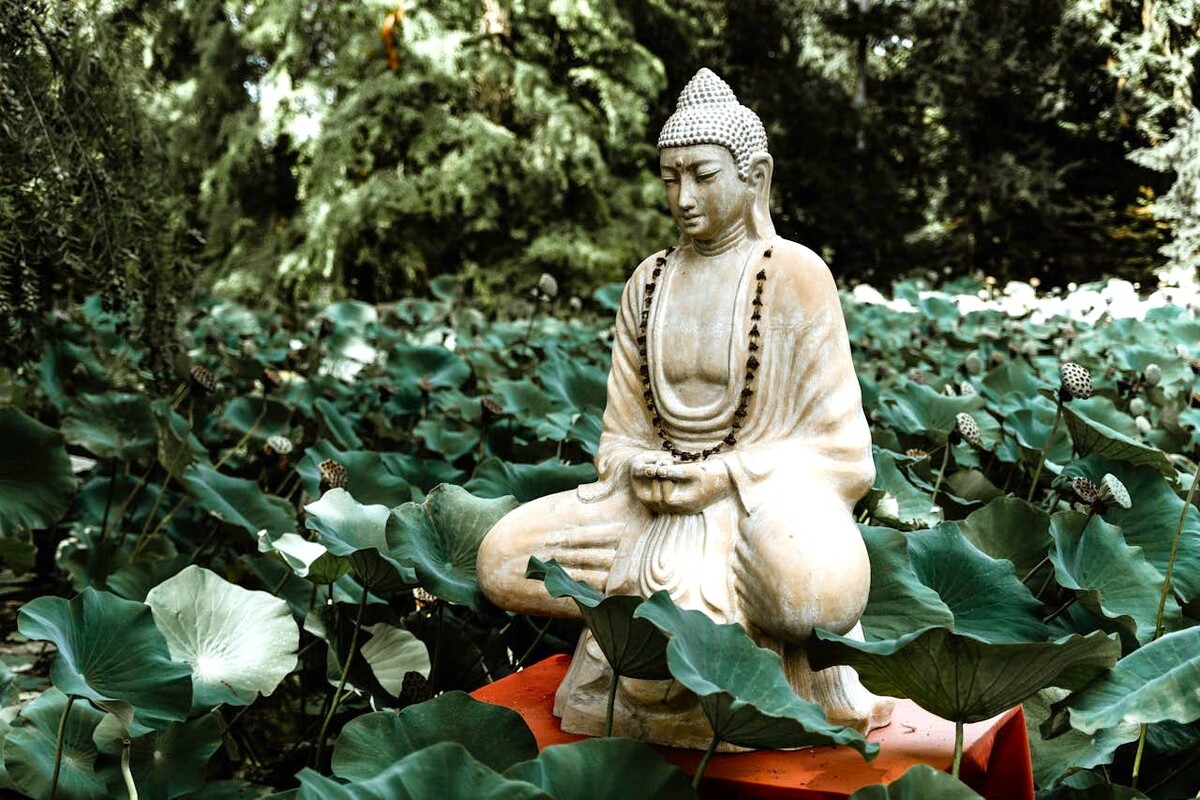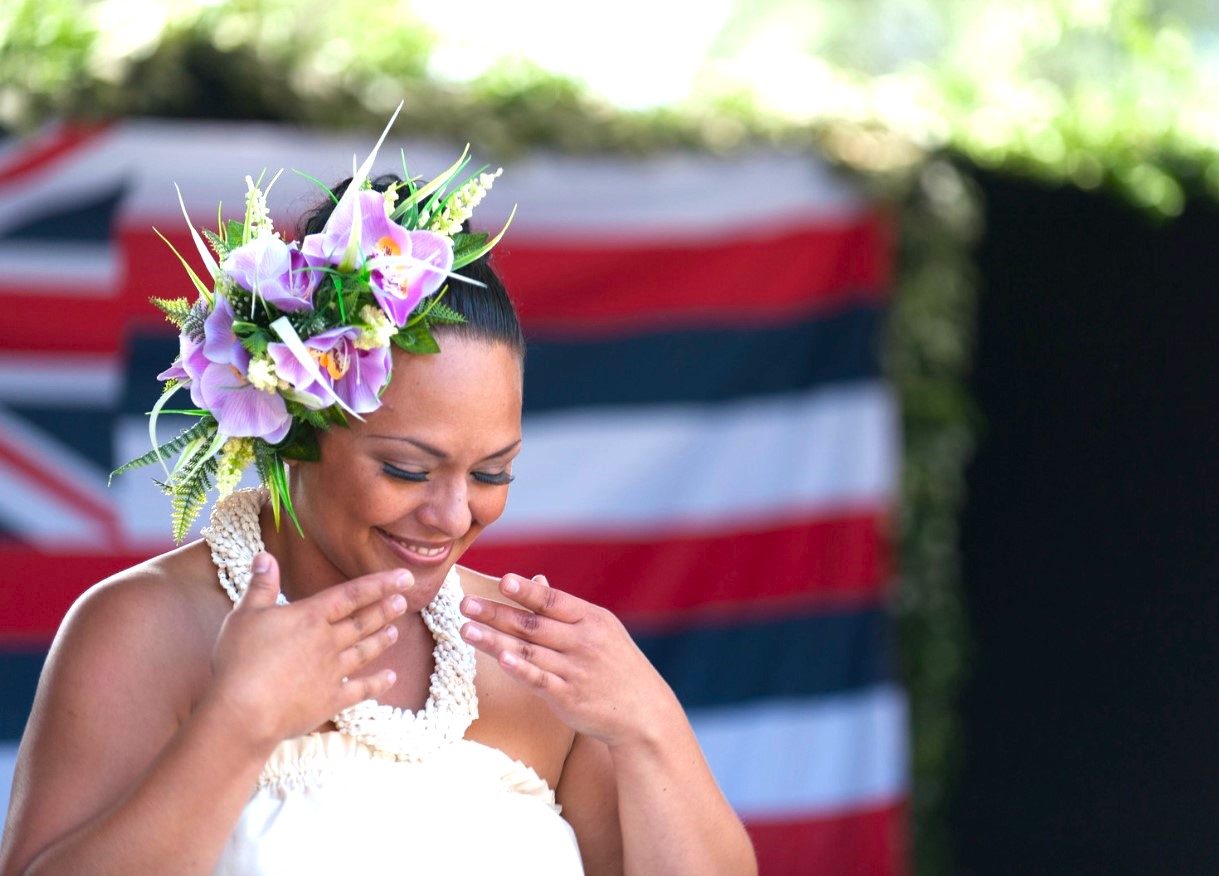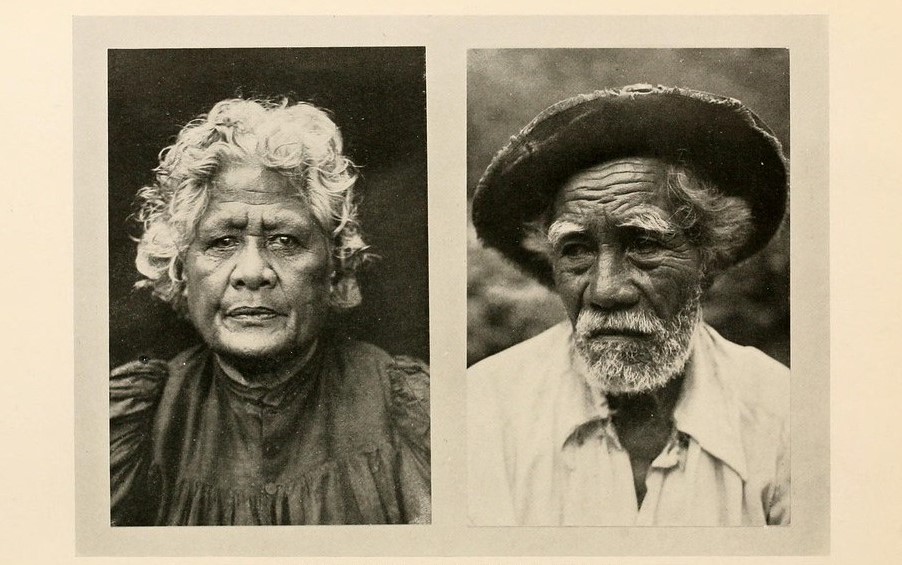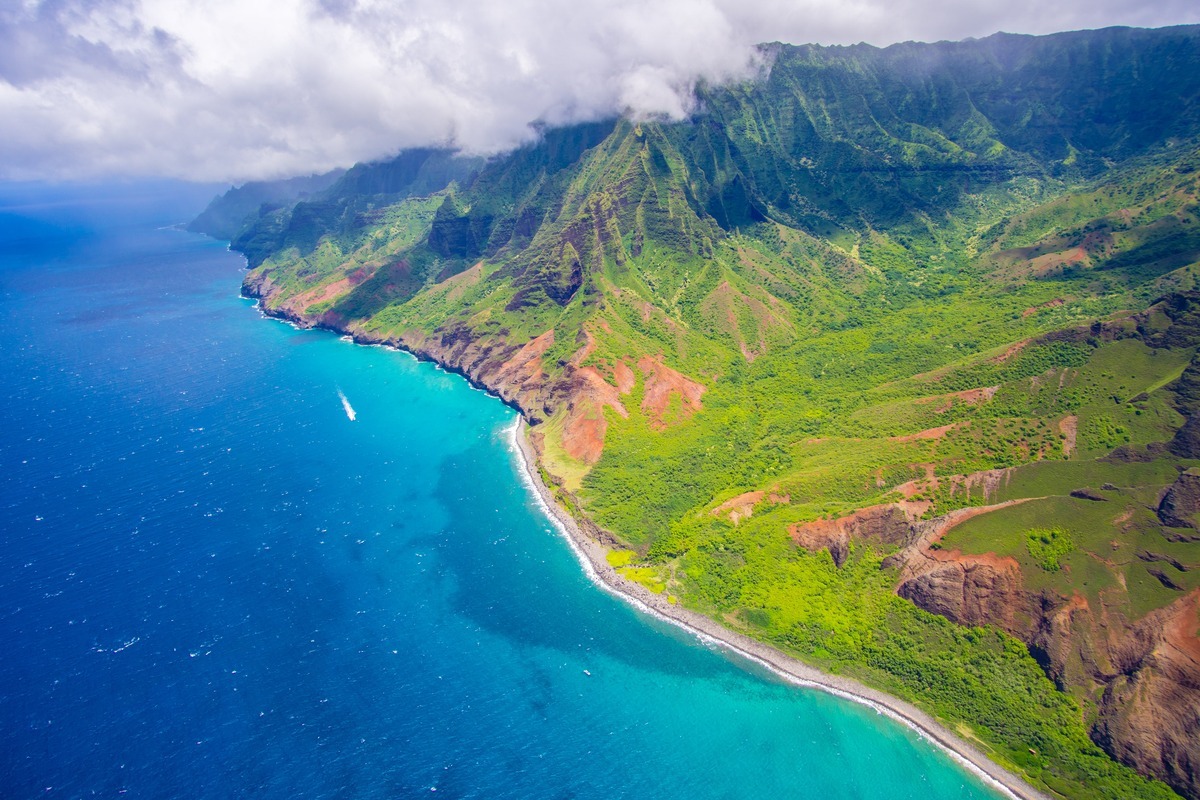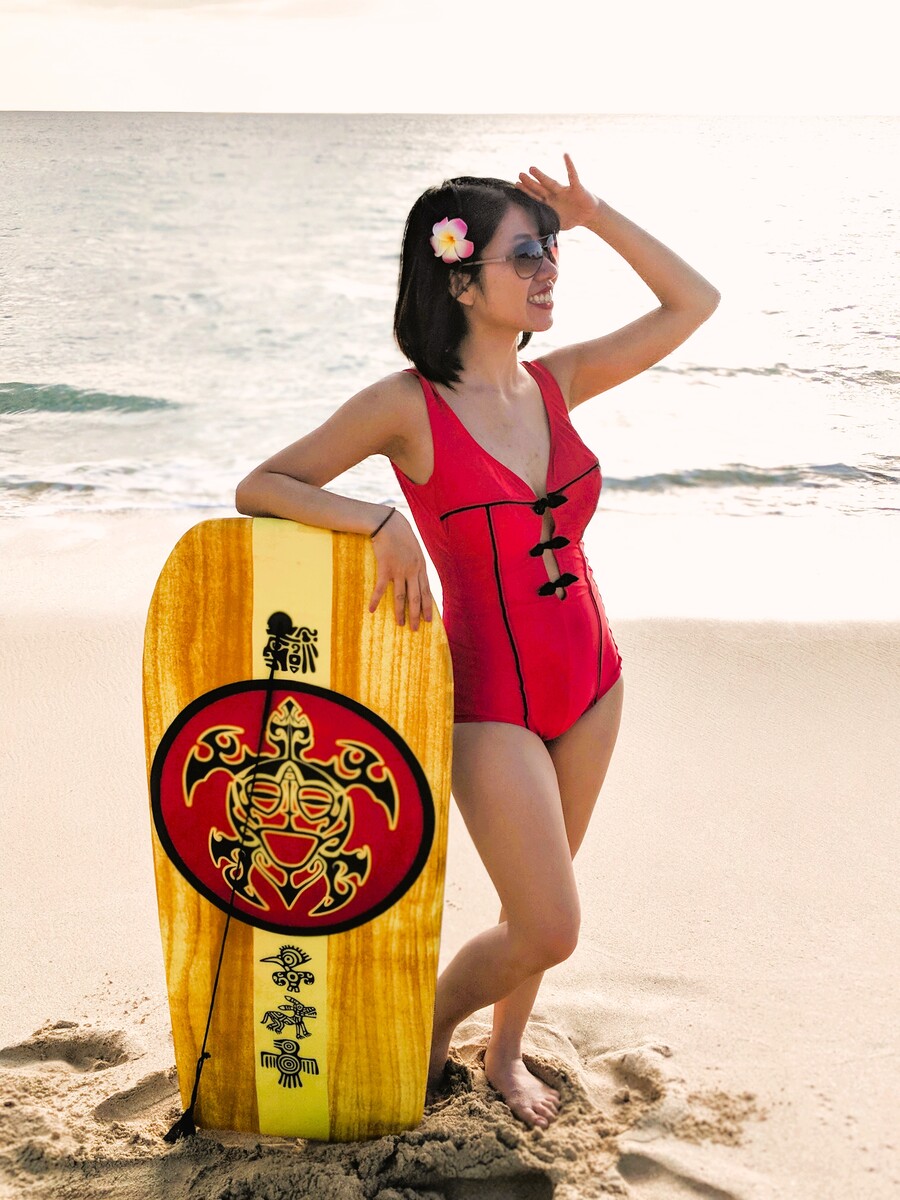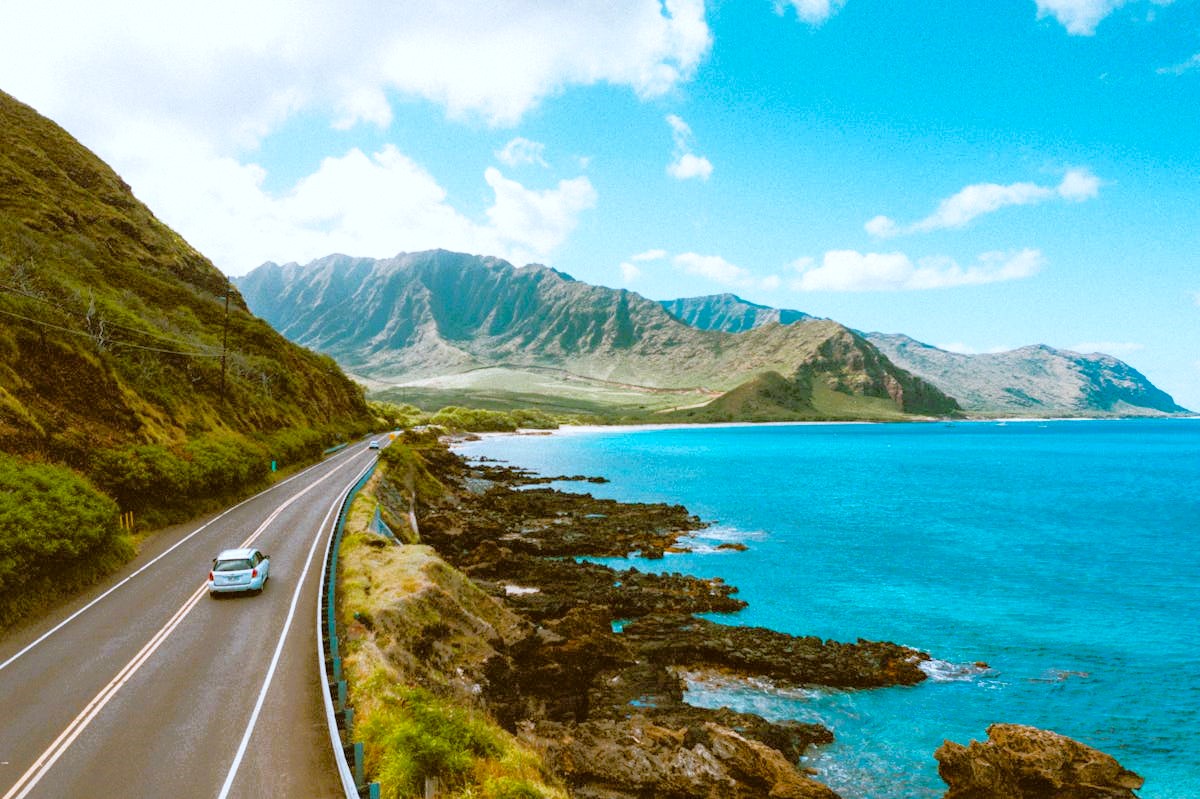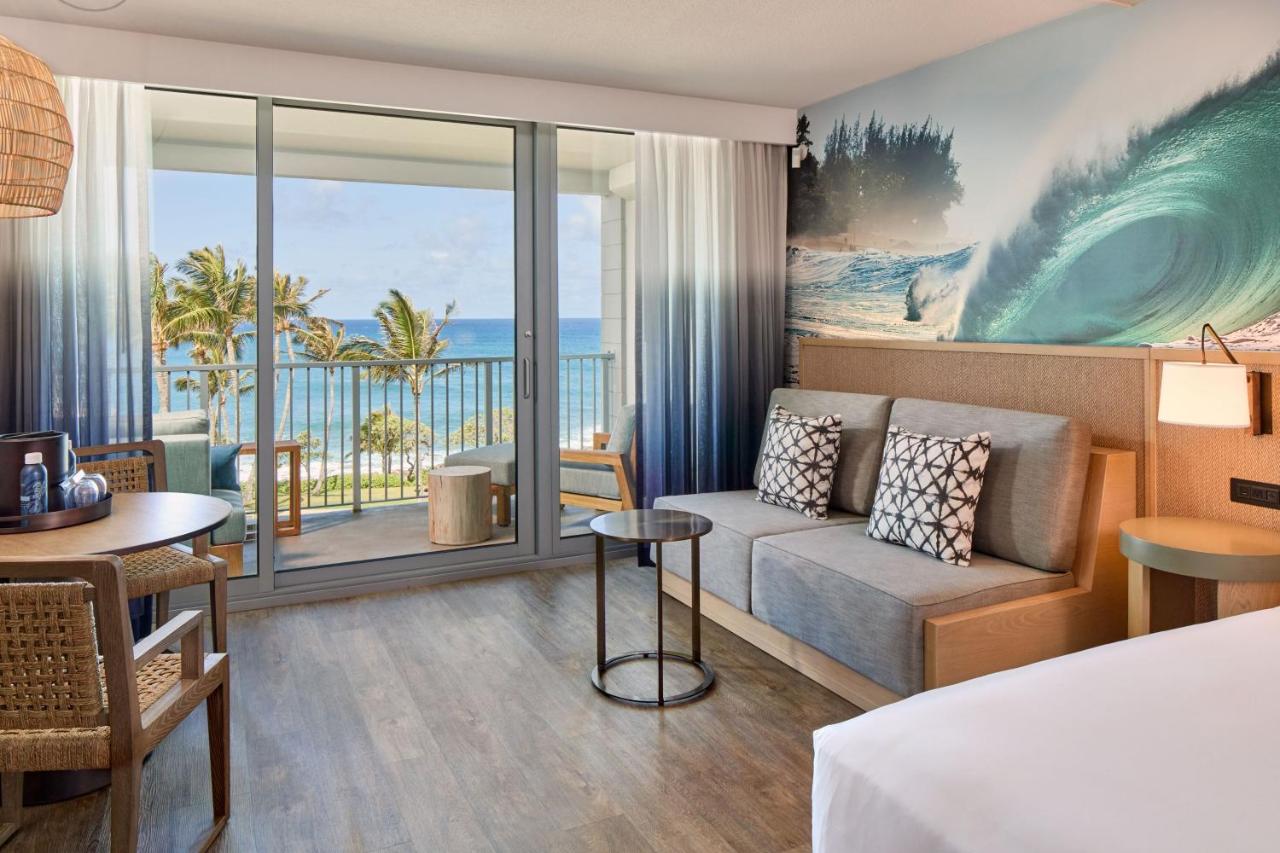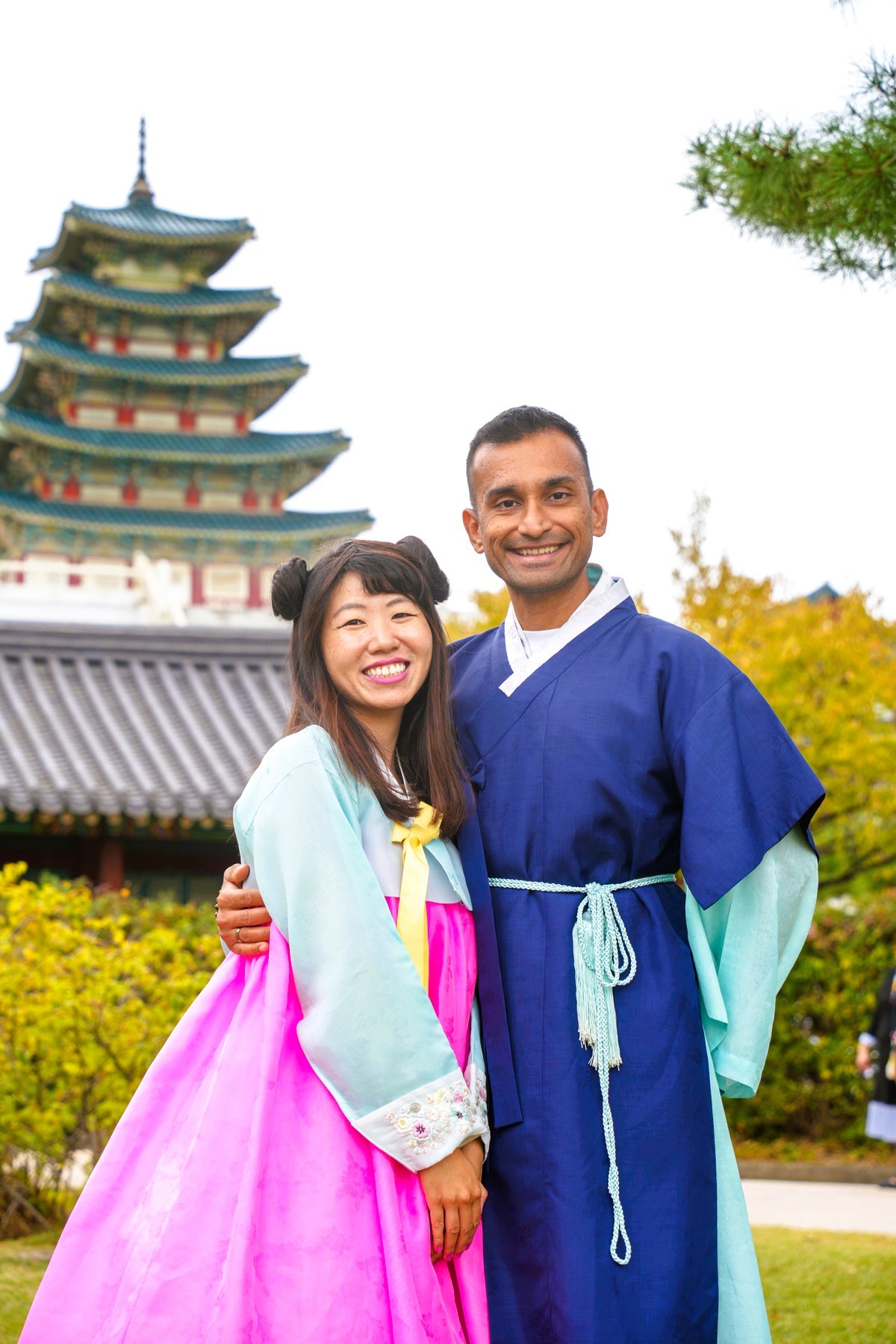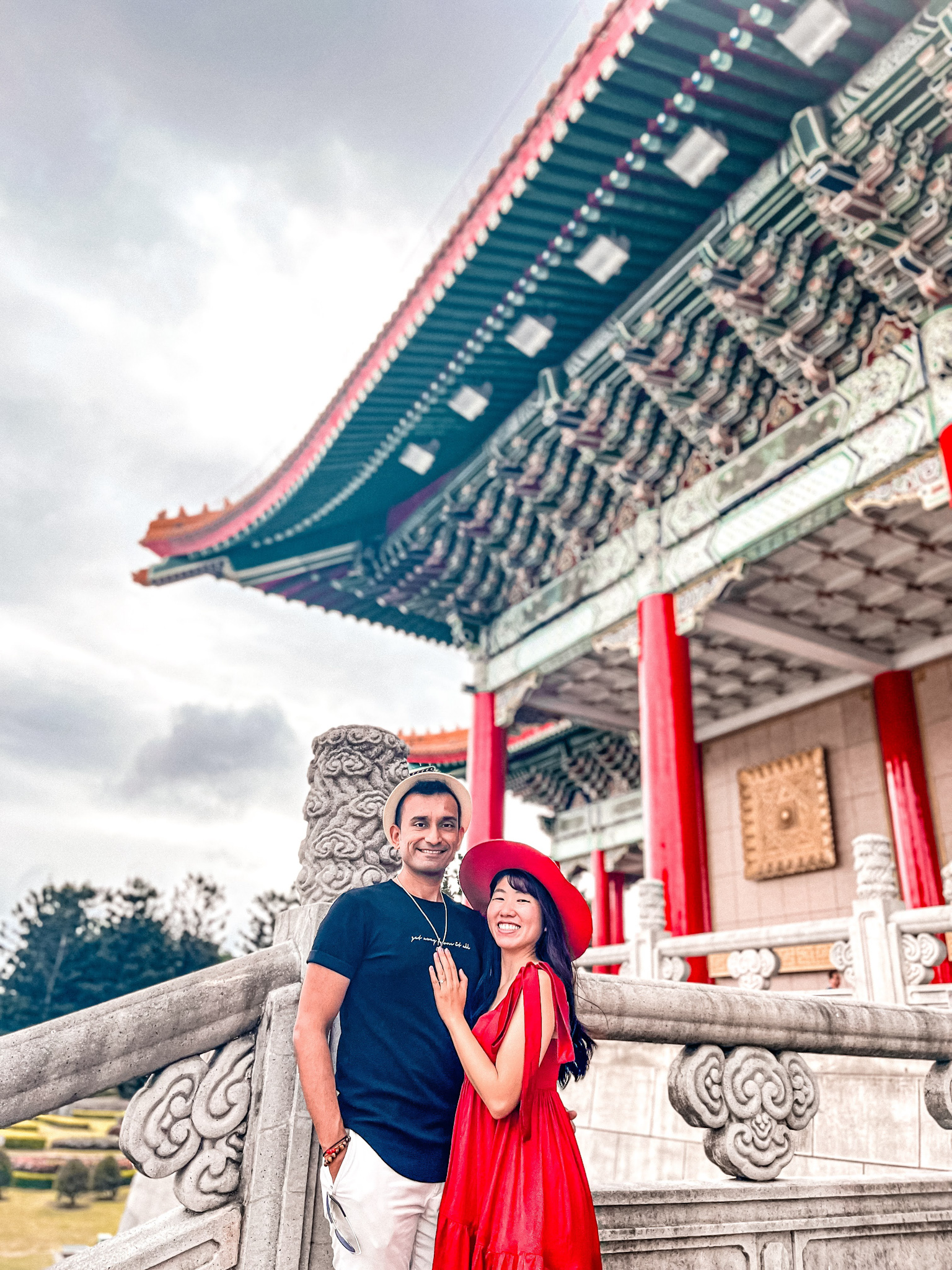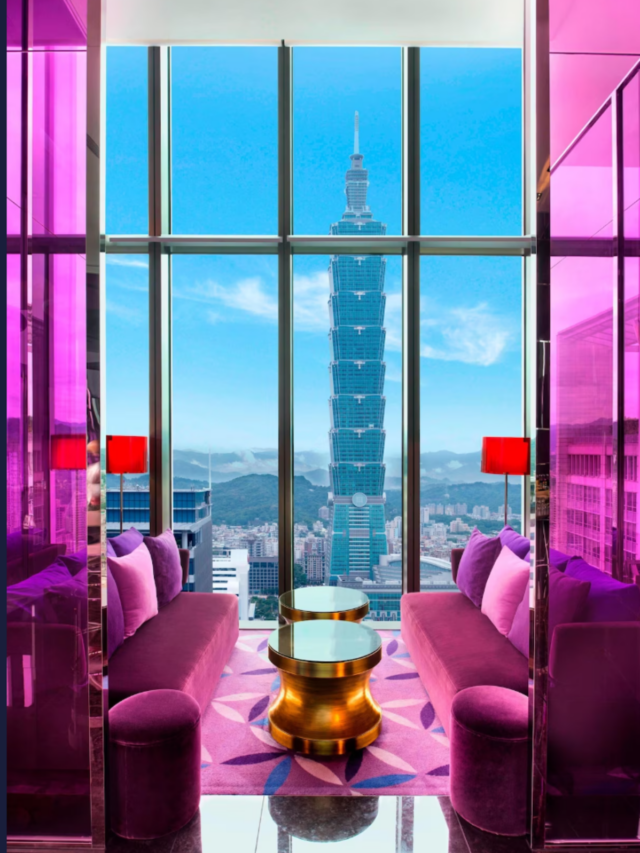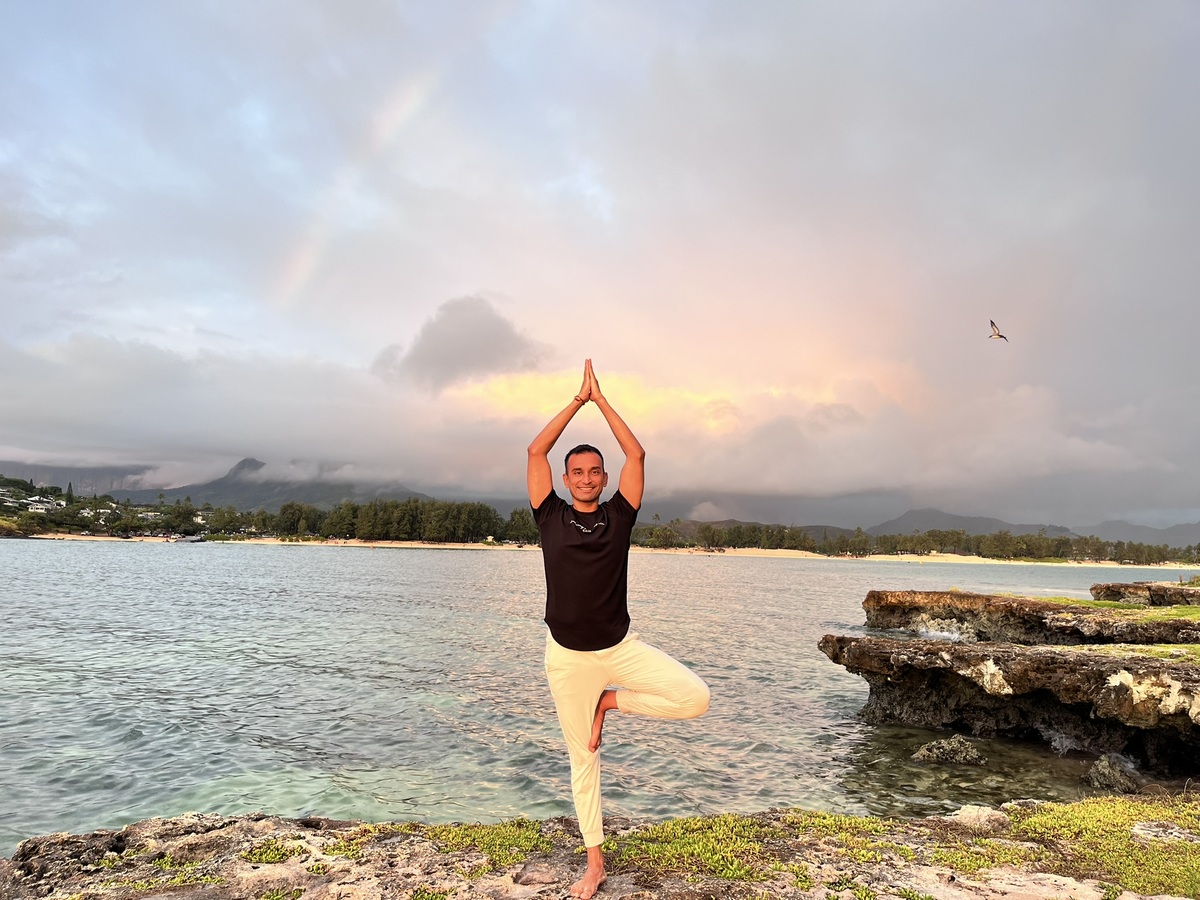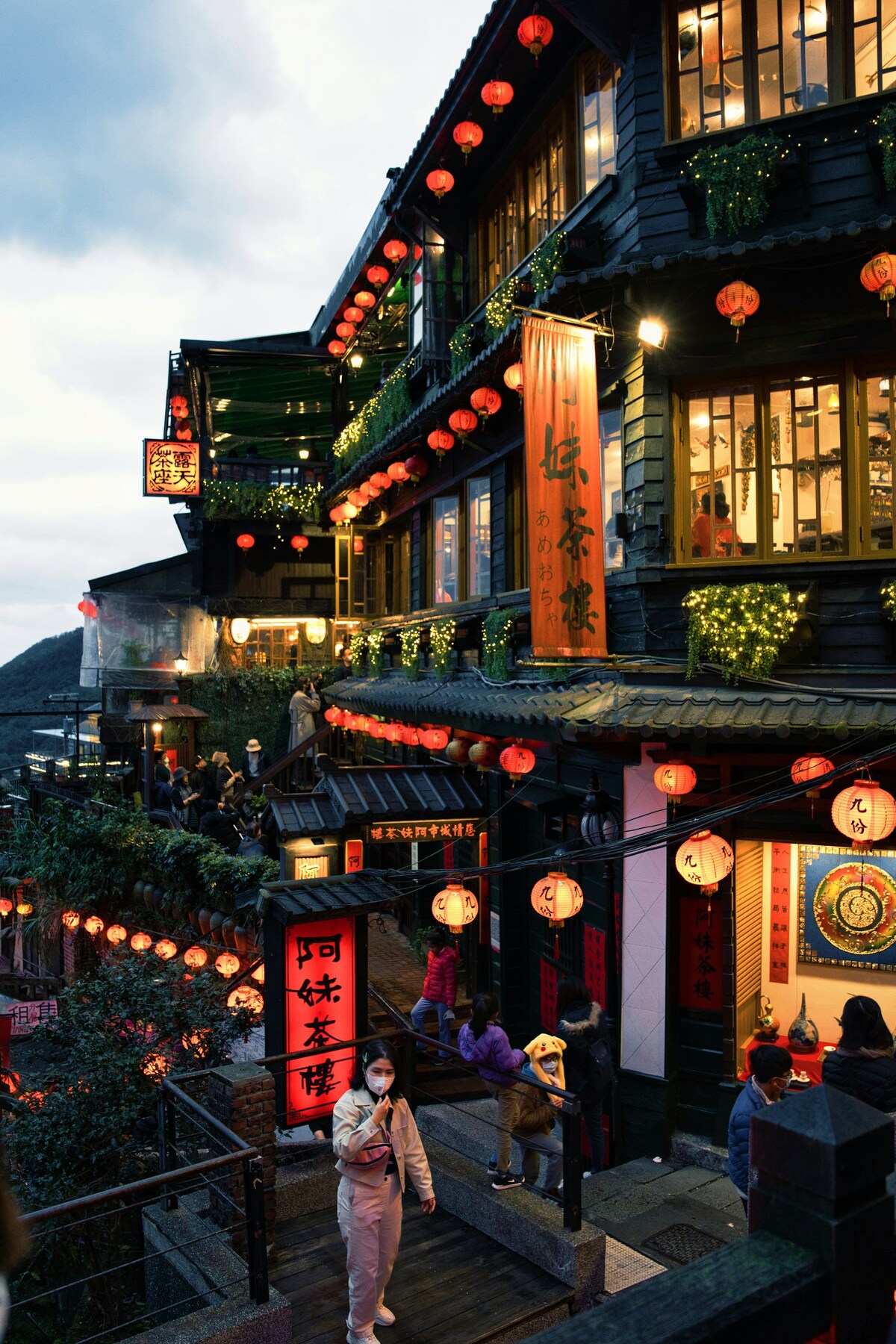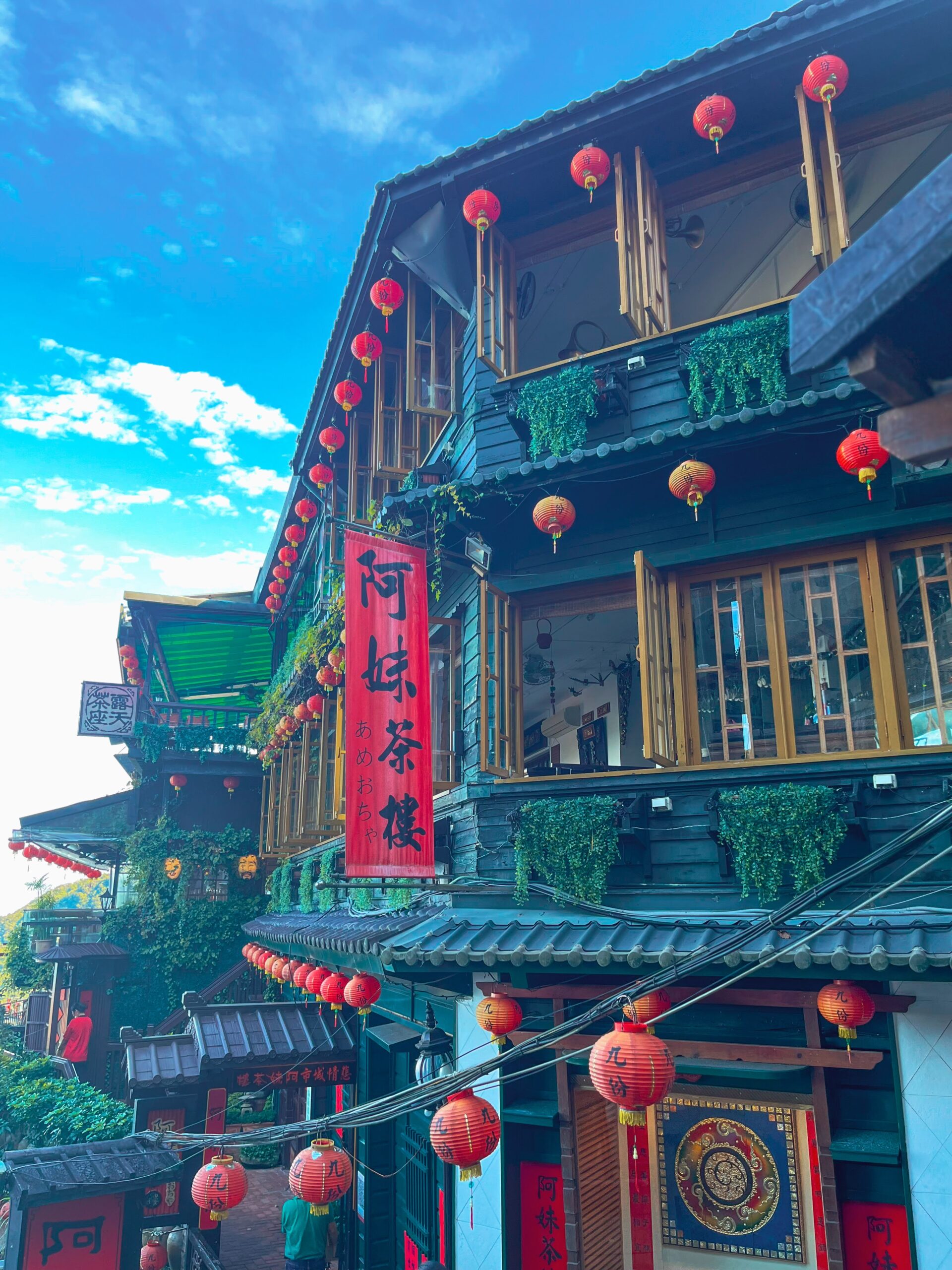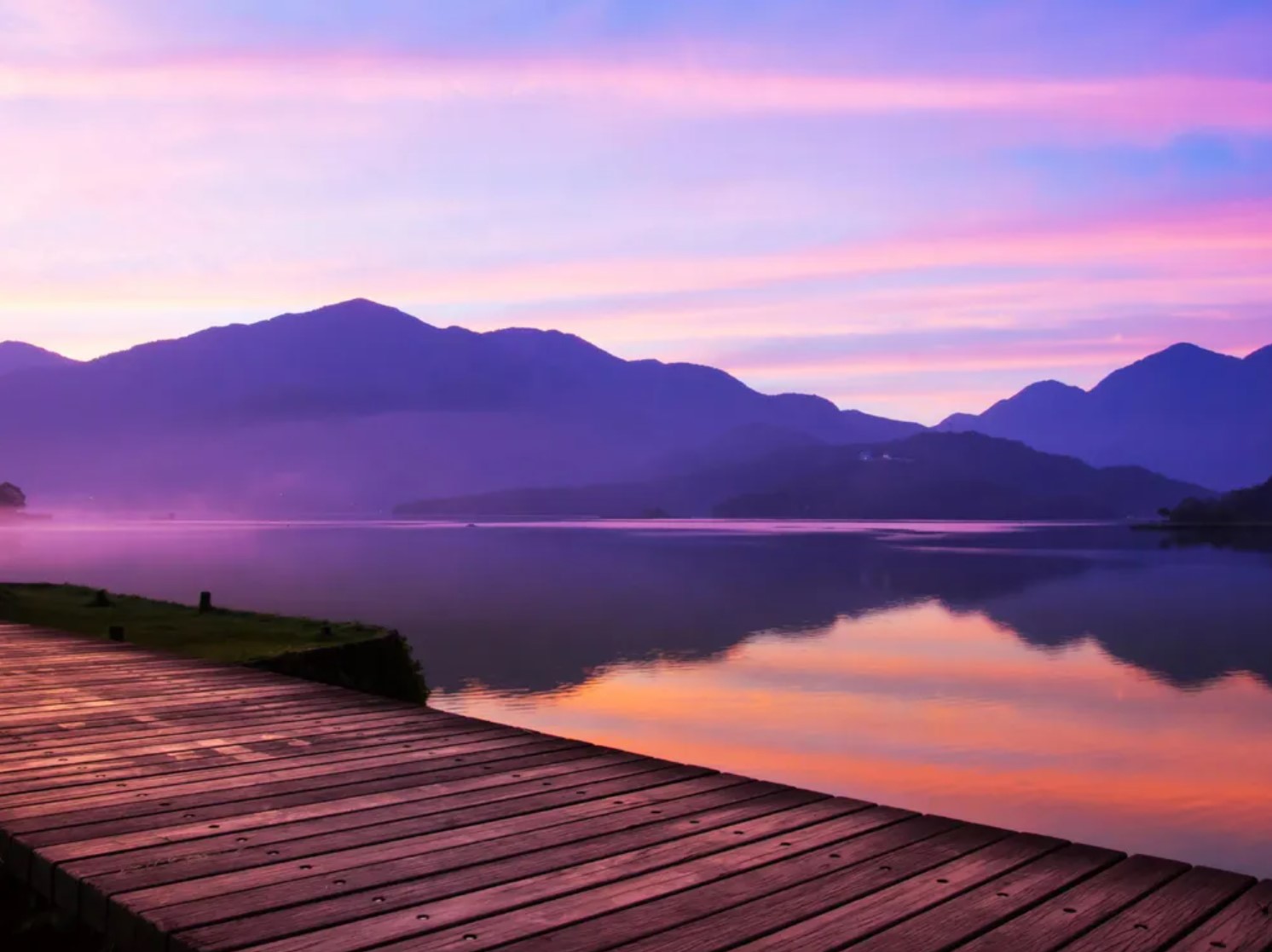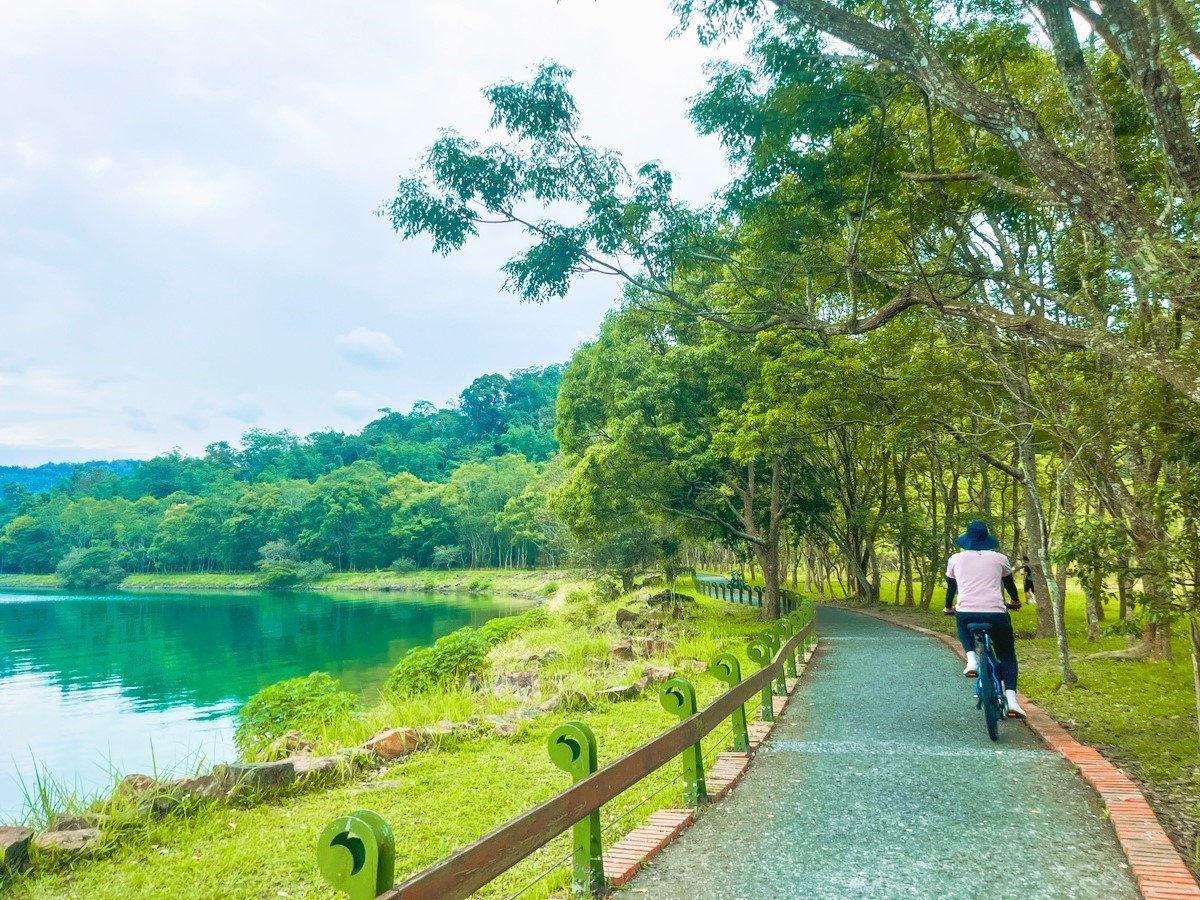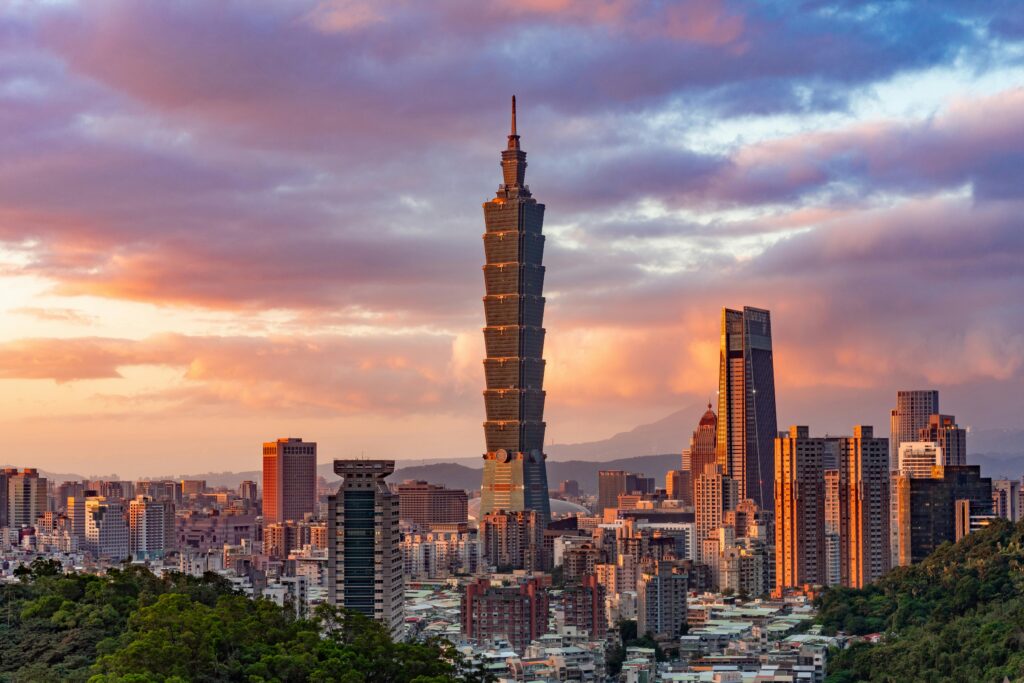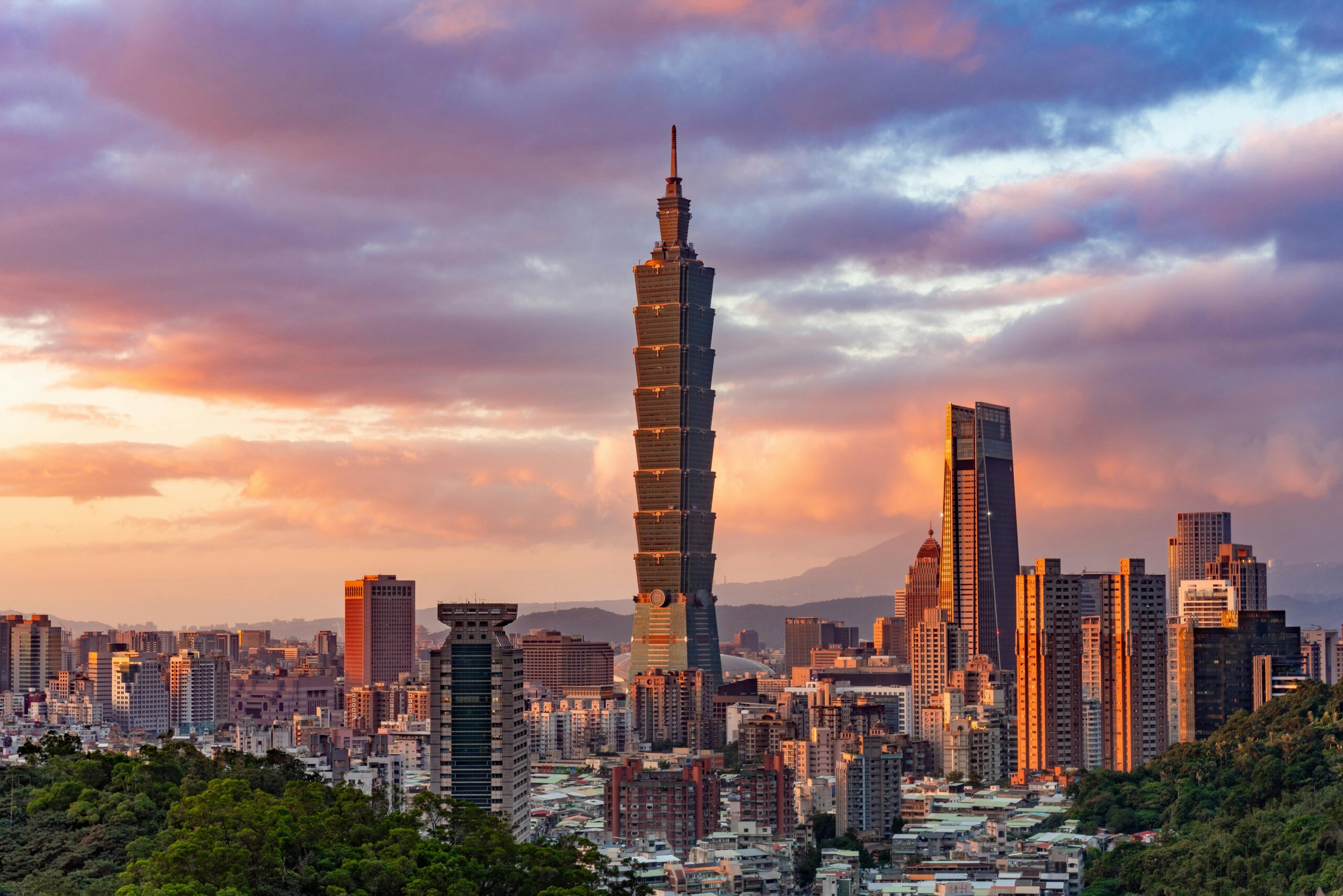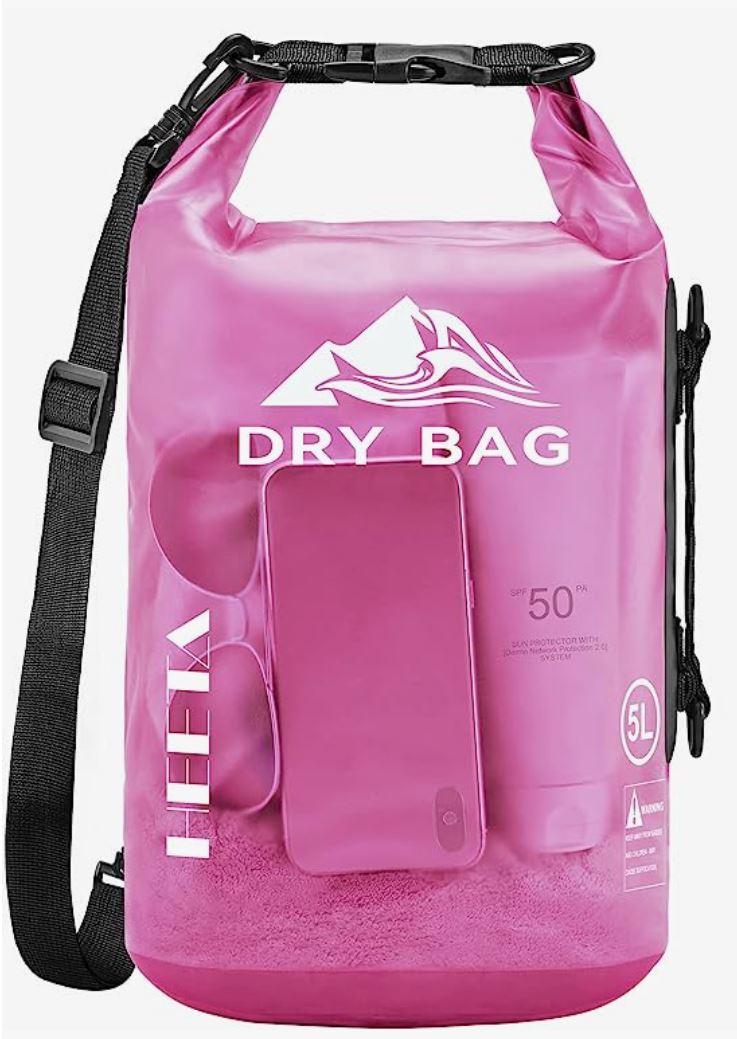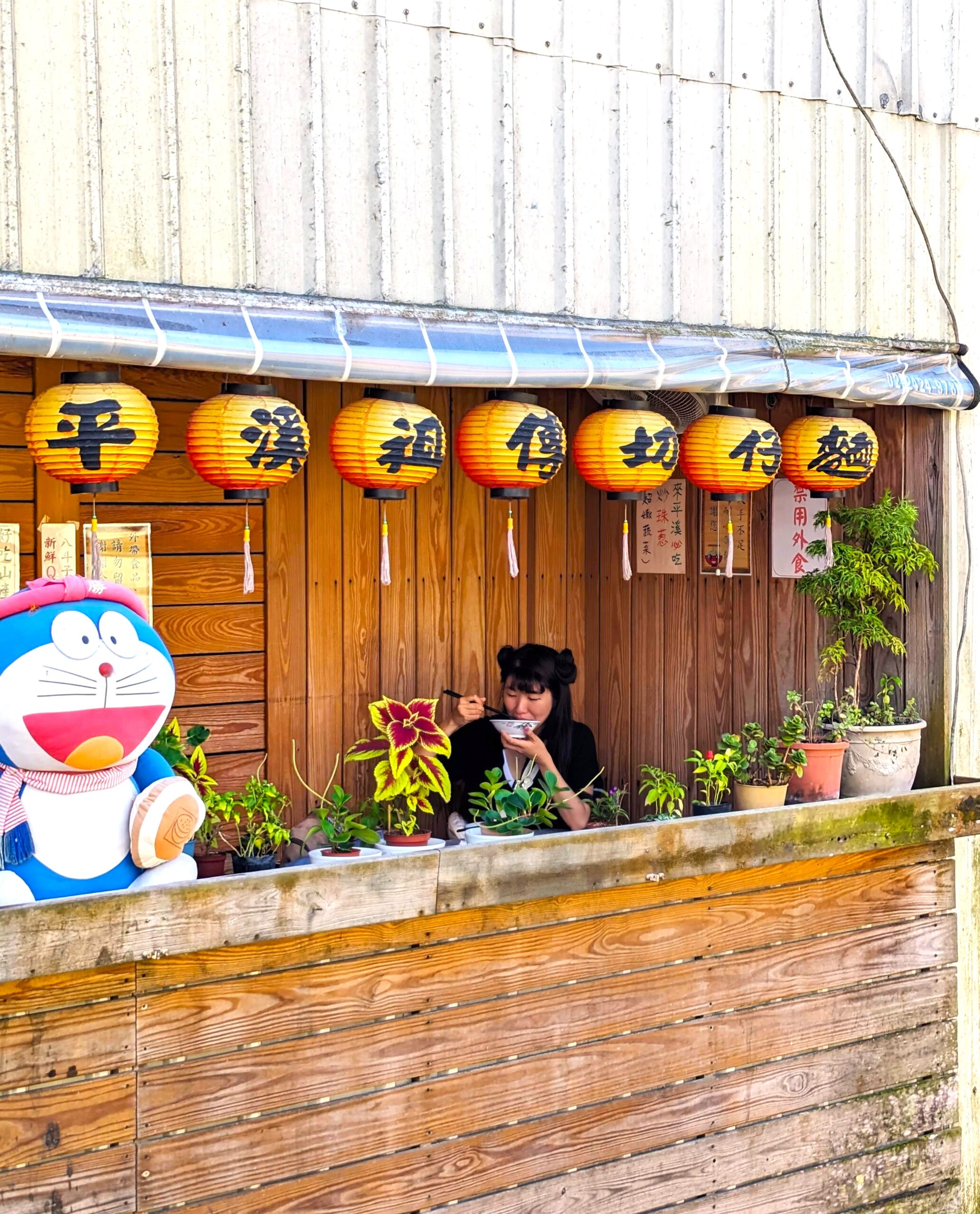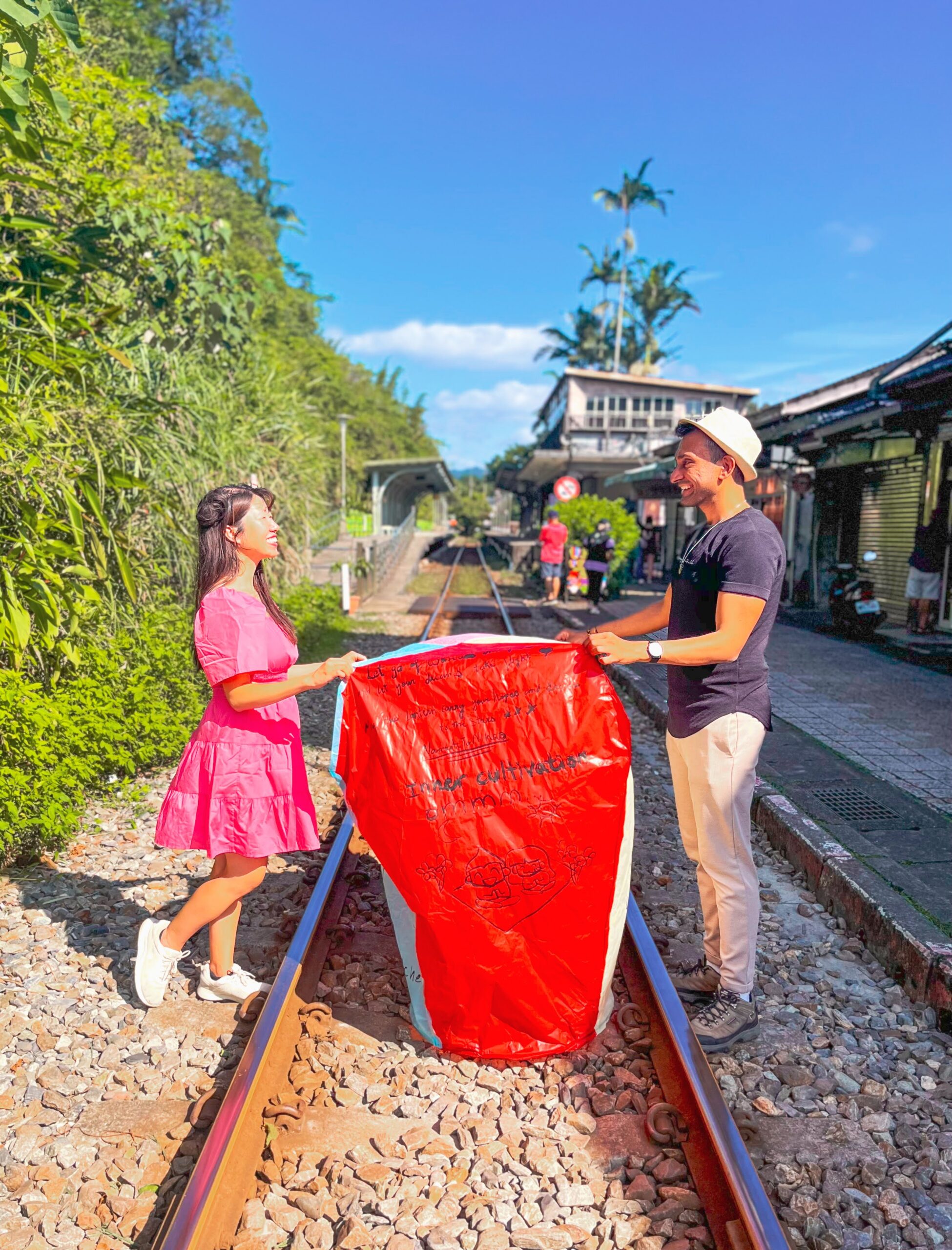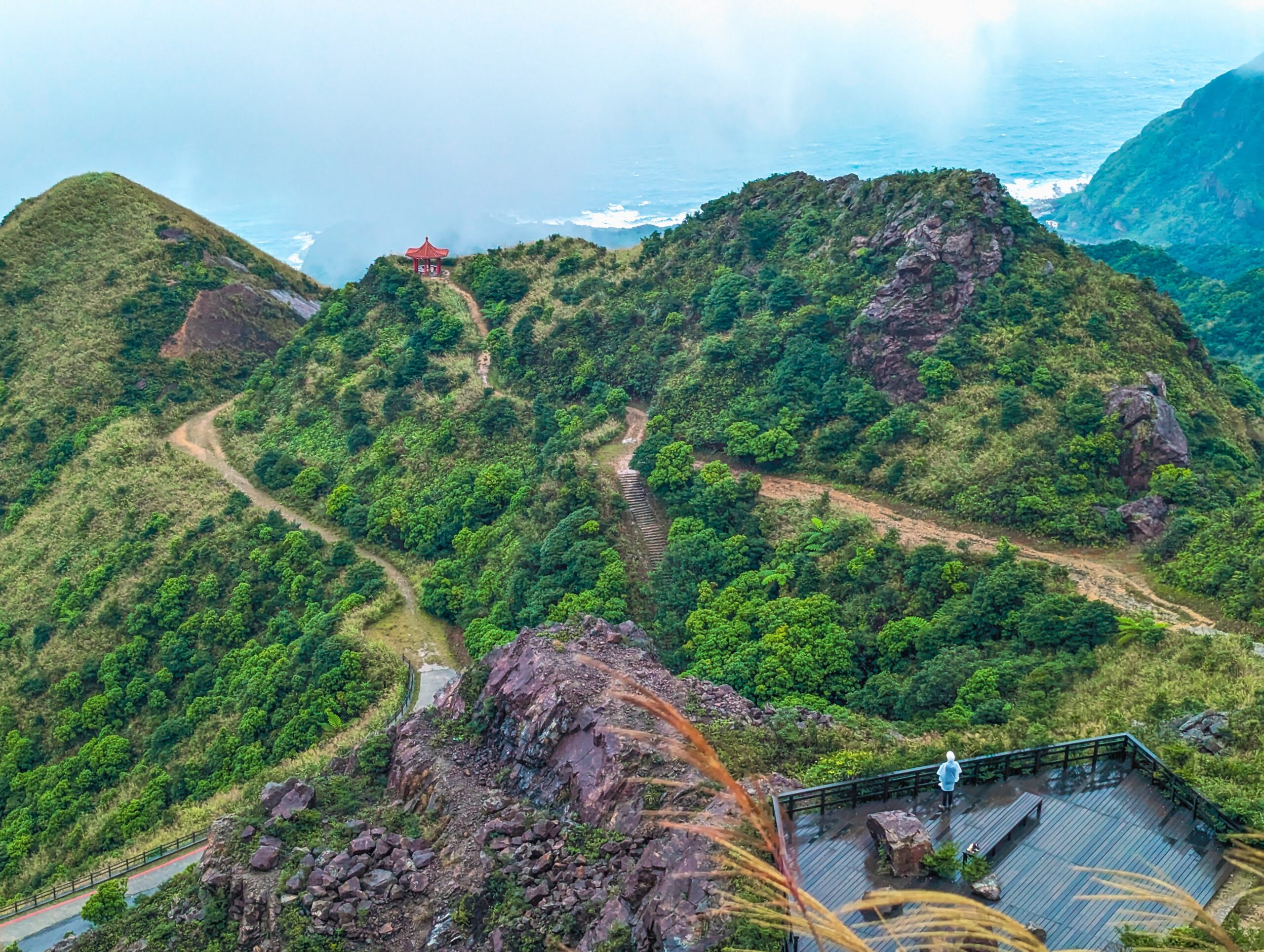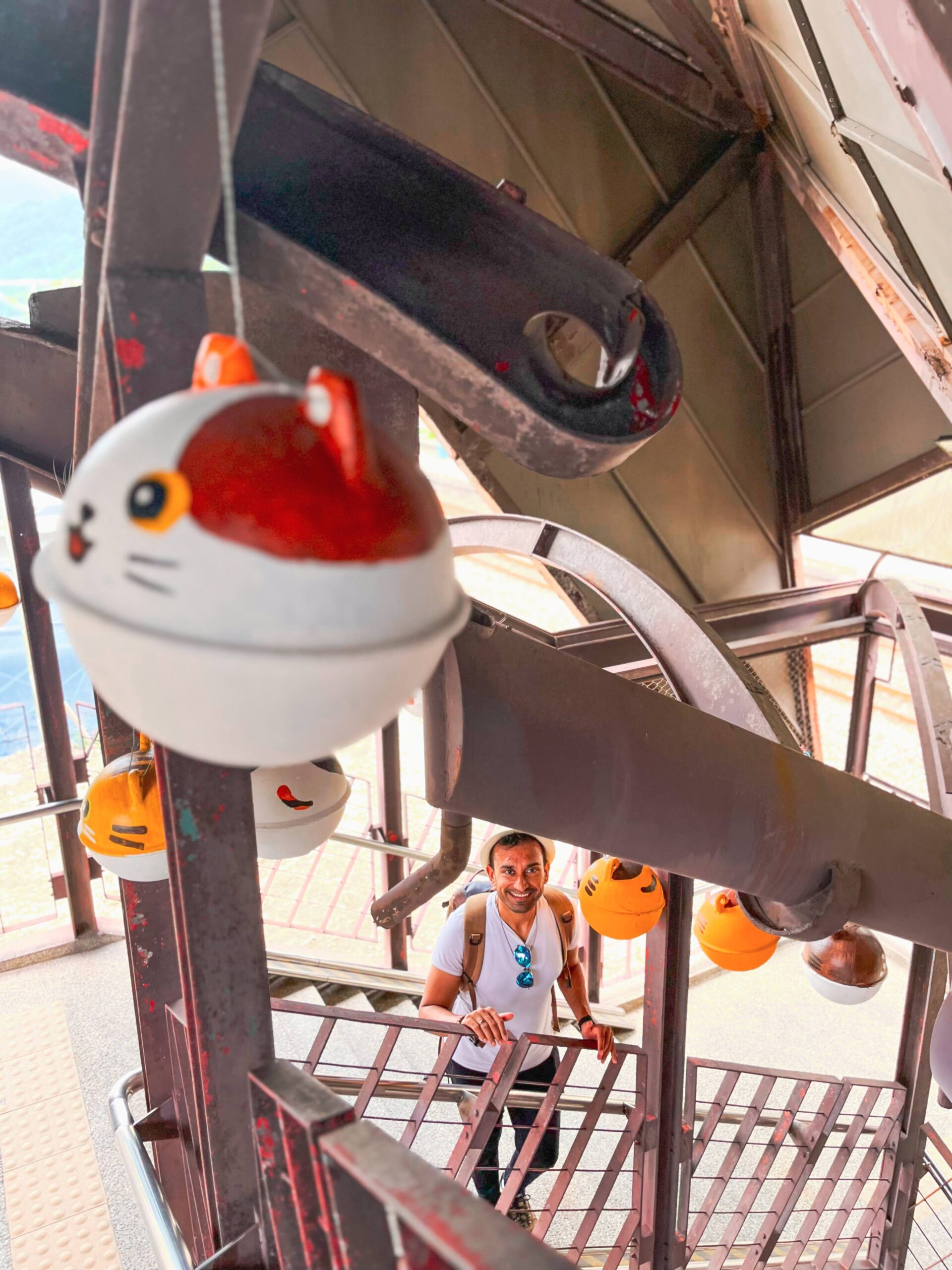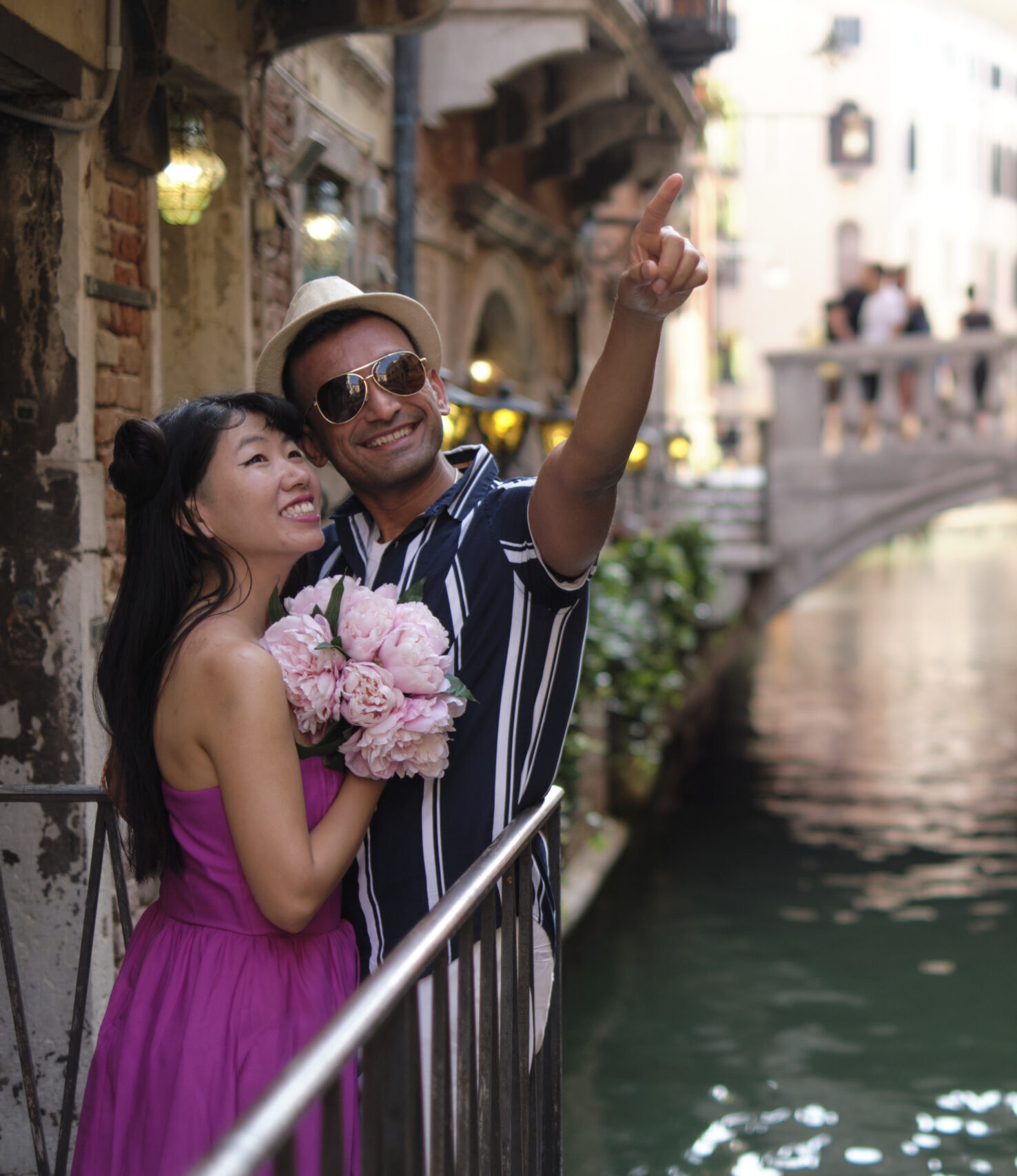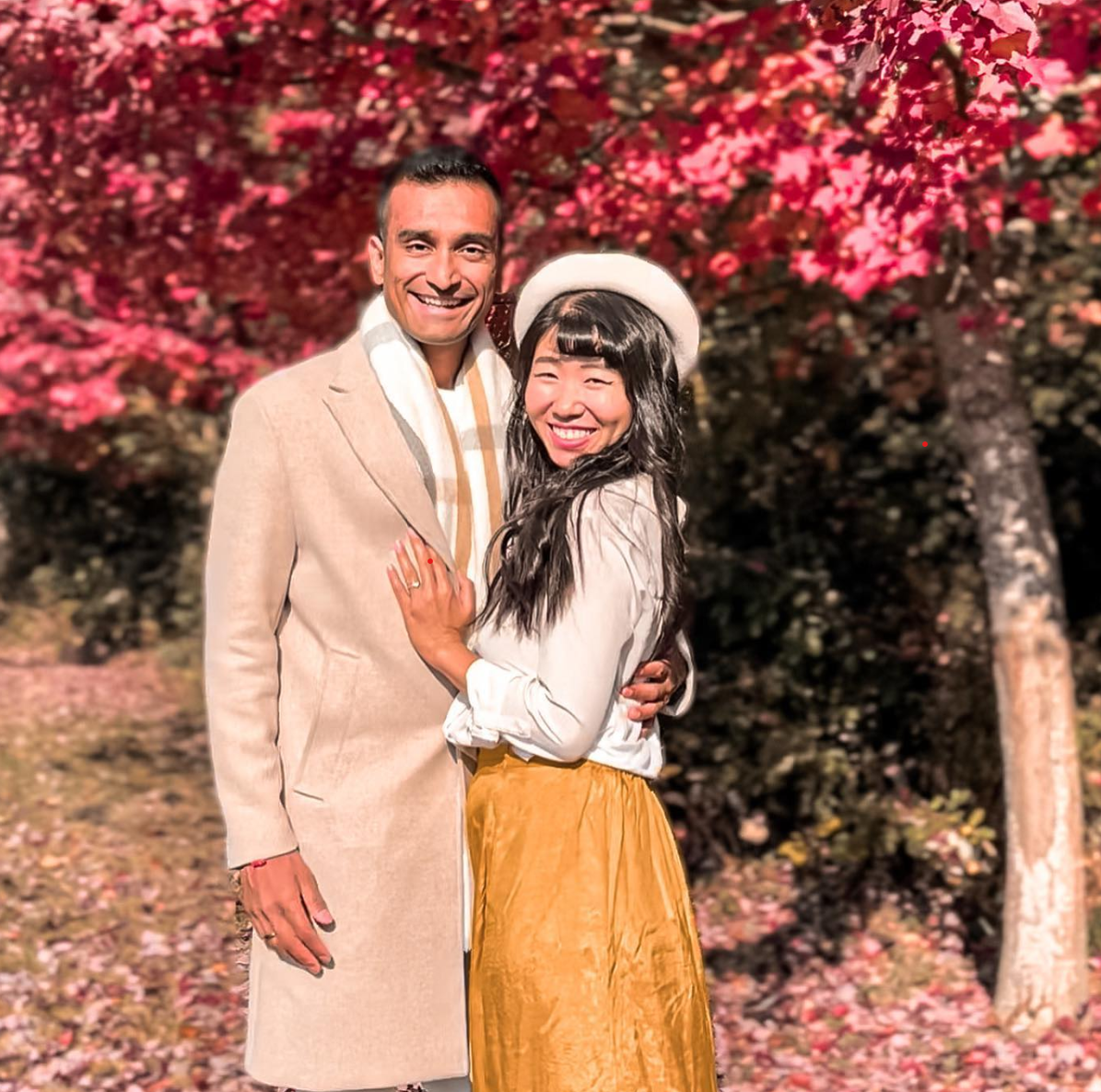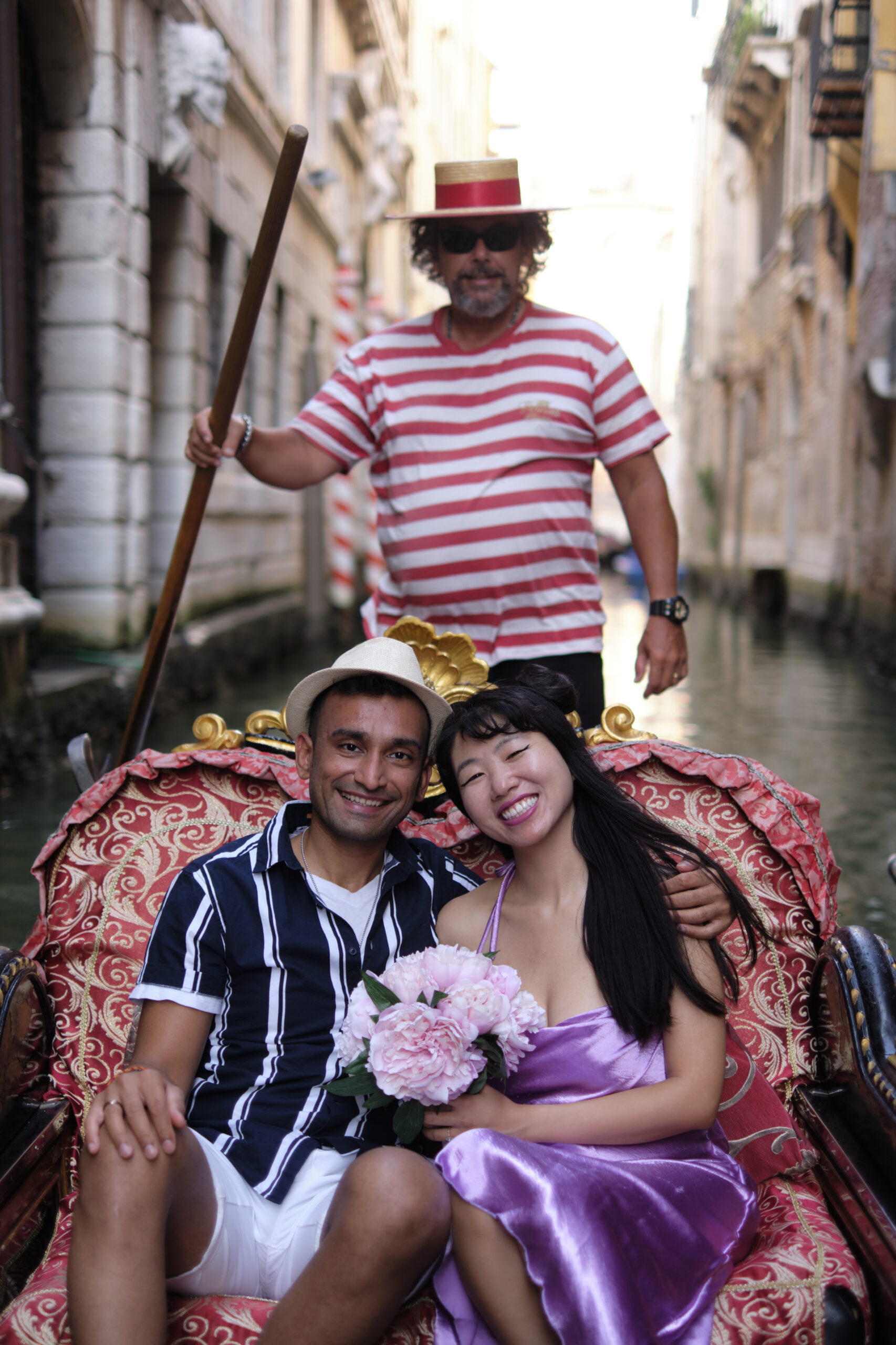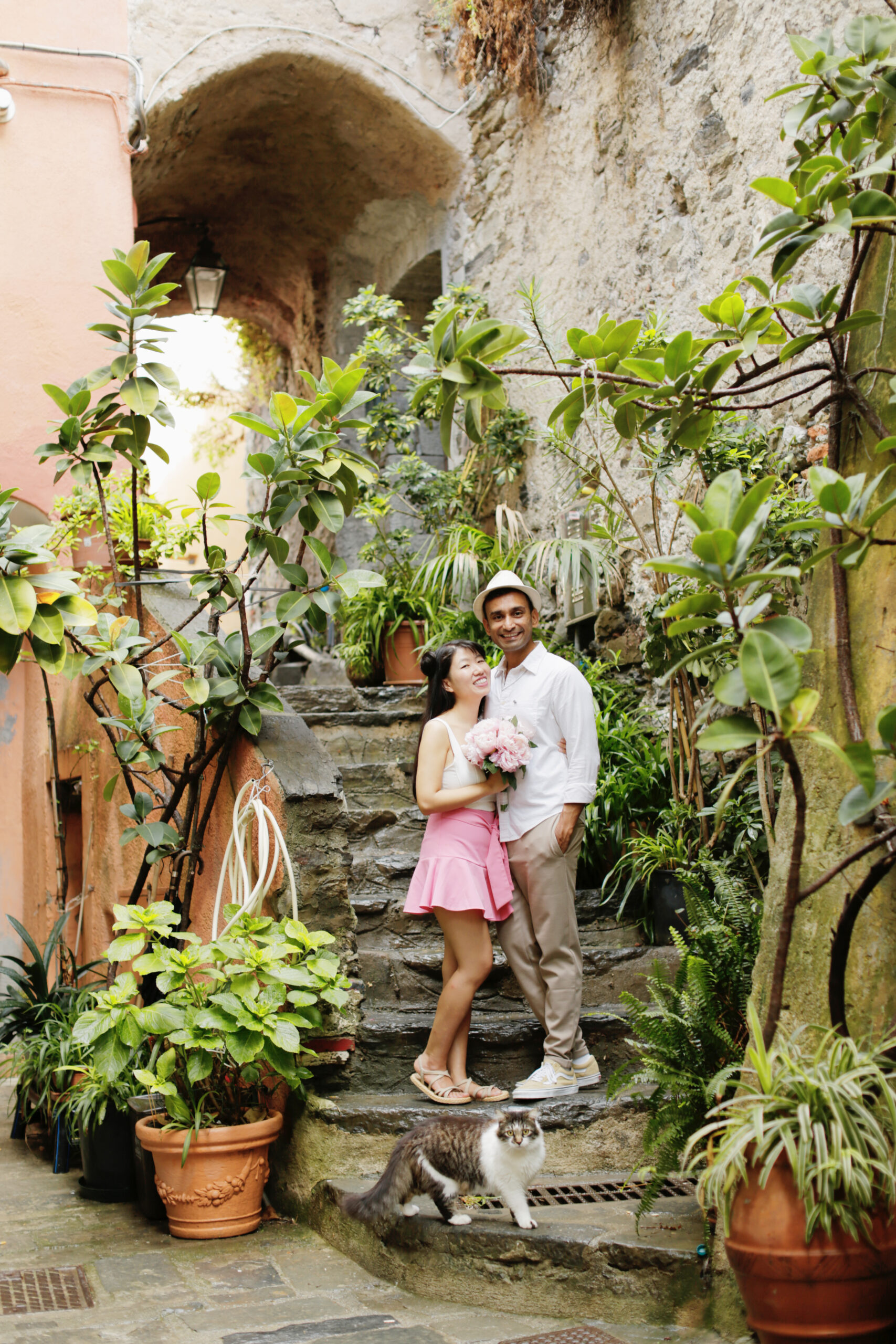Last Updated on October 9, 2025 by Jade and Deeshen

Are you planning a trip to Seoraksan, South Korea?
If yes, we’ve got you covered with this ultimate guide to visiting Seoraksan National Park!
Seoraksan National Park is 100% worth visiting, and honestly, it became one of our favorite places in all of South Korea, along with Seoul.
We visited Seoraksan in autumn, and to say we were blown away would be an understatement. Nothing prepared us for just how vibrant they were—easily the best fall foliage we’ve ever seen!
Every hike feel like a scene from a postcard.
Beyond the hikes, Seoraksan has deep history and culture. From the world’s oldest Zen Buddhist temple to towering Buddha statues and rugged granite peaks piercing the clouds, it’s no surprise this park is considered the most popular national park for Koreans.
But here’s the thing—planning our visit wasn’t as easy as we expected. It was tough to find clear, up-to-date information, and most guides we came across were either incomplete or outdated.
More than once, we wished for a comprehensive resource to make the trip smoother.
So after 3 incredible trips to Seoraksan National Park, we created a detailed guide for you!
Here’s everything you need to know about visiting Seoraksan National Park—from how to plan your trip, how to get there to, where to stay, best trails, temples, and hidden gems along the way.
Where is Seoraksan National Park?

Seoraksan National Park is one of the most stunning natural wonders in South Korea. It’s located in the northeastern part of the country, near the coastal town of Sokcho in Gangwon Province.
Known for its dramatic granite peaks, vibrant Seoraksan fall foliage, crystal-clear rivers, forests, and ancient temples this park is a dream for nature lovers and hikers.
From Seoul, Seoraksan is about 2.5 to 3 hours away by car or express bus, making it a doable and popular day trip or overnight getaway if you’re craving mountain air and scenic beauty outside the city.
Introduction to Seoraksan National Park
Seoraksan National Park is one of the most beautiful places in South Korea. The park is a UNESCO Biosphere Reserve, meaning it’s protected for its natural beauty and wildlife.
Whether you love hiking or simply want to relax in nature, Seoraksan has something for everyone.
Seoraksan is a massive national park, stretching across four cities and counties in Gangwon Province! With over 30 trails, the park offers hikes for all levels, from easy walks to more challenging climbs.
Seoraksan is the perfect retreat to connect with nature, clear your mind, and leave feeling rejuvenated.
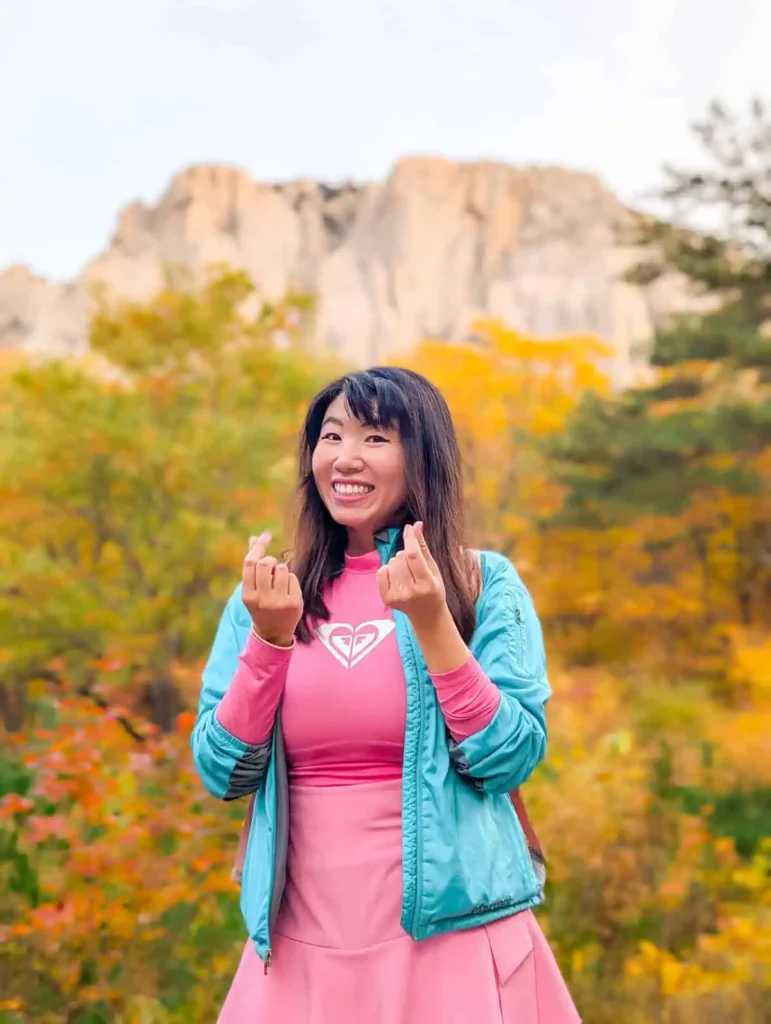
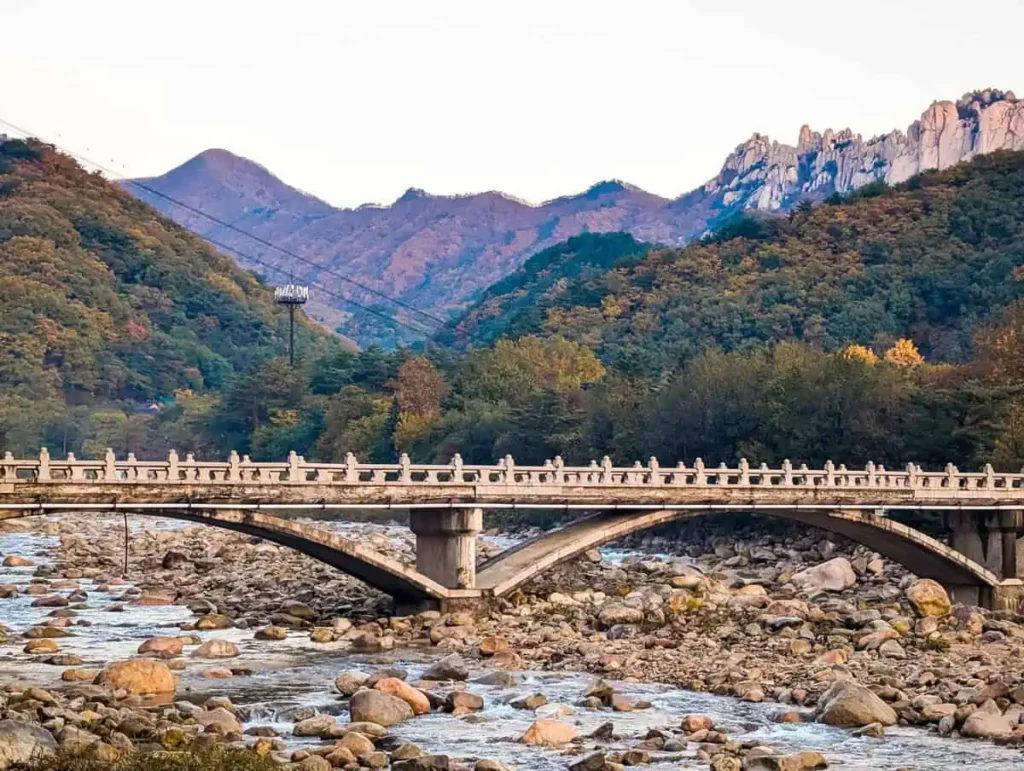


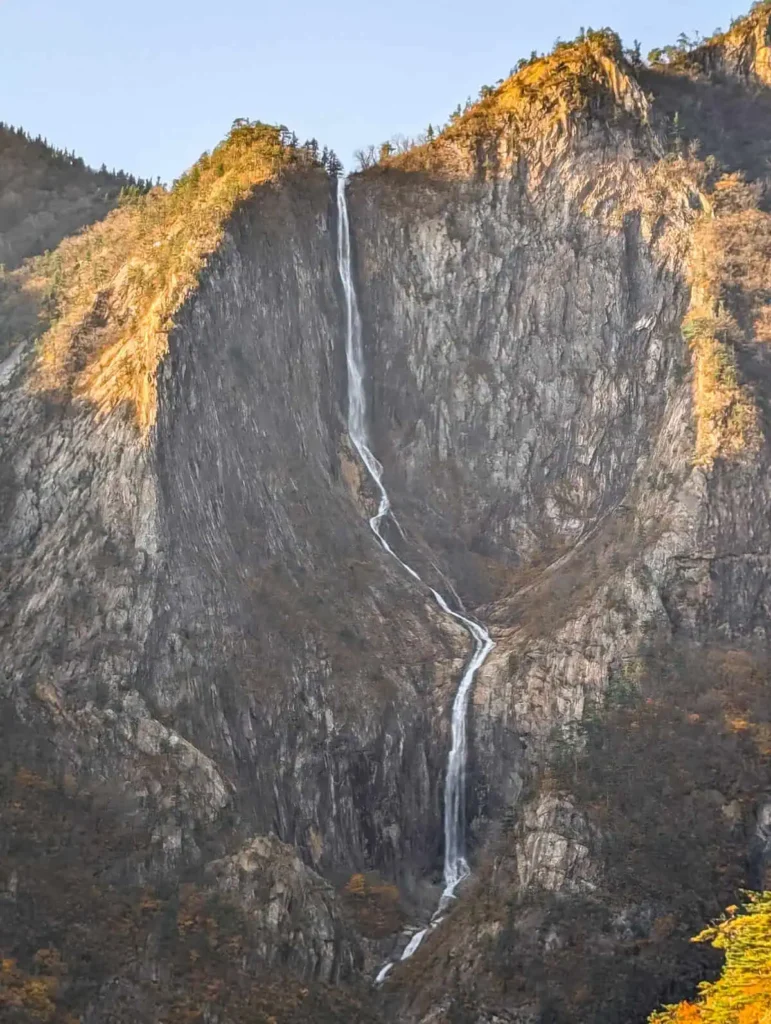
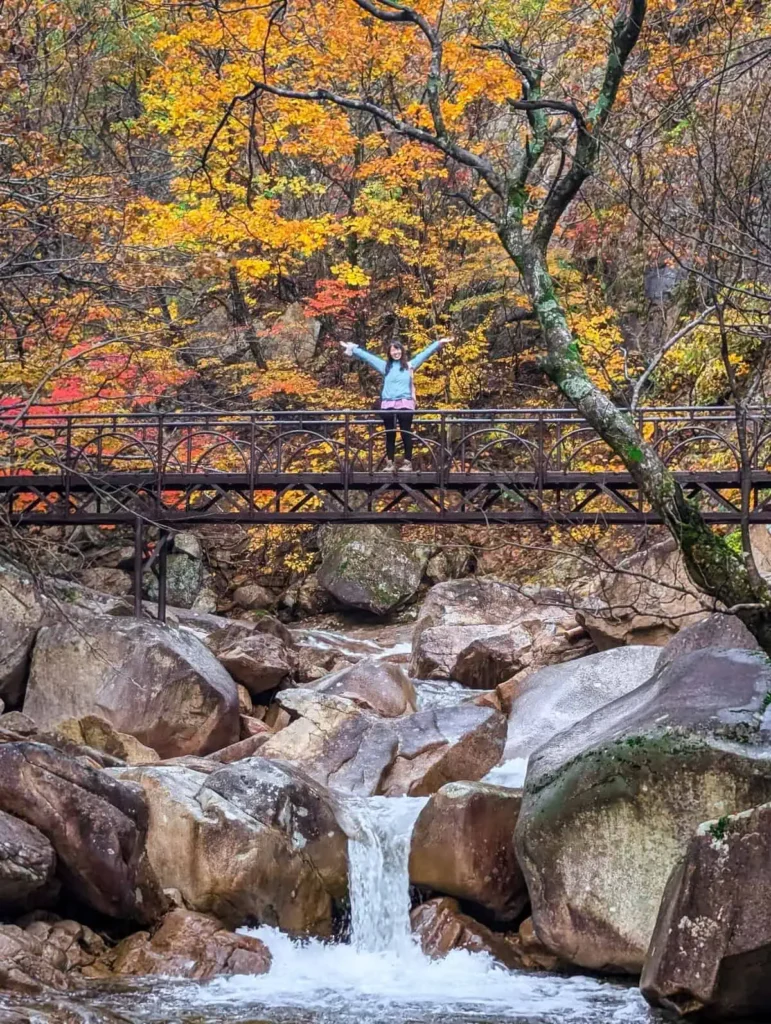
Some of the most popular trails include the Ulsanbawi Rock Trail, famous for its long staircase to massive granite peaks, and panoramic mountain views.
The Biryong Falls Trail takes you through quiet forests and past beautiful waterfalls. The Towangseong Falls Observatory hike is steep but rewards you with incredible views.
If you’re looking for something shorter and unique, visit Heundeulbawi Rock, a large stone that gently rocks when pushed.
One of the park’s special features is Sinheungsa Temple and its collection of smaller, hidden temples and shrines scattered throughout. Sinheungsa Temple, with its massive bronze Buddha, is one of the oldest and most famous in South Korea. It even has a Temple Stay Program.
More on the best hikes and what to do later.
Where to Stay in Seoraksan National Park
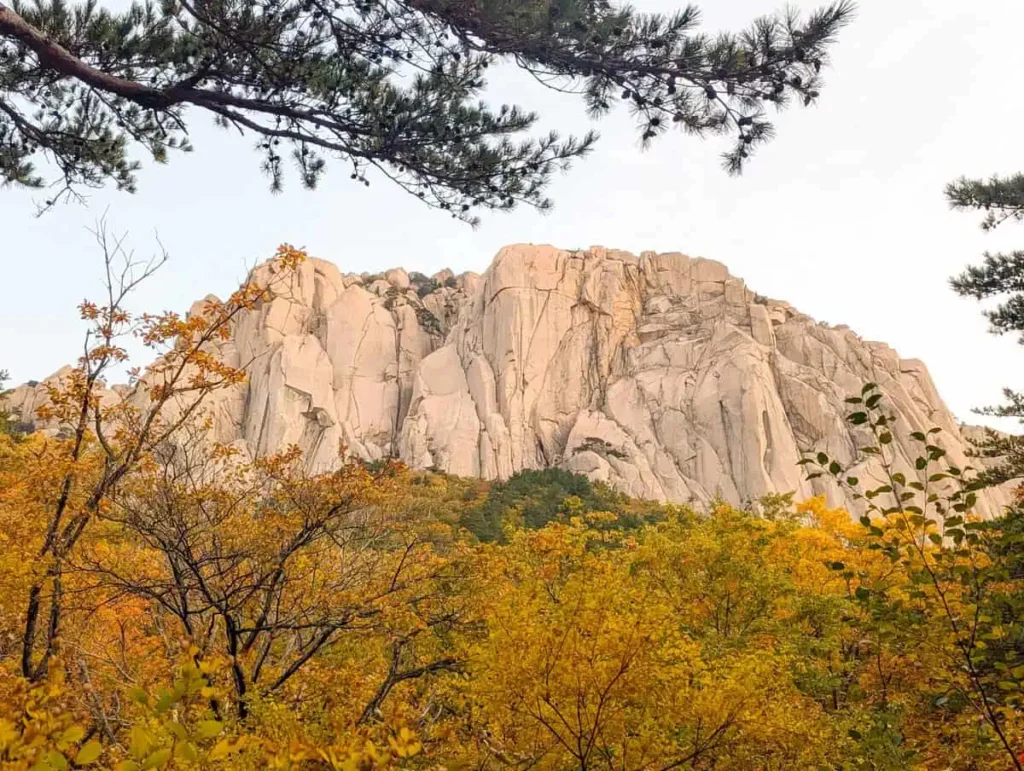
Looking for the perfect place to stay near Seoraksan National Park? You’ve got two main options: 1) Stay right by the park itself for a peaceful, nature-filled experience, or 2) Stay in Sokcho, the nearest city, just a short 20-25 minute drive from the park’s main entrance.
Where to Stay in Seoraksan

For a truly magical experience, we recommend you stay right by Seoraksan National Park. The Kensington Hotel Seoraksan is just a 3-minute walk from the park entrance, making it super easy to hit the trails.
No other hotel will beat its location and you’ll skip the massive car lines that wait at the entrance to park. The hotel has a classic charm, stunning rooftop views, and even celebrity guests.
For a more luxurious stay, consider Kensington Resort Seorak Valley. The resort is perfect for anyone looking to relax and enjoy some forest bathing while staying close to the action.
Where to Stay in Sokcho
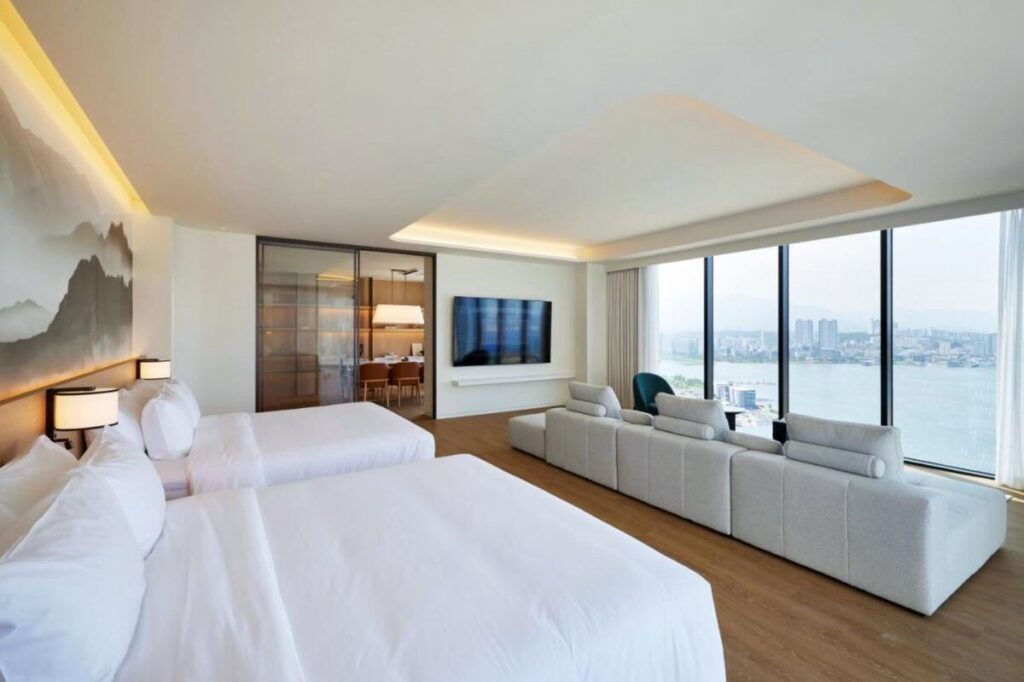
If you’re looking for a bit more convenience, Sokcho is the way to go. It’s a vibrant port city that’s perfect for those without a car. It’s just a quick drive to the park, and you’ll have plenty of restaurants, shops, and cafes right at your doorstep.
Our top pick in Sokcho is Homm Marina Sokcho. This hotel is everything you could want—new, modern, and spacious, with a rooftop pool that overlooks the beautiful sea.
It’s a luxurious spot to unwind after a day of hiking. For something more affordable, Ramada by Wyndham Gangwon Sokcho is a great option, offering a tasty breakfast buffet and a great location near the harbor.
How to Get to Seoraksan National Park from Seoul
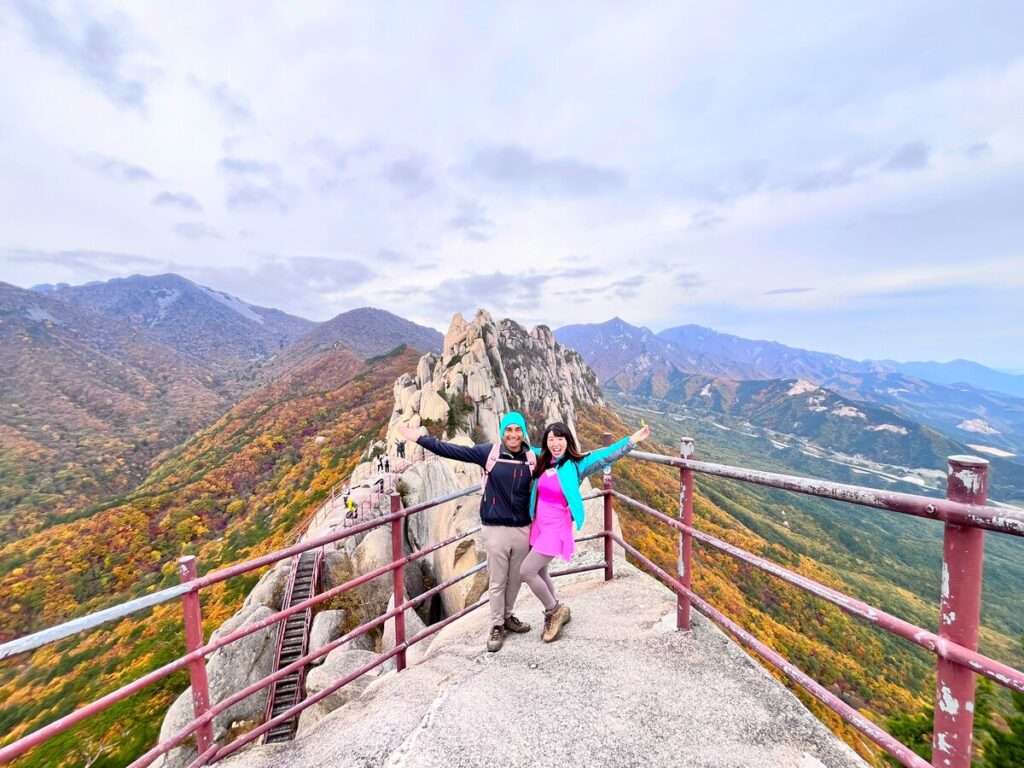
Seoraksan National Park is located in Gangwon Province, about 3 hours from Seoul, making it perfect to pair for Seoul whether its a week, a day trip, or a weekend getaway.
The easiest way to get to Seoraksan from Seoul is by bus, and the best place to book your bus tickets is here.
From Seoul’s Express Bus Terminal, you can catch a direct bus to Sokcho, the closest town to the park.
If you’re visiting Seoul, you’ll love our free Seoul 1 week itinerary guide with all the best things to do.

Buses run every hour, and the ride takes about 2.5 to 3 hours.
Be sure to book your bus tickets from Seoul to Seoraksan at least 2-3 weeks in advance, especially if you’re going during peak seasons like Seoraksan’s fall foliage. We booked ours at least 2 weeks in advance.
If we’d waited til the day of, many of the seats and early bus timings would’ve already been sold out.
The best bus are the premium express buses, and here’s how the bus looks like below.

The seats can be fully reclined with bus, seat warmers, charging port, wifi, and tables to eat
We’ve also put together a super detailed guide on how to get to Seoraksan from Seoul—whether you’re traveling by bus, train, car, or organized tour.
If you’re short on time, here is the best day trip tour from Seoul to Seoraksan.
From Sokcho, it’s just a short taxi ride or local bus to the park’s main entrance. Bus 7 and 7-1 are the main local buses from Sokcho operating between Sokcho and Seoraksan National Park.
The first bus from Sokcho to Seoraksan typically departs around 6:51 AM and reaches Seoraksan by 7:20AM.
The buses take about 30 minutes depending on how many stops there are, and come every 15-30 minutes, depending on the season and day of the week.
This just saved you 15 hours of research!
The fare is around 1,100 to 1,700 KRW (approximately $1 to $1.50 USD), payable by T-money card or exact cash.
The last bus returning from Seoraksan to Sokcho typically departs around 8:30 PM.
Related: A super detailed guide on how to get to Seoraksan from Seoul
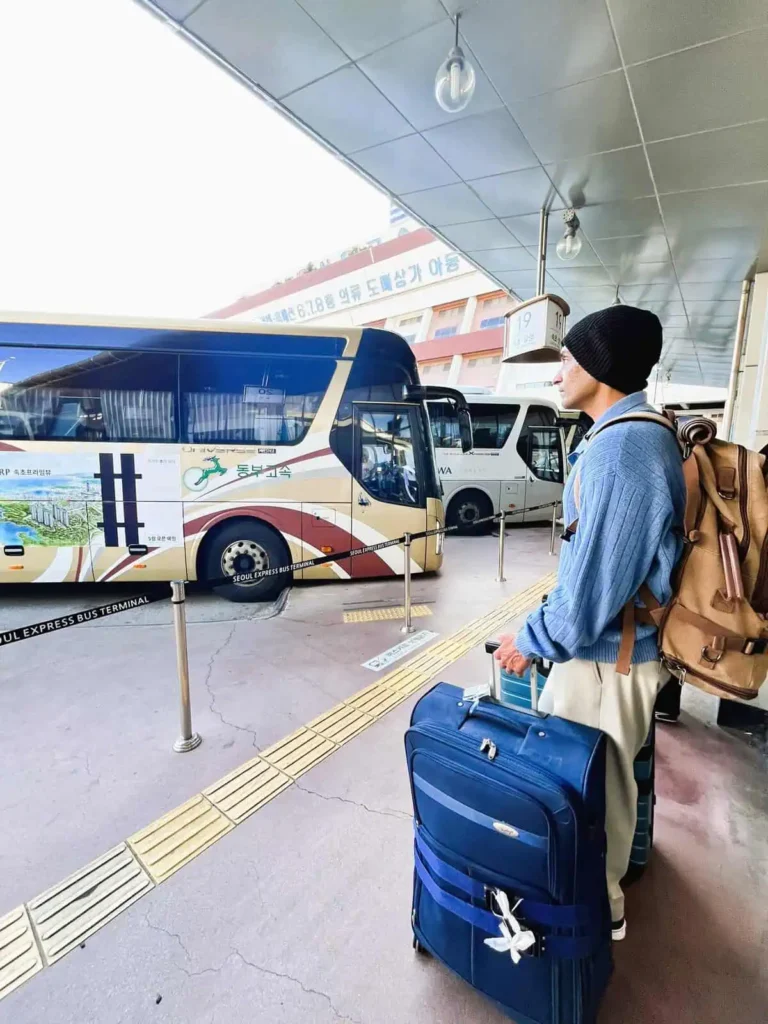
Deeshen waiting to board the Seoul to Sokcho bus which takes you to Seoraksan National Park. This is the platform area at Seoul Express bus terminal.
If you prefer the train, you can take the KTX to Gangneung, then transfer to a bus or taxi to Sokcho.
However, we don’t recommend the train as it’s a lot more complicated and takes much longer compared to the express bus. Most locals actually take the bus, as we mentioned above.
If you’re planning to rent a car, this is the best place to book your rental car from Seoul. Driving is a great option if you want flexibility to explore at your own pace, and the drive offers stunning views of the mountains and coastline in Sokcho.
The roads near Seoraksan and Sokcho are super well maintained and easy to drive on. Just avoid driving in Seoul during rush hour.
Keep in mind, Google Maps doesn’t work in South Korea as the country is technically still divided. We used Naver Maps and Kakao Maps, which were both super easy to use for directions for driving, bus, train or even walking in Seoul, Seoraksan, and other cities in South Korea.
Once you arrive, you can easily access the main attractions via public transport or taxis. For example, taxis can take you to Sinheungsa Temple or the Gwongeumseong Fortress Cable Car station directly.
Best Time to Visit Seoraksan
The best time to visit Seoraksan National Park really depends on what kind of trip you’re dreaming of—but it’s worth visiting in all four seasons for different reasons.
Seoraksan in Fall

Fall (September to November) is the most famous season for the famous Seoraksan’s Fall Foliage.
Personally, we think fall is the best time to visit—hands down. We went during peak foliage season, and it honestly felt like walking through a painting.
We also wrote a super detailed guide on how to visit Seoraksan National Park in Autumn to help you plan your trip!
From the best foliage viewing trails to tips on when and where to go, it’s everything we wish we knew before our trip!


From mid-October to early November, the mountains burst into color with glowing reds, oranges, and yellows.
The weather was cool and comfortable—around 50–65°F (10–18°C)—perfect for hiking without breaking a sweat. It’s also the busiest time, so we recommend booking transportation and hotels a few weeks ahead.
Seoraksan in Spring
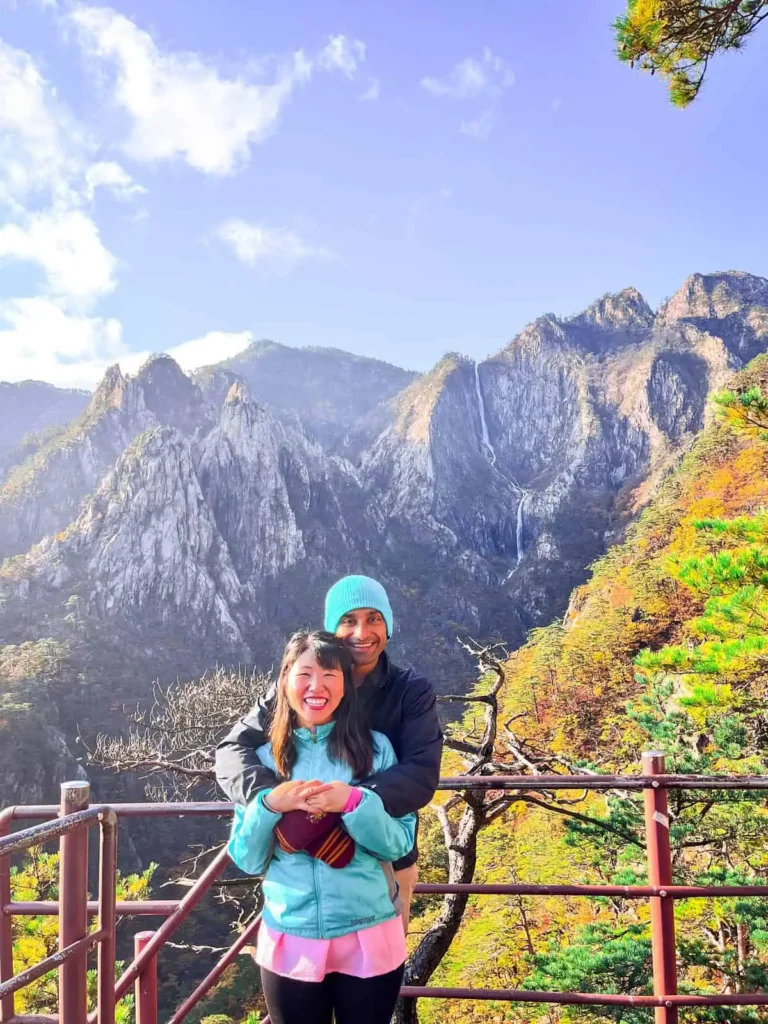
Spring (April to May) brings a fresh energy to the park. Flowers bloom along the trails, the trees are a bright green, and the whole park feels alive again. It’s a more peaceful time with fewer crowds, and temperatures usually range between 45–70°F (7–21°C).
Seoraksan in Summer

Summer (June to August) is a great time to visit Seoraksan National Park! The weather is warm and lush, with long days and full rivers. Expect temperatures around 70–85°F (21–29°C).
We’ve heard it’s great for families and casual hikers, but just be prepared for crowds and the possibility of rain—some trails can get a bit slippery.
Seoraksan in Winter
Winter (December to February) is quiet, peaceful, and absolutely stunning—if you’re prepared for the cold. Seoraksan turns into a snow-covered wonderland, with sharp white peaks and icy rivers.
It’s the least crowded season, but it gets seriously cold, with temperatures often dropping to 15–30°F (-9 to -1°C).
We haven’t hiked in winter yet, but we’d love to go back just to see the mountains covered in snow—though we’d definitely pack extra heat packs and proper gear.
No matter when you go, Seoraksan has something to offer. We started with fall, but left already planning a spring or winter return.
How Long to Spend at Seoraksan National Park

We recommend spending at least 3 to 5 days in Seoraksan National Park. We stayed for four days, and honestly, we could’ve spent even longer—it’s just that amazing!
The park is huge, with so much to see, especially if you love hiking or being surrounded by nature. There’s a reason Seoraksan is one of the top national parks in South Korea!
Keep in mind that getting to and from Seoul takes about half a day, so giving yourself extra time makes a big difference.
Also, weather can be unpredictable so more days ensures you get to see the best of the Seoraksan park. On one day, we had terrible weather—pouring rain, strong winds and storms—so we had to stay at our hotel to rest. But the other days? Absolutely perfect.
If you only have one day from Seoul, here is the best day trip tour from Seoul to Seoraksan.
With 3 to 5 days, you’ll have time to enjoy the best hikes, like the Ulsanbawi Rock Trail, and really soak in the views. Seoraksan fall colors here were the most beautiful we’ve ever seen (and we’ve lived in Washington State for a decade!).
The extra days let you explore without rushing and enjoy everything Seoraksan has to offer!
Related: Best Seoul 7 Day Itinerary
Seoraksan National Park Entrance Fees (and Parking Fees)

Visiting Seoraksan National Park is one of the best things to do in South Korea, and it’s completely free to enter!
The park used to charge a fee but as of May 2023, the park no longer charges an entrance fee, so you can explore the main trails, including popular spots like Sinheungsa Temple and Ulsanbawi Rock Trail, all without any cost for park access!
What’s Free?
- Park Access: You can enter the park and hike the main trails, including popular spots like Sinheungsa Temple and Ulsanbawi Rock Trail, all for free.
- Sinheungsa Temple is also free to visit now, which is great for those wanting to explore its history and peaceful atmosphere. Previously, a small fee was collected here.
What’s Not Free?
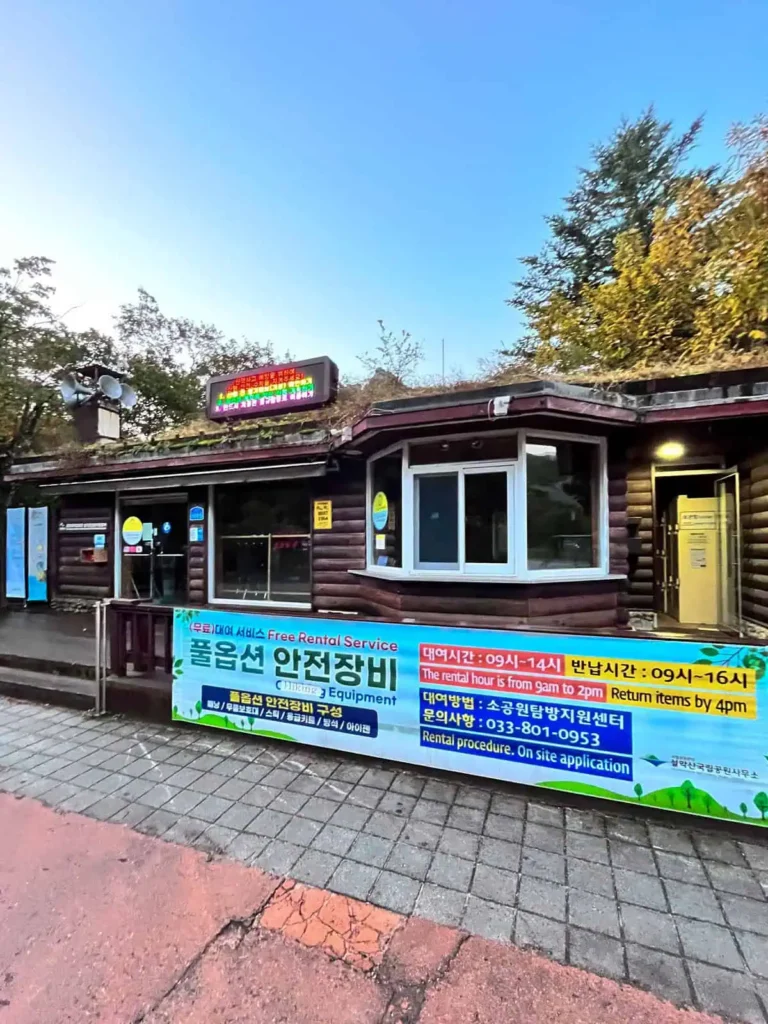
Seoraksan National Park Visitor Center, where you can rent gear for a fee.
While getting into the park is free, some activities do have fees:
- Cable Car: A round-trip ticket to Gwongeumseong Fortress costs 15,000 KRW ($11 USD) for adults and 11,000 KRW ($8 USD) for kids (3 years and up).
- Seoraksan Parking Fees: Seoraksan National Park has free parking for visitors. However, once the park’s parking lot is full, you’ll have to park at one of the paid parking lots outside of the park. There are plenty of parking lots that line the road from the entrance down the hill, so you don’t have to worry about running out of spots.
The Seoraksan Cable Car also has parking available, with fees of 6,000 KRW ($4.50 USD) for regular vehicles and 9,000 KRW ($6.50 USD) for large vehicles. - Shelter Fees: If you’re staying overnight in the park, shelter fees and campsite fees are around 13,000 KRW ($9) per night, but remember, you’ll have to bring your own bedding and camping gear. (or rent them at the visitor center)
- Gear Rental: If you need gear, there’s a gear rental station located right next to the Seoraksan National Park Visitor Center, where you can rent items like hiking poles or warm clothing if needed.
So, while entry to the park is free, it’s good to be aware of these extra costs for things like the cable car, and any rentals you may need.
Overall, the fact that the park is free to enter makes it an even more amazing destination!
Seoraksan Best Hikes
Seoraksan park hikes are some of the most breathtaking hikes in South Korea—and honestly, they might just be some of the best in the world.
Whether you’re planning a couples getaway, a family adventure, or you’re an experienced hiker seeking a challenge, Seoraksan has a trail for everyone.
Ulsanbawi Rock Trail

If you can only have time for one hike in Seoraksan, we recommend the Ulsanbawi Rock Trail.
It’s famous for its steep staircase that leads you to one of the best panoramic views in all of South Korea. The view from the top overlooks vast mountain ranges, and you can even see the coast in the distance on clear days.
This hike is about 3.5 miles (5.6 km) round trip, with 1,000 feet (300 meters) of elevation gain, and it takes about 4 hours to complete.
Yep, your legs will feel it—but the view at the top? 100% worth it. This trail is a bit of a challenge, but totally doable if you pace yourself.
The rock’s name comes from the shape of the peaks, which are said to resemble an old fishing boat, and it has long been a symbol of Seoraksan National Park’s natural beauty and spiritual significance. It’s a place where hikers often come to find both a physical and spiritual challenge
Along the way, you’ll pass a beautiful temple, scenic rock formations, and even a spot where you can take a break with fresh mountain water. The trail is really well-maintained, with sturdy stairs and handrails for the steeper parts.
Once you reach the summit, you’re standing on top of these dramatic granite peaks with jaw-dropping views all around. There’s even a rock that looks like a xiao long bao dumpling (according to Jade haha!) that you can see below.

You’ll see endless layers of mountains, Sokcho city in the distance, and on a clear day, even the sea.
We did this hike early in the morning to beat the crowds, and it was pure magic—the mist slowly lifting from the valleys, the cool mountain air, and the feeling of being completely surrounded by nature.
If you only have time for one hike, make it this one. Just bring water, snacks, and good shoes… and maybe a snack reward for the top!
Biryong Falls Trail
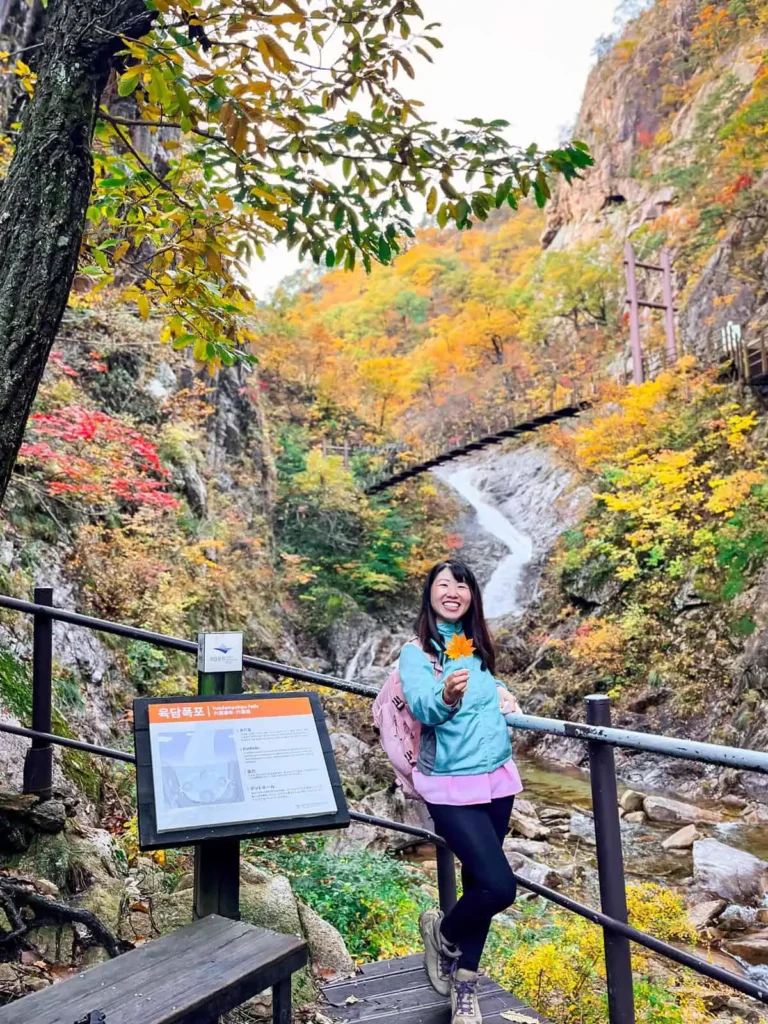
If you’re looking for a peaceful river and waterfall hike, the Biryong Falls Trail was our favorite hike in Seoraksan and South Korea (and we did a lot of hiking!).
The easy trail is around 1.3 miles (2 km) long, low elevation gain, and typically takes about 1.5 to 2 hours to complete, making it an easy but rewarding hike.
We loved how serene it felt, watching the water flow, and it was a nice change of pace from the more intense hikes around the park.
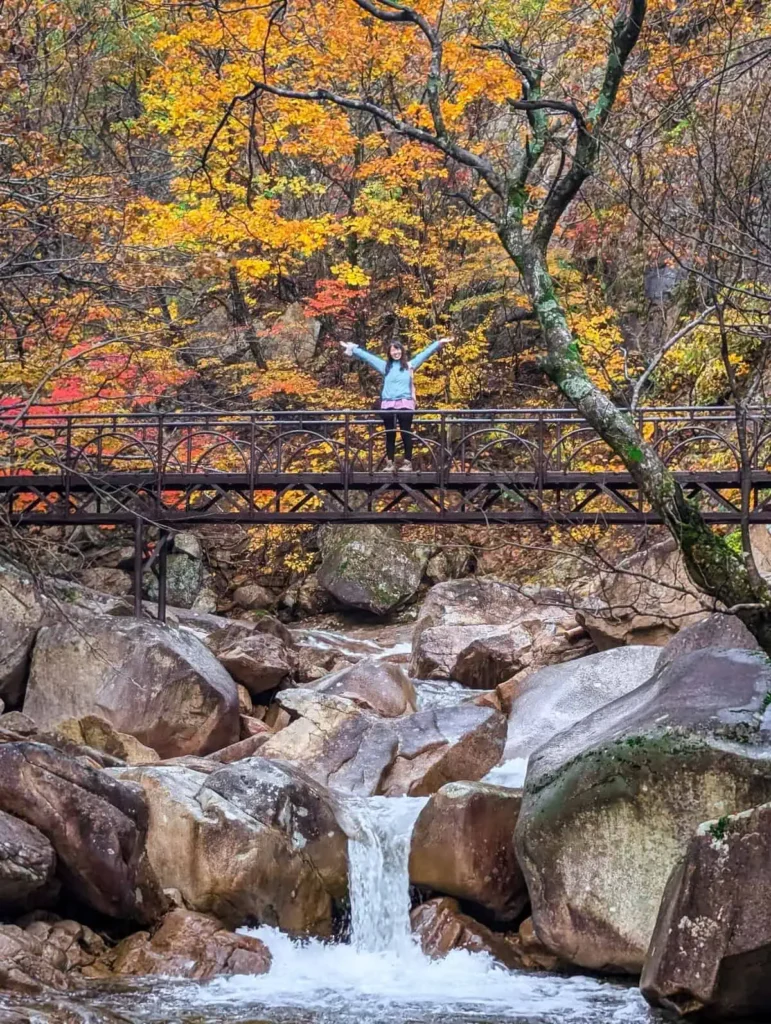
The name “Biryong” means “flying dragon”, and according to local legend, a dragon once lived beneath the falls. It definitely adds a mystical vibe to the whole experience.
The hike starts in a forested area, and you’ll pass by a river that runs through the trail.
There are several charming bridges along the way that cross the river, and depending on the time of year, the fall colors are absolutely stunning.
This was our favorite bridge at Biryong Falls!

Like most waterfalls hikes, Biryong Falls Trail is best done a day after it rains.
We were so lucky and blessed when we hiked it because it had rained the day before, so the river was rushing, and the falls were at their fullest glory!
In fact, waterfalls were pouring from every bridge we crossed—like something straight out of a fairytale!
At one point, a friendly local stopped Deeshen and said how rare it was to see the falls so full with fantastic weather. He said in all his years hiking this trail, he had never seen them like this before. So blessed!
Overall, the Biryong Falls Trail is a beautiful, relaxing hike, and it’s definitely worth doing when you’re in Seoraksan National Park.
Towangseong Falls Observatory
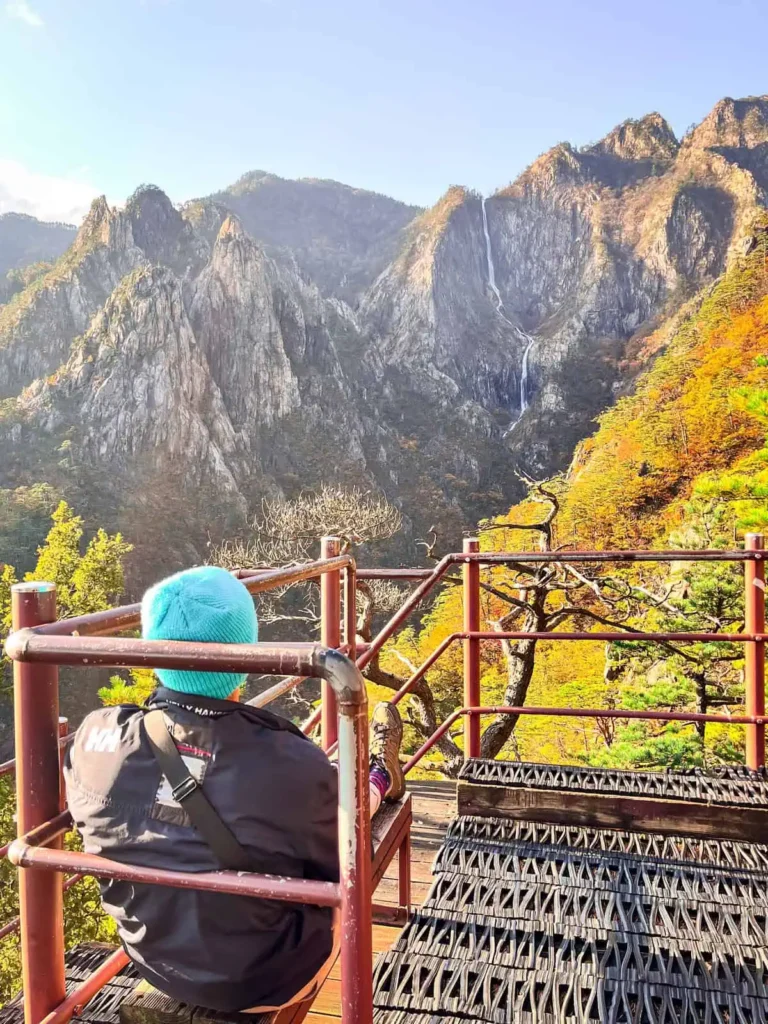
If you’re looking for a hidden gem in Seoraksan, definitely make your way to the Towangseong Falls Observatory!
It’s an extension of the Biryong Falls Trail, and while we were already in love with the falls, the next part of the trail surprised us.
Towangseong Falls holds both natural and cultural significance. The name “Towangseong” means “immortal waterfall,” a reference to the belief that the water has magical qualities.
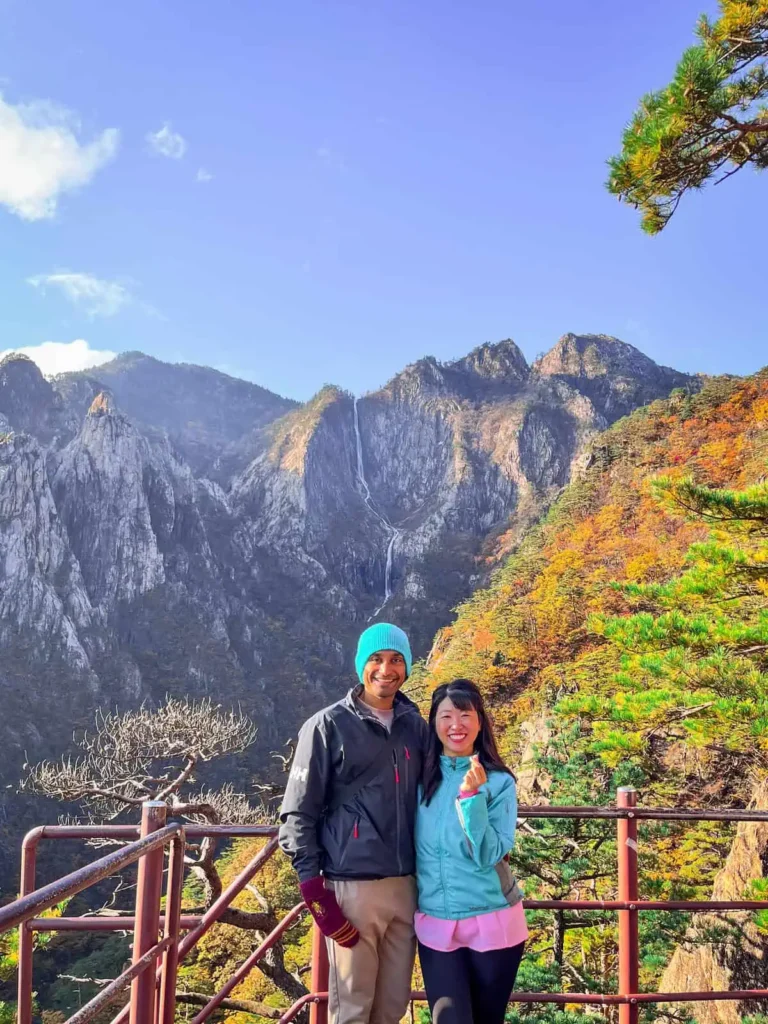
It’s not only the tallest waterfall in South Korea but also deeply tied to local traditions and folklore, making it a symbol of the region’s spiritual and natural beauty.
The falls have long been a place of reverence for locals, with a history that connects the landscape to deeper stories of the land.
At the end of the Biryong Falls Trail, you’ll reach the Towangseong Falls Observatory.
It had just reopened in 2024 after being closed for years, so it felt extra special. We almost skipped it since we were already happy with Biryong Falls, but Jade convinced us to keep going, and I’m so glad we did.
The hike up is no joke—it’s a straight shot upward climb with stairs the whole way up a mountain. It’s about 0.6 miles (1 km) with a 1,300 feet (400 meters) elevation gain, so get ready for a solid leg workout!
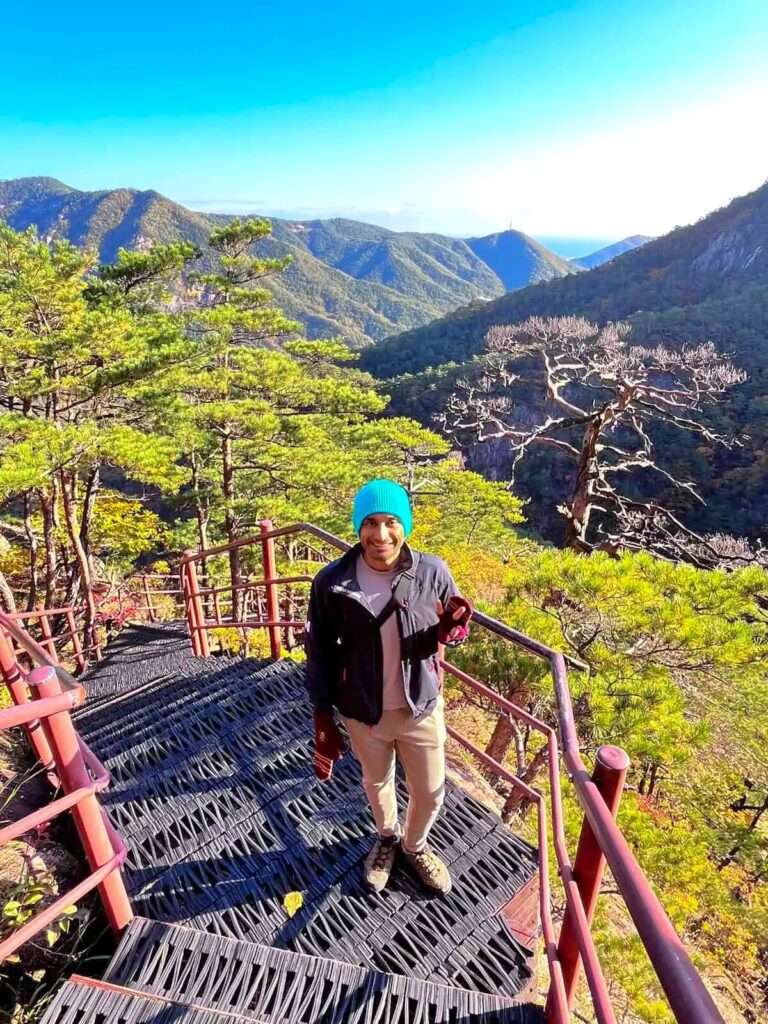
We didn’t really know what to expect since there weren’t many pictures online, but it ended up being one of the best parts of our trip.
Once you make it to the top, you’re treated to an incredible view of Towangseong Falls, the tallest waterfall in Korea.
The sight of the water cascading down the cliff surrounded by autumn trees was just breathtaking. It felt like a peaceful scene straight out of an ancient Korean or Chinese poem.
The view was so beautiful and moving that Jade teared up!

It’s definitely a spot you’ll want to sit and take in the quiet for a while. If you can, make sure to visit—it’s one of those places that stays with you long after you leave.
Gwongeumseong Fortress Trail

If you’re up for a hike with some history and killer views, the Gwongeumseong Fortress Trail is a must-do in Seoraksan.
It’s one of the more unique hikes because it takes you to the top of a mountain where a fortress once stood, and the view is simply stunning.
The trail starts off pretty smoothly, with a gradual climb through lush forest and some gorgeous scenery along the way. But as you get closer to the top, the climb gets a little steeper. It’s about 2.2 miles (3.5 km) one way, with a 1,000 feet (300 meters) elevation gain, so it’s definitely a good workout, but nothing too crazy.
If you’re not in the mood for a hike, don’t worry! You can always take the cable car to get a head start and skip the first part of the climb. The cable car will take you up to a platform near the fortress, so you can still enjoy the view without the hike.
You can purchase tickets on-site at the Seoraksan Cable Car Station, just a 5 minute walk from the park’s main entrance. The cable car operates daily from 9:00 AM to 6:00 PM.
Tickets are available on a first-come, first-served basis, and it’s recommended to arrive early, especially during peak seasons, as there may be long wait times.
For more information, visit the official website.
Once you reach the top—whether by foot or cable car—you’ll be rewarded with panoramic views of Seoraksan National Park. From here, you can see miles and miles of the surrounding mountains, which is perfect for taking in the park’s natural beauty.
For history lovers, the remains of the Gwongeumseong Fortress are still visible at the top! The fortress was originally built during the Goryeo Dynasty, and while it’s mostly in ruins now, the stone walls still give a glimpse of its history. It’s cool to think about how this place was once a lookout point, where people would’ve had an incredible view of the area.
The trail itself takes about 2 to 3 hours to hike, depending on your pace, and it’s an excellent way to combine nature, history, and some seriously scenic views. If you’re looking for a hike that feels like an adventure while still offering great payoff, this one’s for you!
Seoraksan Summit Trail (Dolsan)

The Seoraksan Summit Trail (Dolsan) is one of the most challenging yet rewarding hikes in the park. This 12-mile (19 km) trail takes you to the highest peak of Seoraksan, Dolsan, where you’ll be treated to sweeping panoramic views of the entire park and the surrounding area.
The terrain is rugged, with plenty of rocky climbs and exposed sections that’ll keep your heart pumping. With an elevation gain of 2,600 feet (800 meters), this trail isn’t for the faint of heart, but if you’re an experienced hiker, the challenge is part of the fun!
The name “Dolsan” means “great blue peak,” named after the blue mist that often surrounds the summit in the early morning. At 1,708 meters (5,603 feet), it’s the highest peak in Seoraksan and one of the tallest in South Korea.
For centuries, it’s been seen as a sacred mountain. Locals believed mountain spirits lived here, and people would climb it to pray or find strength. Even today, many say reaching the top brings good luck—and standing there, with views stretching for miles, it really does feel like something special.
The entire hike usually takes about 6 to 8 hours round-trip, depending on your pace and how much time you spend soaking in the views. It’s a physically demanding hike.
As you climb, you’ll pass through diverse landscapes—forests, rocky outcrops, and alpine terrain—before reaching the summit, where you’re rewarded with absolutely breathtaking views. From the peak, you’ll get a 360-degree view of Seoraksan’s jagged peaks, valleys, and even the distant coastline on clear days.
While it’s a physically demanding hike, the sense of accomplishment when you finally reach the summit is worth every step. The views from the top are nothing short of spectacular, and the dramatic rock formations and lush surroundings make it one of the most scenic summits we’ve ever hiked.
If you’re looking to save some energy or take a shortcut, you can use the Seoraksan Cable Car, which takes you up to a higher elevation before you start the final ascent to the peak. However, even with the cable car, you’ll still encounter the steep climbs toward the summit.
This is the perfect hike for those who want to push themselves and truly experience the majestic beauty of Seoraksan up close.
It’s a test of endurance, but the breathtaking views and the sheer sense of accomplishment you’ll feel afterward make it one of the best hiking experiences in South Korea.
Cheonbuldong Valley Trail
The Cheonbuldong Valley Trail is a relatively easy hike and one of the most beloved trails in all of Seoraksan—and once you walk it, you’ll see why. We did this hike during peak autumn, and it honestly felt like stepping into a dream.
The name “Cheonbuldong” means “Valley of a Thousand Buddhas.” The cliffs here are said to look like rows of seated Buddhas, and you can really see it as you walk—shapes in the rocks that seem to be meditating in silence. It gives the whole place a serene, almost sacred feeling.
For centuries, Buddhist monks from nearby Sinheungsa Temple used this valley as a spiritual path. They believed the energy here was sacred, and walking through the valley was a form of meditation. There are even old stories that say this path could lead to enlightenment if walked with the right mindset. That peaceful, spiritual vibe is something you can still feel today.
The trail follows a peaceful mountain stream, winding through forested paths, stone bridges, and rocky outcrops, all set against dramatic cliffs and colorful foliage.
It’s a 2.5-mile (4 km) round trip and should take about 1.5 hours to complete. The full trail stretches for about 6.5 miles (10.5 km) one way, starting near Seoraksan Small Park entrance and leading all the way up to Daecheongbong Peak if you choose to continue.
But most people hike to Heundeulbawi Rock or Biseondae, which are much shorter sections and still stunning. You can customize your route depending on how much time or energy you have.
Biseondae Rock Trail
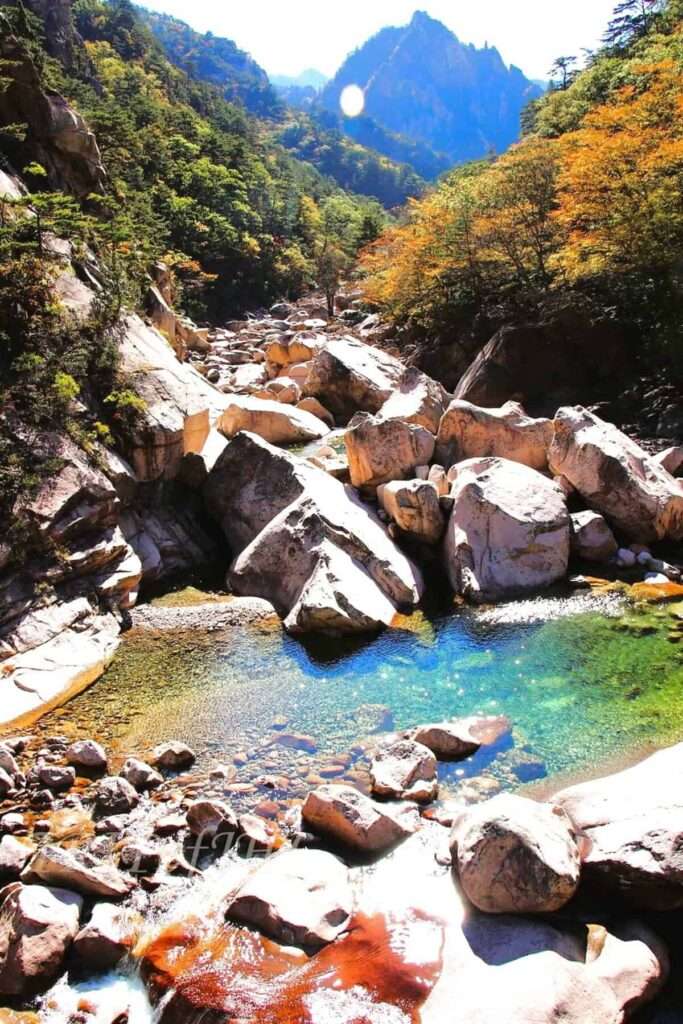
Biseondae Rock Trail is one of the easiest and most beautiful walks in Seoraksan National Park—perfect if you want big views without a big effort.
The name “Biseondae” means “the platform where angels rest,” and there’s a lovely local legend that angels once came here to relax and admire the scenery. It’s also a spot where monks used to meditate, and you can really feel the peaceful energy as you walk.
The trail is about 1.5 miles (2.5 km) round trip and takes around 1.5 hours. It’s mostly flat with a few steps, and follows a clear stream through a rocky valley with amazing views of Seoraksan’s northern peaks.
We loved pausing at the bridge to take in the cliffs and spot the old Chinese characters carved into the rock. Access to the water along the Biseondae Rock Trail in Seoraksan National Park is not permitted, but the calm feeling of the valley more than makes up for it.
We always recommend this trail to friends—it’s great for families, first-time visitors, or anyone looking for a relaxing walk.
If you’re feeling adventurous, there’s a steep path past Biseondae that leads to Geumganggul Cave tucked high in the cliffs. But even if you just go to the rock, the trail is worth it.
Geumganggul Cave
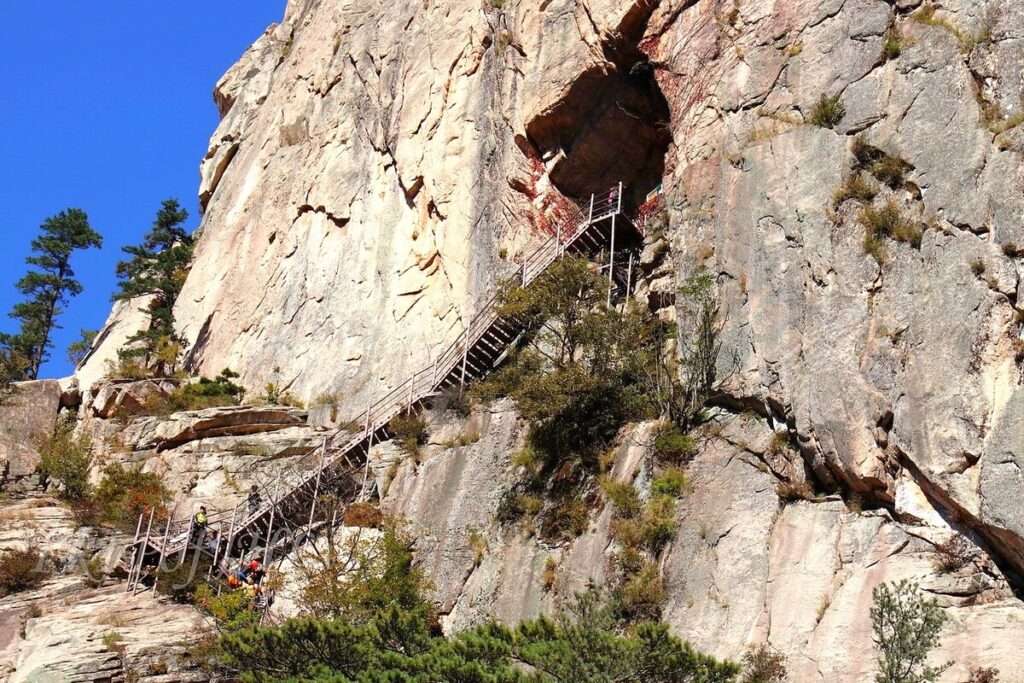
Geumganggul Cave (also called Geumganggul Grotto) is a hidden cave in Seoraksan, and it’s a must-see for anyone looking for a unique experience.
The name Geumganggul means “Golden Diamond Cave.” Legend says that a hermit monk lived in the cave long ago, seeking enlightenment in solitude.
The cave is said to have been a spiritual retreat for monks and remains a peaceful, sacred site for many.
The cave is tucked away in the mountains, and reaching it involves a short but steep hike that’s about 1.5 miles (2.5 km) round-trip. The hike is easy, but there are some stairs near the entrance, so it’s good to be prepared for a little climb.
The cave has a small shrine. It isn’t huge, but it’s amazing to see this little temple literally in a cave in the mountains!
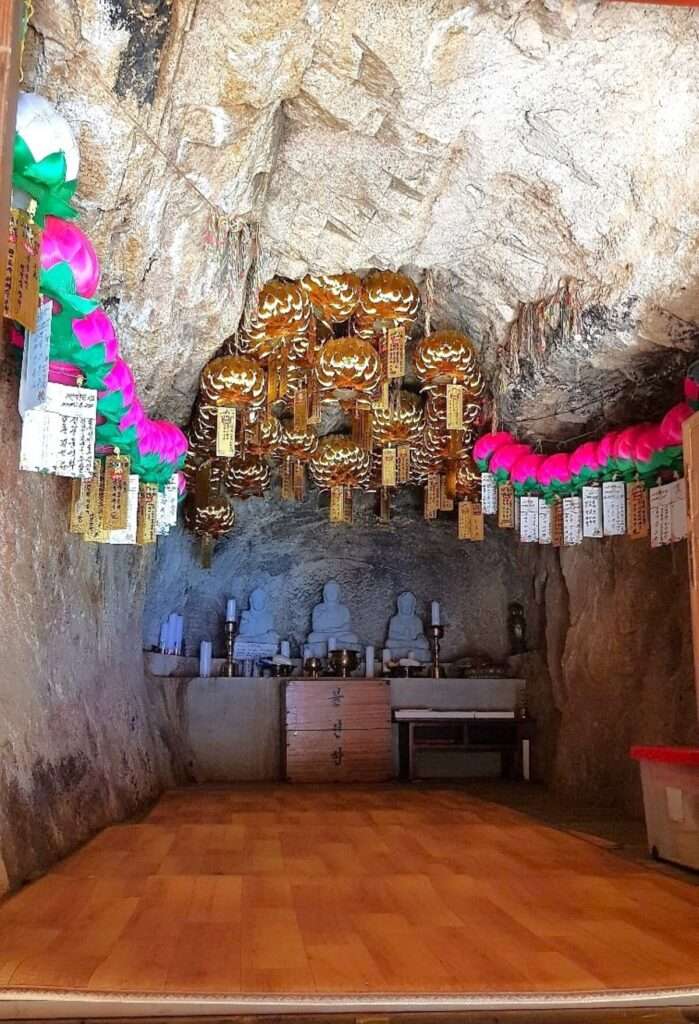
The hike itself takes about 1-2 hours depending on how long you stay to explore the cave.
Once you’re there, you get amazing views of the surrounding valley, especially if you visit during the Seoraksan National Park in the fall when the trees are bursting with color.
Naksansa Temple
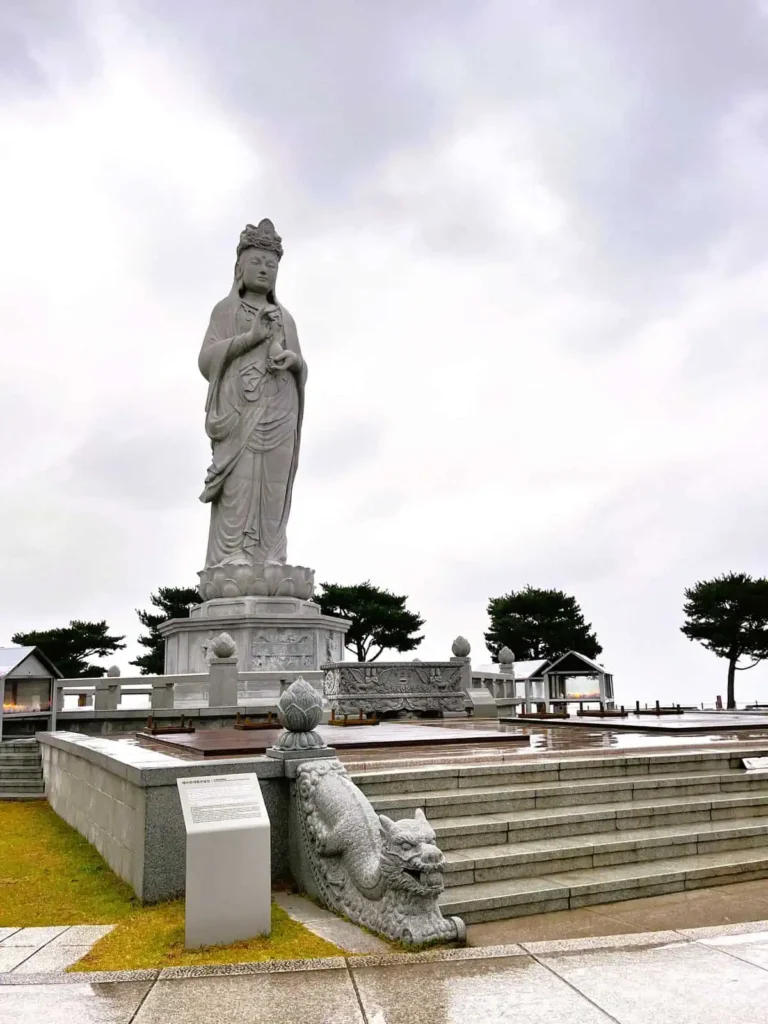
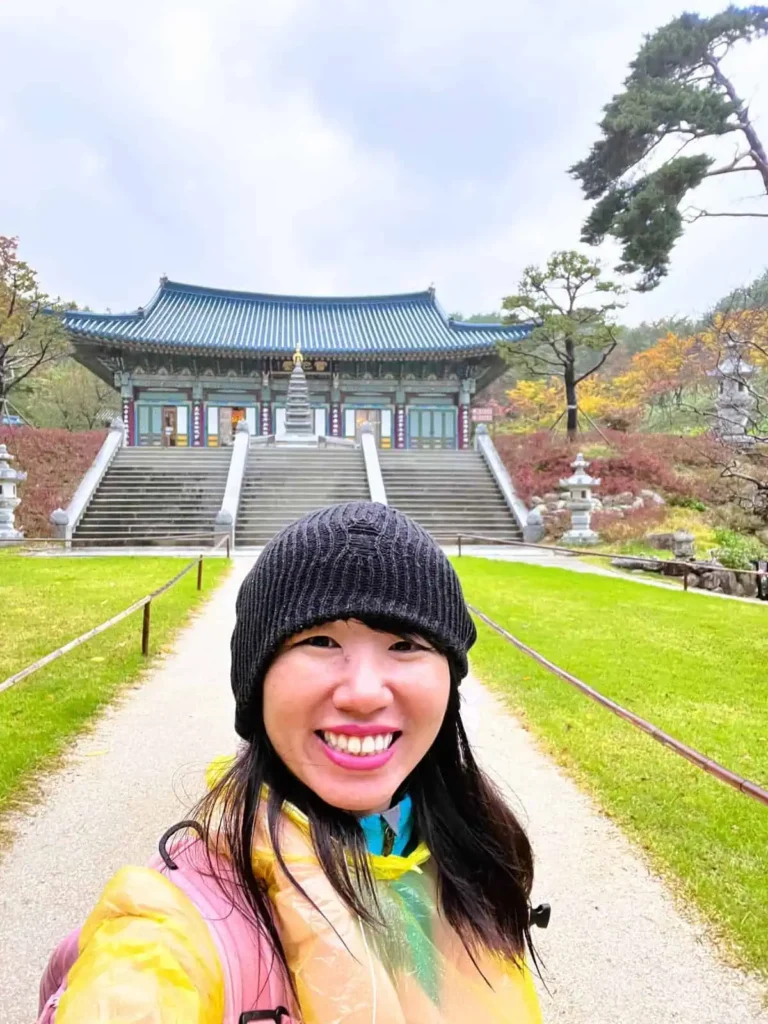

Naksansa Temple is one of the most famous temples near Seoraksan and Sokcho, only about 30 minutes away by car. It sits on a cliff by the sea, with peaceful views.
The temple dates back over 1,300 years and is known for its beautiful setting and the massive white statue of the Bodhisattva of Mercy, called Haesugwaneumsang, which stands 15 meters tall and overlooks the East Sea.
The name “Naksansa” means “temple where the Bodhisattva of Compassion dwells.” They also have a Naksansa Temple Stay program.
We enjoyed walking through the peaceful grounds, and climbing the stone steps to the statue.
If you’re already in Seoraksan, this little side trip to Naksansa temple is worth it.
Where to Eat in Seoraksan
There are plenty of cafes and restaurants in Seoraksan National Park, all near the main entrance.
You’ll find about 20 restaurants and 5 cafes spread out near the main entrance to some right before the trails.
Seoraksan Food Options
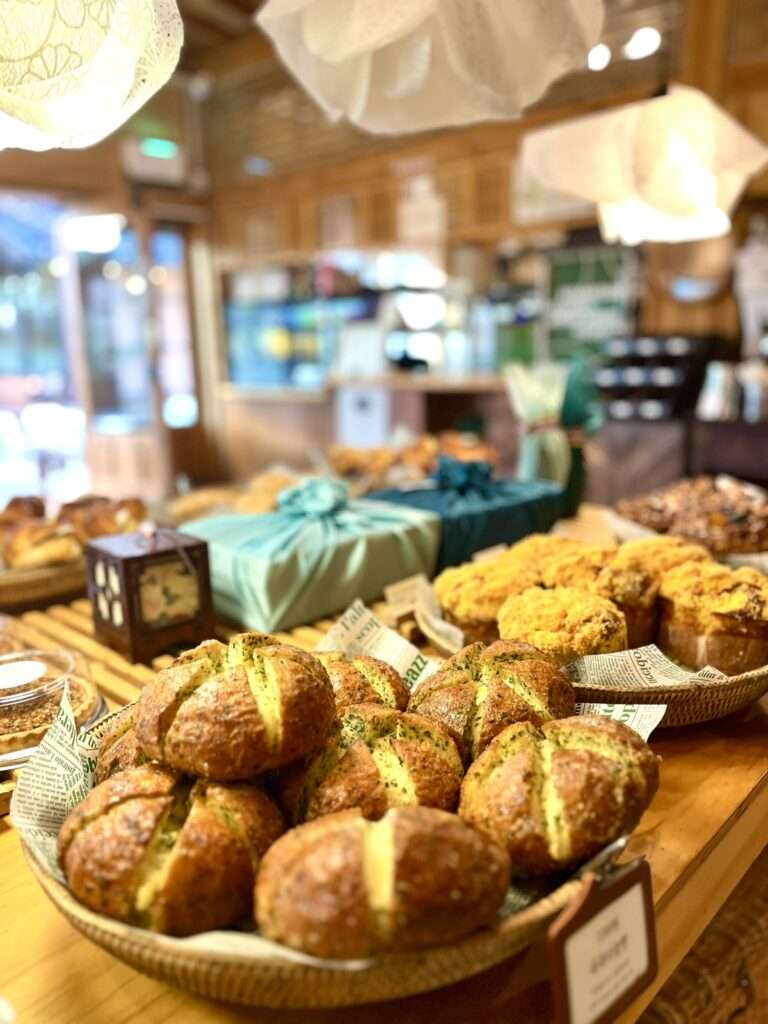
Right outside the park entrance, there’s also a small village with lots of local restaurants and food stalls.
It’s not fancy, mostly mom and pop stalls, but it’s quick and easy. Most places are open from morning until early evening.
One of the most popular dishes is sanchae bibimbap—a warm bowl of rice with fresh mountain vegetables.
You’ll also find makguksu (cold buckwheat noodles), pajeon (Korean pancakes) from Biseondae, and hot soups like doenjang jjigae and haejangguk.
All the options we saw were Korean. For international options, you’d have to go to Sokcho.
Inside the park, we loved the honey ginger drink from Dahyang. You can also get jujube tea and a variety of healthy traditional Korean drinks from Seolhyang.
That said, this area can get VERY crowded in peak season, and to be honest, we didn’t find the food to be the best quality.
We’ll share my top Seorak restaurant and cafes in a bit.
We recommend packing your own snacks—sandwiches or bread to enjoy on the trail are a great option.
Then, after your hike, take a bus or taxi back to Sokcho for better dining choices.
Best Seoraksan Restaurant

Our favorite restaurant near Seoraksan (10 minutes drive or 15 minutes bus ride from the main entrance) and in Sokcho was Matsu.
Matsu is a total hidden gem of an Italian restaurant with romantic Switzerland cottage vibes!
Who knew such a cute restaurant was near Seoraksan.
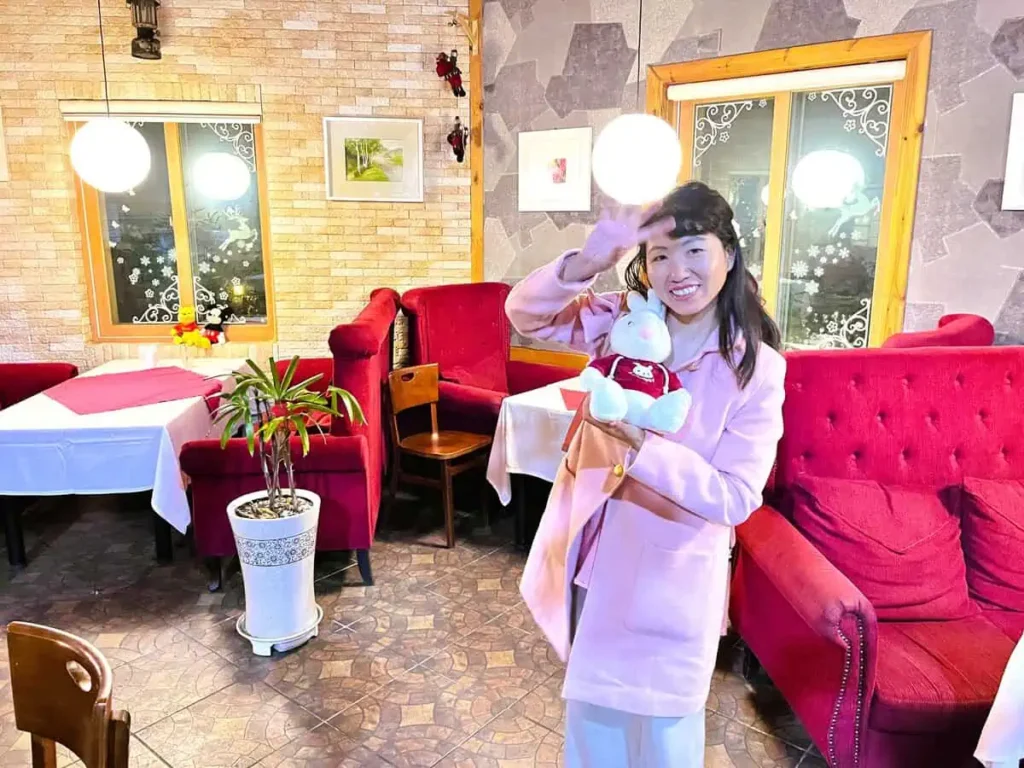
They serve delicious vegetarian and non-veg meal sets, in a great ambiance. Perfect for date night!
It completely delighted us in the best way though keep in mind it’s Korea’s version of Italian food.
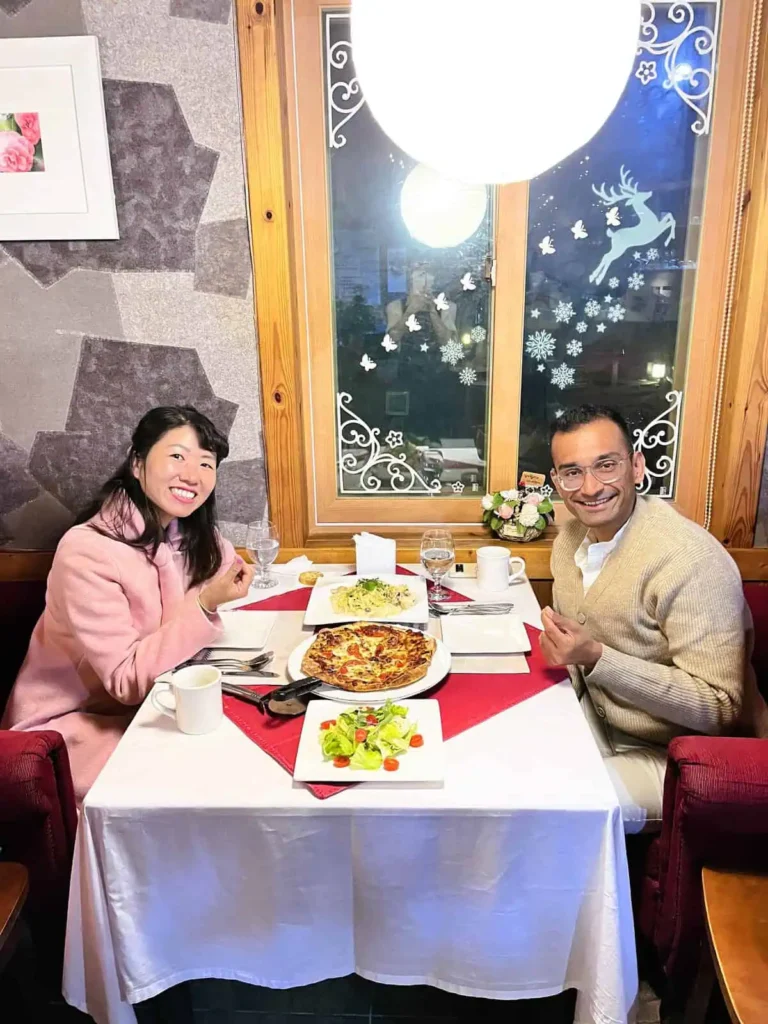
We love Korean food but honestly—but we also love diverse food. After one week in Seoul with traditional Korean food, we were so excited to find an Italian restaurant in Seoraksan!
Best Seoraksan Cafe
We were so surprised by how amazing the cafes nearby Seoraksan were. Two of our absolute favorite? Seoraksan-ro Cafe and Hadomun.
Seoraksan ro Cafe
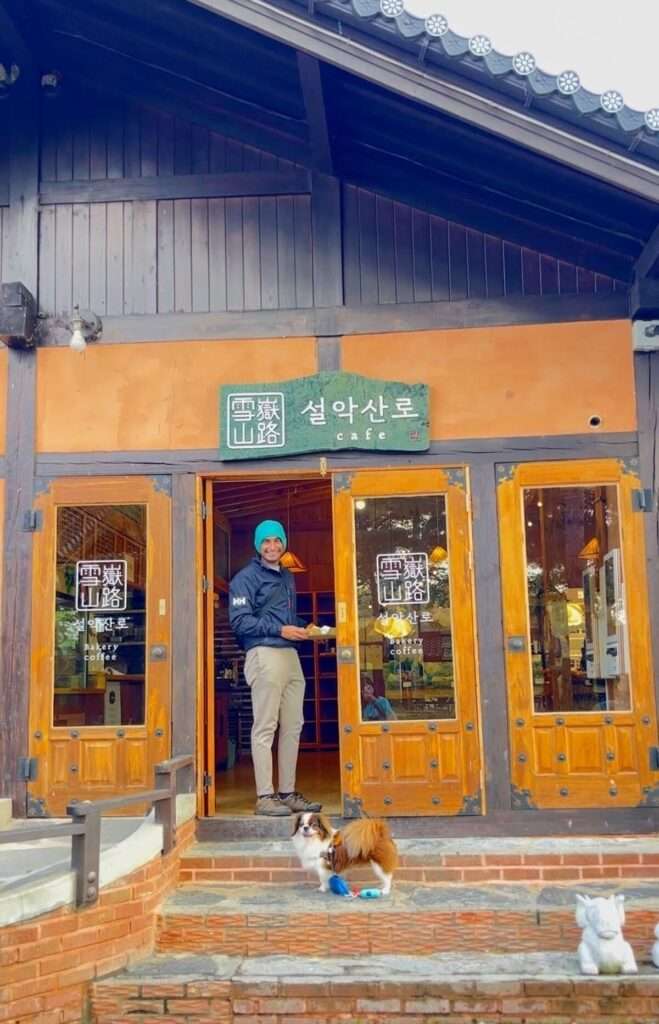
Seoraksan ro Cafe was a total dream—we couldn’t ask for a better ambiance than this.
Deeshen loves cafes Thanks to his friend Darshik who shared his love of cafes with us.
Good drinks, beautiful indoor and outdoor seating, good food, and the most delicious baked goods!
Their baked goods were unreal—so fresh, unique, and full of flavor. We got a garlic bread, walnut pumpkin bread, and hot jujube tea.
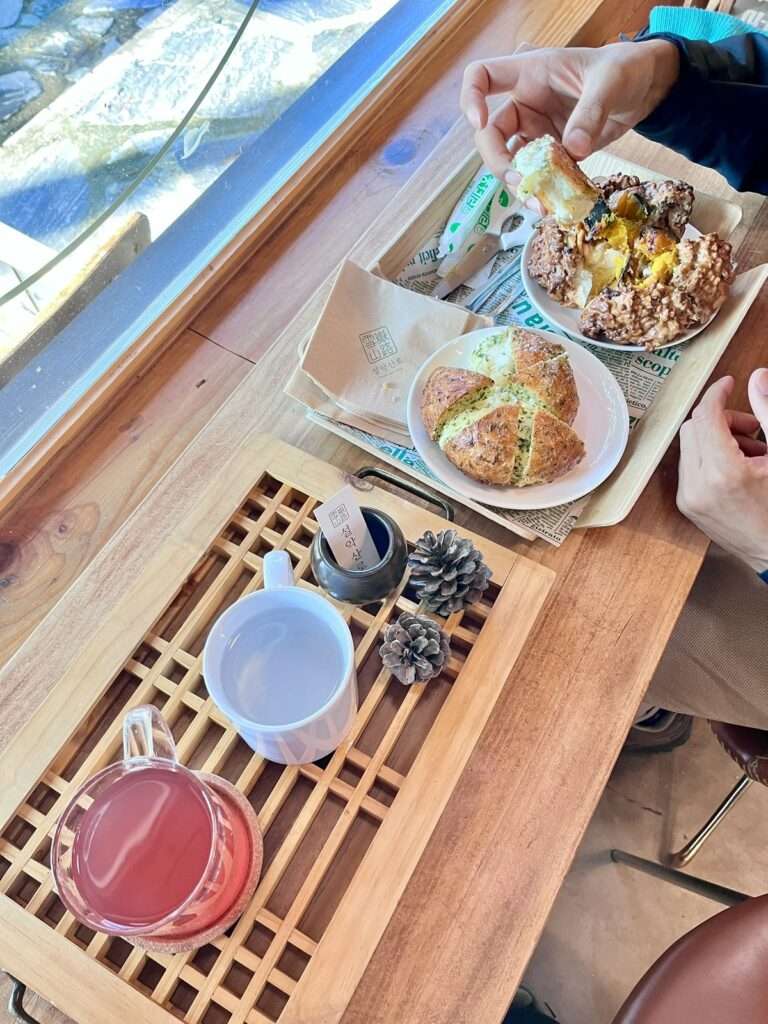
Just look at that beautiful deliciousness! I wish we could teleport back to this cafe right now. 🙂
Seoraksan ro Cafe quickly became one of our favorite bakery cafes anywhere in the world.
The vibe was cute, quaint, woodsy and perfect for unwinding after a glorious Seoraksan hike.
Hadomun Cafe
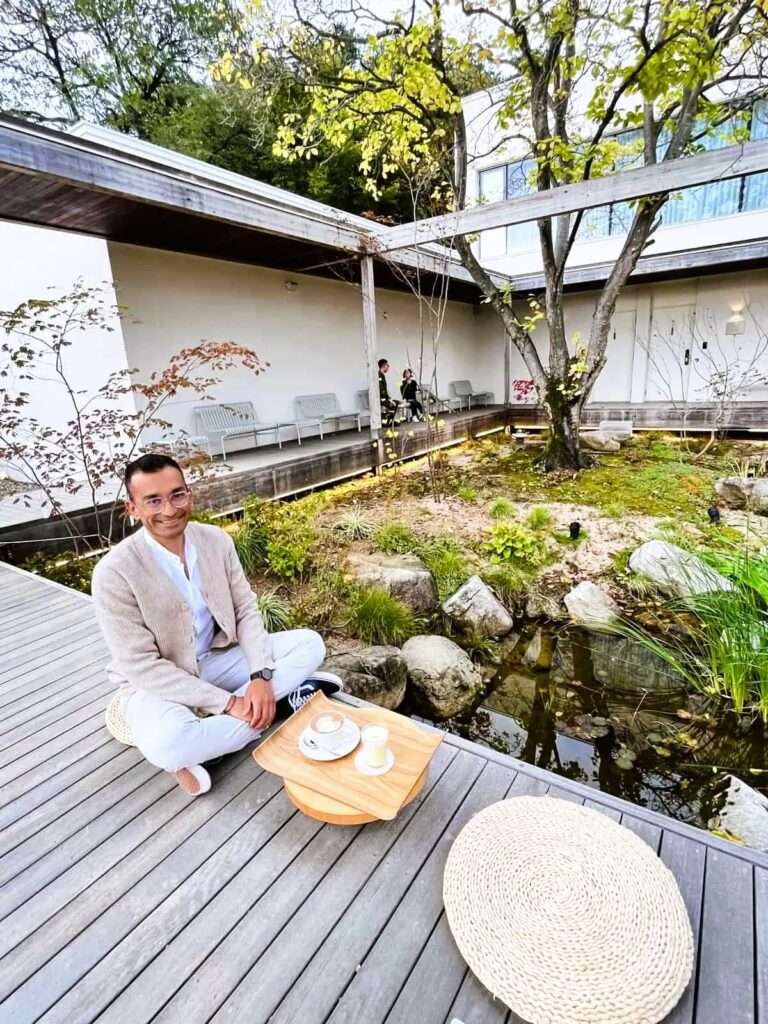
Hadomun Cafe had a totally different feel—sleek, modern, and super stylish.
The coffee was fantastic, and we loved sitting outside by the little pond. It felt peaceful and designed with so much care that we honestly didn’t want to leave.
So yes—while you can grab a quick basic meal at the park entrance, the real food magic is just outside the gates and in Sokcho.
Definitely worth making time for!
Seoraksan Park Opening Hours and Seasonal Changes
Seoraksan National Park is open every day of the year, typically from 6:00 AM to 8:00 PM.
The Gwongeumseong Fortress Cable Car usually operates from 9:00 AM to 6:00 PM, though hours can vary by season and weather. Always check the latest schedule at the park entrance or online.
Here’s some good news—you no longer need a national parks pass to visit! It’s completely free to enter. If you’re driving, though, parking fees still apply, so bring some Korean won or be ready to pay with a local card at the parking booth.
There’s also are no physical gates, so you can technically come earlier and walk in.
In winter, trails may close early or temporarily due to snow and ice. It gets cold—temperatures can drop to 10°F (-12°C) or lower—so be prepared with the right gear. Always double-check trail conditions before you go.
If you’re not driving, Bus 7 and 7-1 are the main local buses from Sokcho that head straight to Seoraksan. The earliest buses typically start around 6:30 AM and reach Seoraksan by 7:10AM, and come every 15 minutes, depending on the season and day of the week.
We recommend catching one of the morning buses to beat the crowds and enjoy the stillness of the morning trails.
On our trip, watching the sunrise over the mountains from the first trailhead felt like stepping into another world!
Other Must-See Attractions in Seoraksan National Park
Seoraksan has amazing hikes—but there are also beautiful temples, peaceful sights, and unique things to do.
In this section, we’ll share some of our favorite spots like Sinheungsa Temple, a hidden gem Seoraksan temple, and Heundeulbawi Rock that made our visit even more meaningful and fun to explore!
Sinheungsa Temple
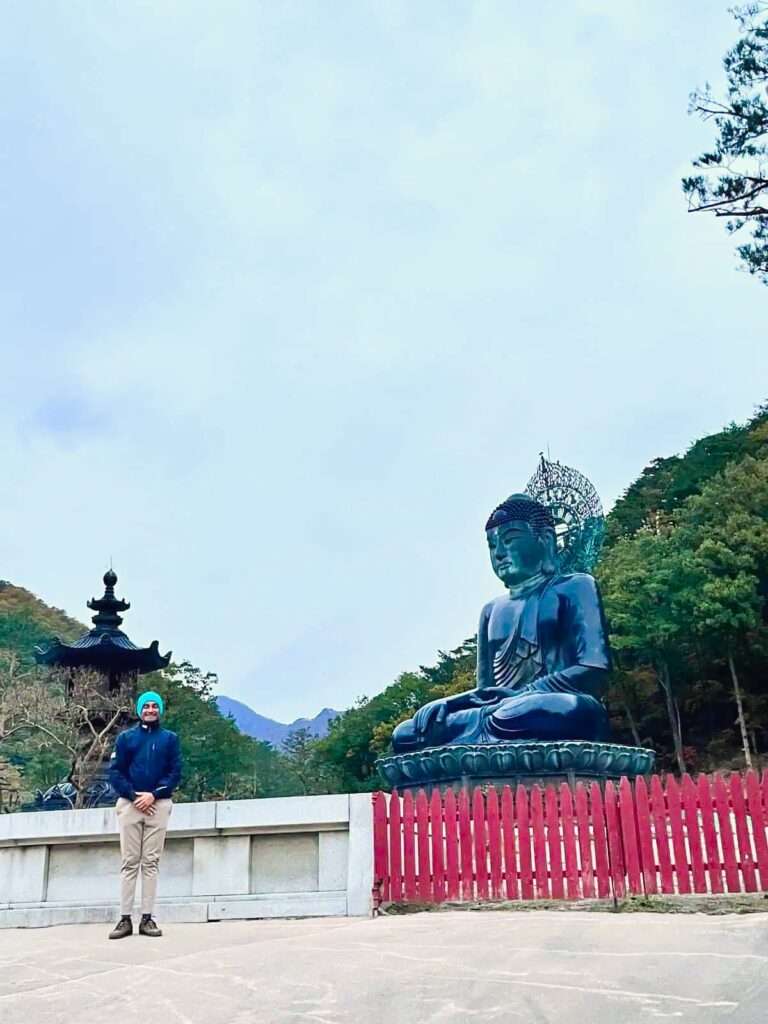
Sinheungsa Temple is a famous and beloved spot in Seoraksan National Park that draws visitors from all over the world.
Located just a short distance from the park’s main entrance, it’s easy to visit and truly worth the stop.
The temple, which dates back to the 7th century, is dedicated to the Buddha of the Future. The name Sinheungsa translates to “sacred and eternal.”
What makes Sinheungsa so special is its massive Bronze Buddha Statue, standing at 14 meters tall. It’s one of the largest Buddha statues in Korea and called the Great Unification Buddha Statue.
Legend says the Buddha was placed here to protect Seoraksan, and you can truly feel the calm, grounding energy it brings to the entire area.
Seeing the statue with the dramatic peaks of Seoraksan in the background is awe-inspiring—it’s a beautiful spot to pause and reflect.
If you’re interested in Buddhism, Sinheungsa Temple also has a Temple Stay Program, where you can stay overnight and learn about daily Buddhist life.
This is a unique opportunity to experience the quiet, contemplative life of a monk—meditating, chanting, and connecting with nature.
We meditated on the temple grounds and would love to return one day for the full temple stay experience!
If you’re visiting Seoraksan, this temple is an absolute must-see.
Seoraksan Temple (제진언집 목판)
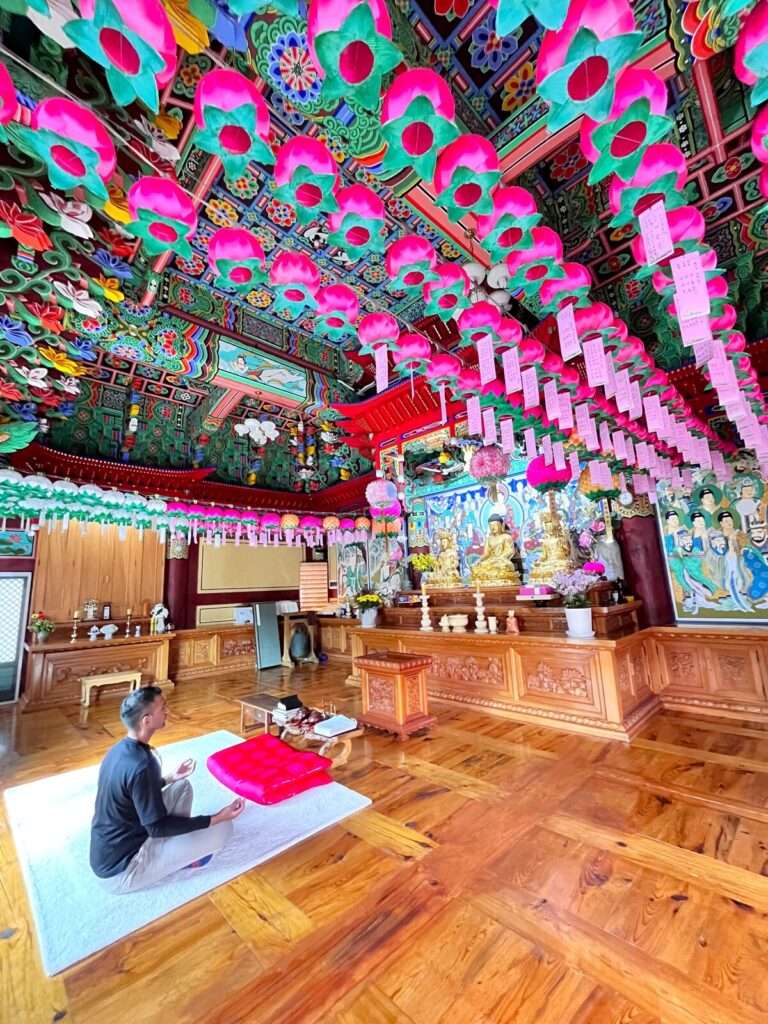
At the start of the Ulsanbawi Trail, there’s a small and humble temple called 신흥사경판 that’s easy to miss. Most hikers walked right past it.
But we were drawn in by the peaceful energy and soft Buddhist music drifting through the trees.
There’s no big statue or dramatic view—just a simple courtyard, beautiful small temple, and a calm that invites you to slow down.
We took a break there, sitting in stillness and meditated.
It turned out to be one of the most peaceful and special moments of our entire trip.
Heundeulbawi Rock
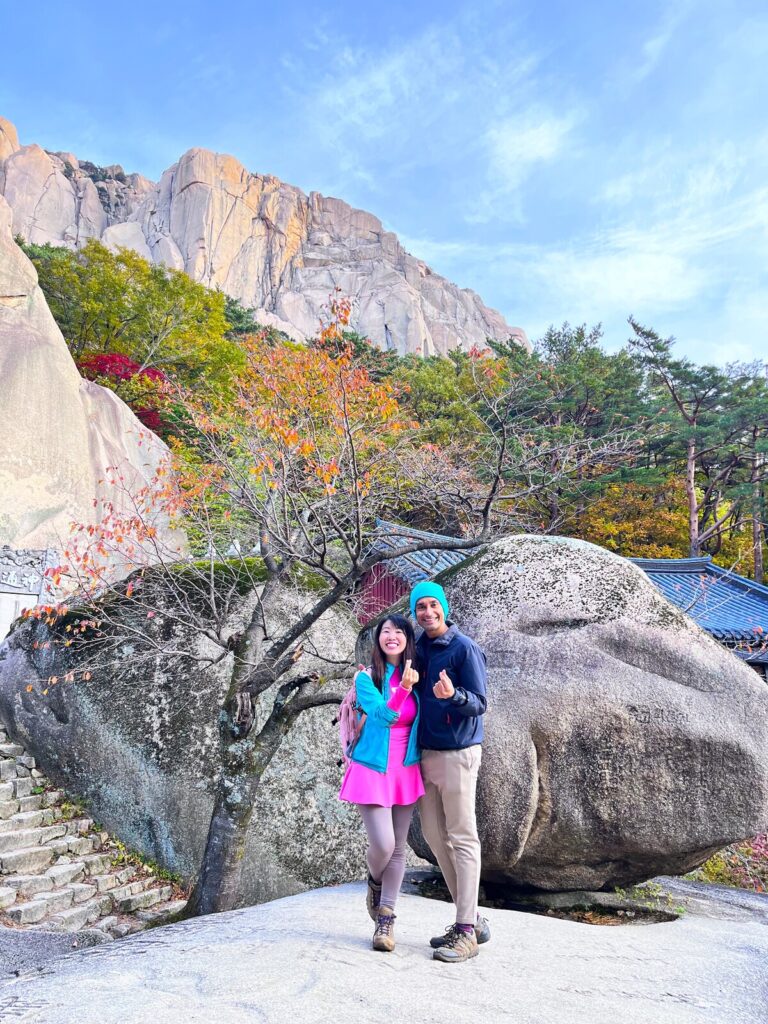
Just a short detour off the Ulsanbawi Rock Trail takes you to Heundeulbawi Rock—a perfectly round boulder so delicately balanced that it gently rocks when pushed.
Legend says it tests your sincerity, and there’s something humbling about standing before this massive stone that barely moves. It made us pause, laugh, and reflect all at once.
Even better, just behind it is a small, peaceful Buddhist temple with kind caretakers. It felt like stumbling on a quiet, sacred corner of the mountain—one of those little surprises that makes the hike even more memorable.
Tips for Visiting Seoraksan National Park
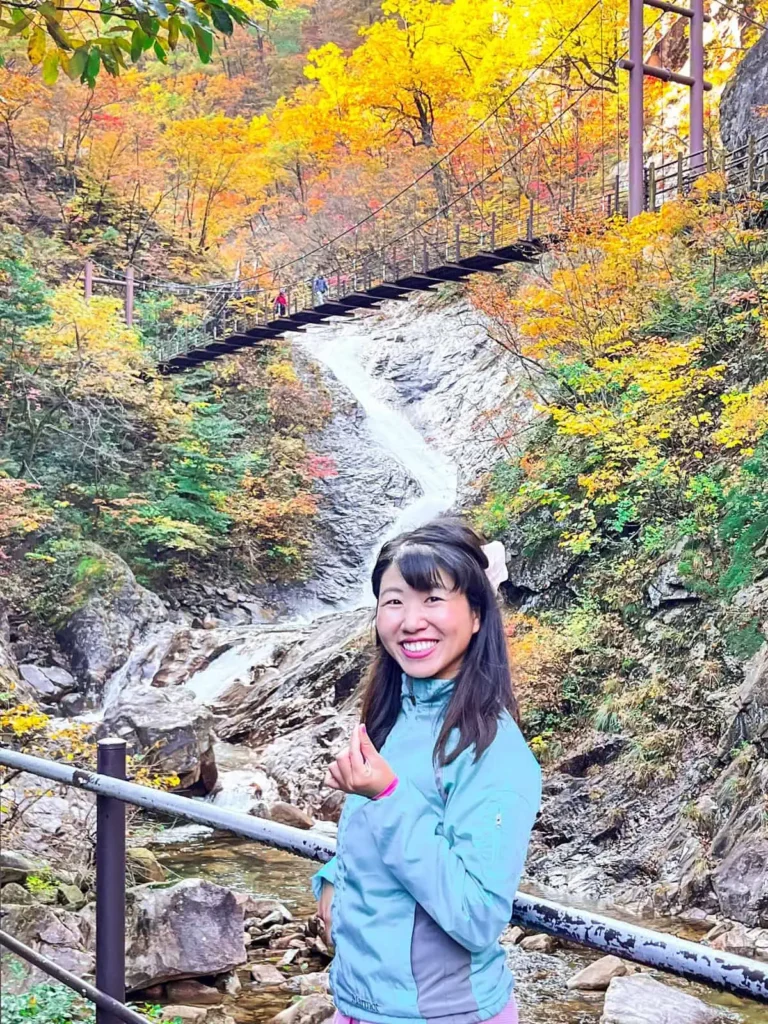
1. Book your hotels early
Seoraksan is a popular destination for locals and international travelers, especially during Seorak fall foliage season.
The best hotel near the park is Kensington Hotel Seoraksan and the best hotel in Sokcho is Homm Marina Sokcho. They fill up fast, so book your stay early—especially if you want to be close to the park entrance or near bus stops.
2. Pick your trail based on your energy and time
There’s something for everyone—from easy walks to intense summit hikes. Choose what suits your fitness level and how much time you have. Even the shorter trails offer beautiful views!
3. Dress in layers
The weather can change quickly, especially in the mountains. Mornings can be chilly, but you’ll warm up fast on the trail. Layers are your best friend.
4. Bring snacks and water
There are some food stalls near the entrance, but once you hit the trails, you’re on your own. Pack light snacks, water, and maybe a treat to enjoy with the view.
We brought bread and snacks from Paris Baguette in Sokcho the night before, and packed them to enjoy at the top of Ulsanbawi Rock Trail.
5. Don’t skip the temples
Sinheungsa Temple and nearby shrines add a peaceful, spiritual layer to your visit. They’re beautiful places to rest and reflect—and often less crowded than the popular hiking routes.
6. Respect nature and local customs
Stick to marked trails, carry out your trash, and stay quiet near temples and sacred spaces. Koreans have a deep respect for the mountains, and it’s part of what makes the experience so special.
Seoraksan National Park Frequently Asked Questions (FAQs)
Planning a trip to Seoraksan National Park? Here are some quick answers to the most frequently asked questions to help you make the most of your visit!
Is Seoraksan National Park worth visiting?
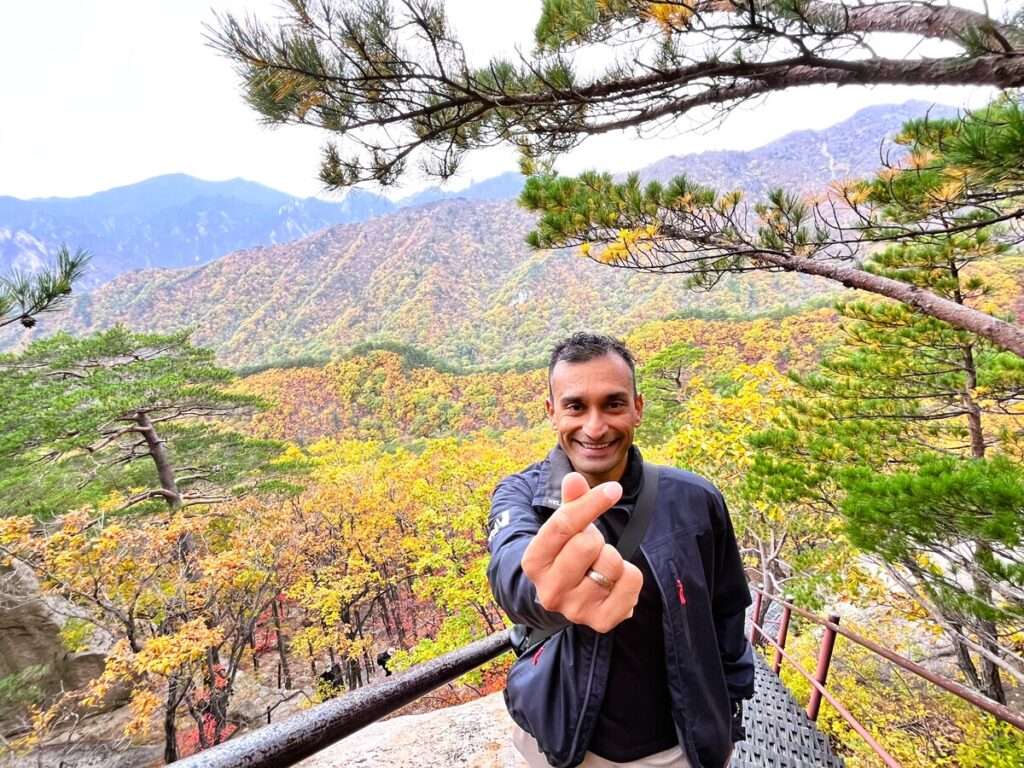
Absolutely—Seoraksan National Park is 100% worth visiting, and honestly, it became one of our favorite places in all of South Korea.
Whether you’re into hiking, stunning views, peaceful temples, or just soaking up nature, this park has something special for everyone.
We came during peak fall foliage, and it felt like walking through a dream—mountains bursting with color, waterfalls roaring from the rain, and trails that led to some of the most unforgettable views we’ve ever seen.
It’s also super accessible, whether you’re a serious hiker or just want to take the cable car and enjoy the scenery. There’s something magical about Seoraksan—it’s one of those places that stays with you long after you leave.
If you’re planning a trip to Korea and love nature, Seowraksan is a must. We’d go back in a heartbeat.
When does Seoraksan National Park close?
Seoraksan National Park generally closes at sunset, though specific hours may vary depending on the season and the entrance you’re using.
In peak months like autumn, the main entrance areas usually close around 5:00 PM to 6:00 PM. If you’re planning a hike, it’s best to start early, as some trails may have restricted access in the late afternoon for safety reasons.
What time does Seoraksan National Park open?
The park typically opens around 6:00 AM, allowing early risers and hikers to enjoy the cooler morning hours and catch sunrise views over the mountains. Entrance times may vary slightly depending on the season and weather conditions, especially in winter.
Is Seoraksan National Park free?
Yes! Entrance to Seoraksan National Park is free, but certain areas or attractions within the park—like the cable car to Gwongeumseong Fortress—do require a separate ticket.
There’s also a small parking fee if you’re arriving by car. So while you can enjoy most of the natural trails and scenery for free, budget a bit if you plan to use additional services.
How long does it take to hike Seoraksan National Park?
How long it takes to hike in Seoraksan National Park really depends on which trail you choose—there’s a wide range, from peaceful walks in forests to full-on mountain climbs.
If you’re looking for something short and scenic, Biryong Falls Trail is a great pick. It’s about 1.5 to 2 hours roundtrip and takes you through a forest, across multiple bridges, and along a river to a peaceful waterfall. It’s relaxing and family-friendly.
You can extend this trail by continuing on to the Towangseong Falls Observatory, which adds another 1.5 to 2 hours roundtrip. This part is a steep stair climb up the mountain, but the view of Korea’s tallest waterfall surrounded by fall foliage is unforgettable.
Ulsanbawi Rock Trail is one of the most famous hikes in the park. It’s about 3 to 4 hours roundtrip and includes over 800 steep metal stairs at the end. We were in absolute awe at the sweeping views over the valley and jagged peaks that feel like you’re standing on top of the world.
Geumganggul Cave is a shorter but more adventurous trail—2 to 3 hours roundtrip—with a spiritual twist. The hike climbs up to a tiny cliffside temple built into the rock, and the view from the cave feels sacred and serene.
For experienced hikers, the Seoraksan Summit Trail (Daecheongbong Peak) is the ultimate challenge. It’s 12 miles (19 km) roundtrip and usually takes 6 to 8 hours. It’s a steep, rocky climb, but standing at the highest peak in Seoraksan is a bucket-list moment.
There are also beautiful valley trails like Cheonbuldong Valley, where you can hike as far as you’d like along a river surrounded by cliffs, waterfalls, and seasonal colors—especially breathtaking in autumn.
How far is Seoraksan National Park from Seoul?
Seoraksan National Park is approximately 190 kilometers (about 118 miles) east of Seoul. By car, the drive typically takes around 2.5 to 3 hours under normal traffic conditions, and closer to 4 hours with traffic.
If you opt for public transportation, taking an express bus from Seoul to Sokcho followed by a local bus to the park entrance usually takes about 3.5 to 4 hours in total. This is by far the easiest way to go to Seoraksan.
What is the most famous park in South Korea?
The most famous national park in South Korea is Seoraksan National Park—and honestly, it completely blew us away.
Most Koreans know and love it, especially in the fall when the mountains explode with fiery autumn colors. But we were surprised that so many international travelers haven’t heard of it! Most people just visit Seoul, Busan, or Jeju Island, and totally miss this hidden gem.
Seoraksan is more than just beautiful. It’s one of Korea’s first official national parks and also a UNESCO Biosphere Reserve, filled with dramatic peaks, peaceful temples, waterfalls, and incredible hiking trails.
South Korea actually has 22 national parks, and a few others are pretty famous too. There’s Jirisan National Park, known for its misty mountain ridges and deep spiritual roots.
Hallasan National Park on Jeju Island is home to the tallest volcano in Korea, and Bukhansan National Park sits right outside Seoul, offering gorgeous views and fortress walls.
Each one has its own magic—but if you want peace, beauty, and a deeper connection to nature, Seoraksan really is something special.
Final Thoughts: Seoraksan National Park From Seoul Visitor’s Guide
We hope this guide to visiting Seoraksan National Park from Seoul has inspired you and helped you start planning your own trip.
There were so many beautiful nature hikes and temples that brought us tears of joy and memories. Consider this our love letter to Seoraksan and South Korea.
We were struck by how serene and grounding the entire park felt, with nature and spirituality perfectly intertwined.
If you’re heading there in the fall, don’t miss our guide on visiting Seoraksan in autumn —it’s a must!
If you’re exploring South Korea, you’re likely coming through Seoul. Be sure to check out our Seoul Korea Itinerary for 7 days to make the most of your time in the city.
We’d return in a heartbeat—we honestly could spend a whole month here exploring all the incredible hikes and hidden gems.
If you have any questions, feel free to reach out—we’re always happy to help!
Read more about Seoraksan and Seoul
Seoraksan National Park
- Seoraksan National Park Trip from Seoul
- Best Places to Stay Near Seoraksan National Park
- How to Visit Seoraksan for Fall Colors
- How to Get to Seoraksan from Seoul by Express Bus
Seoul and Day Trips

